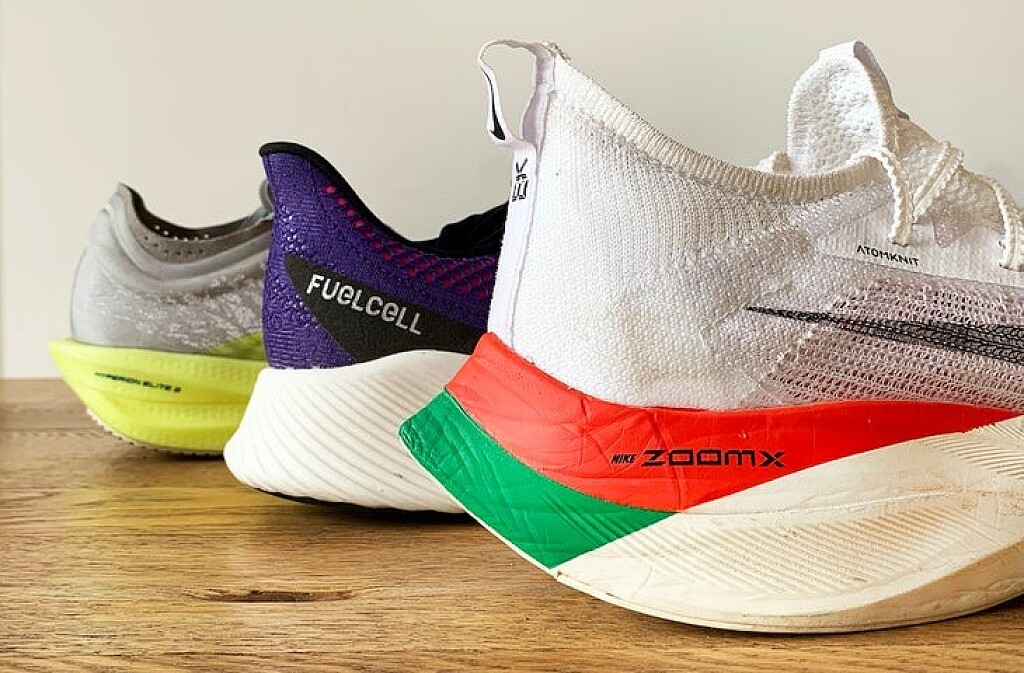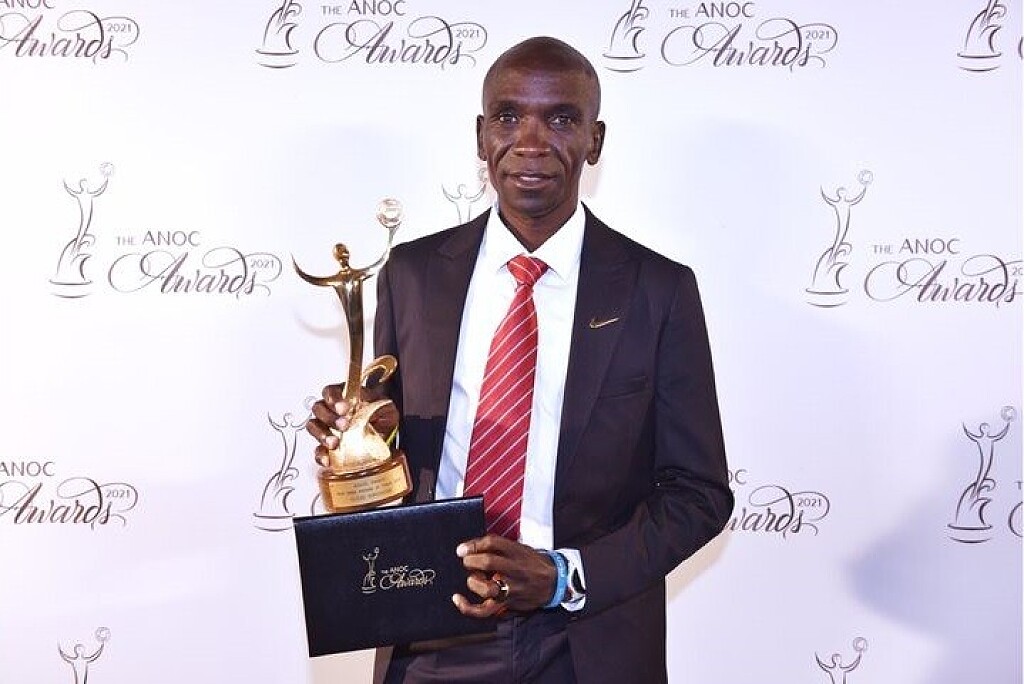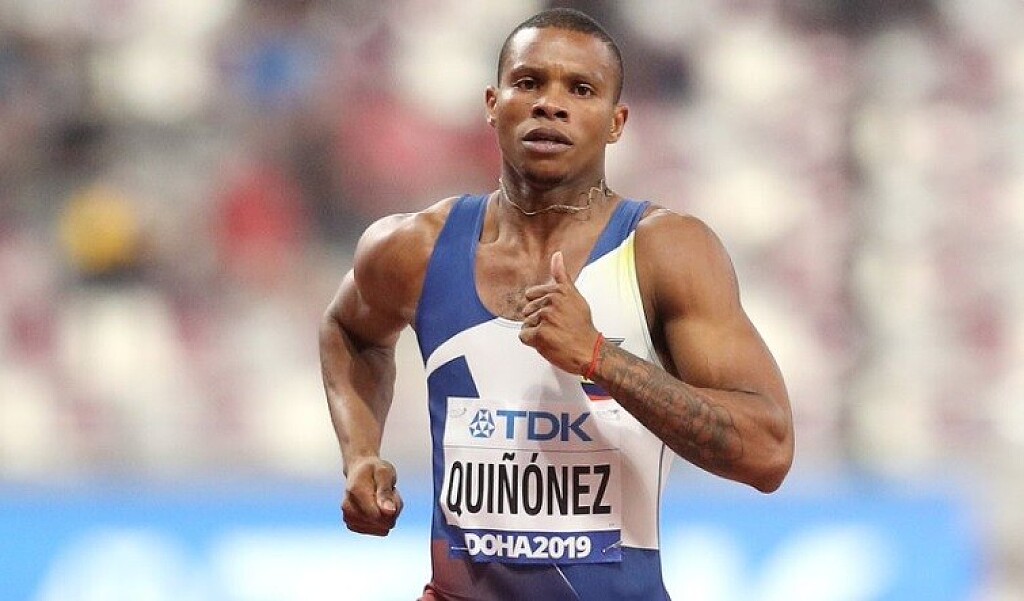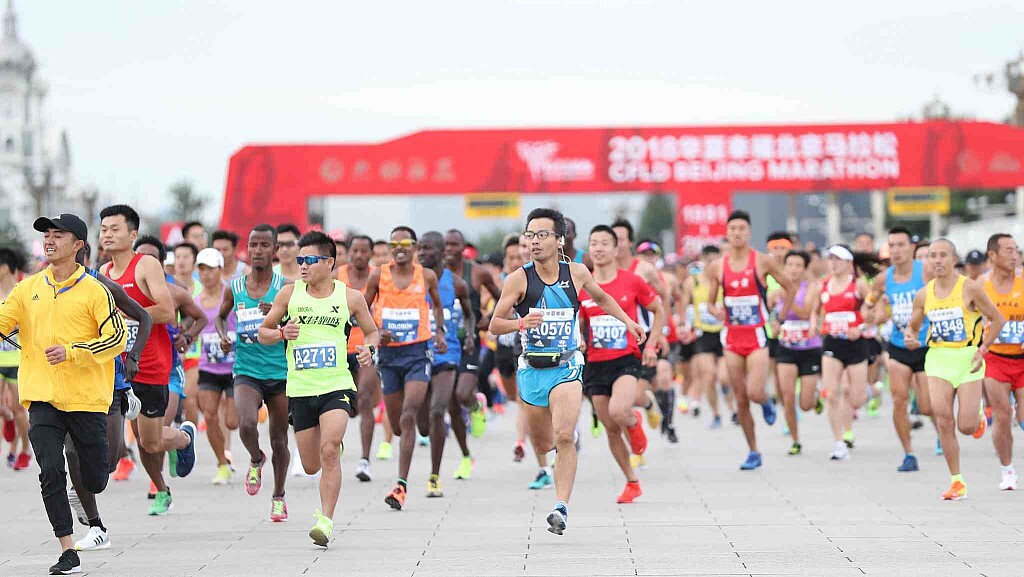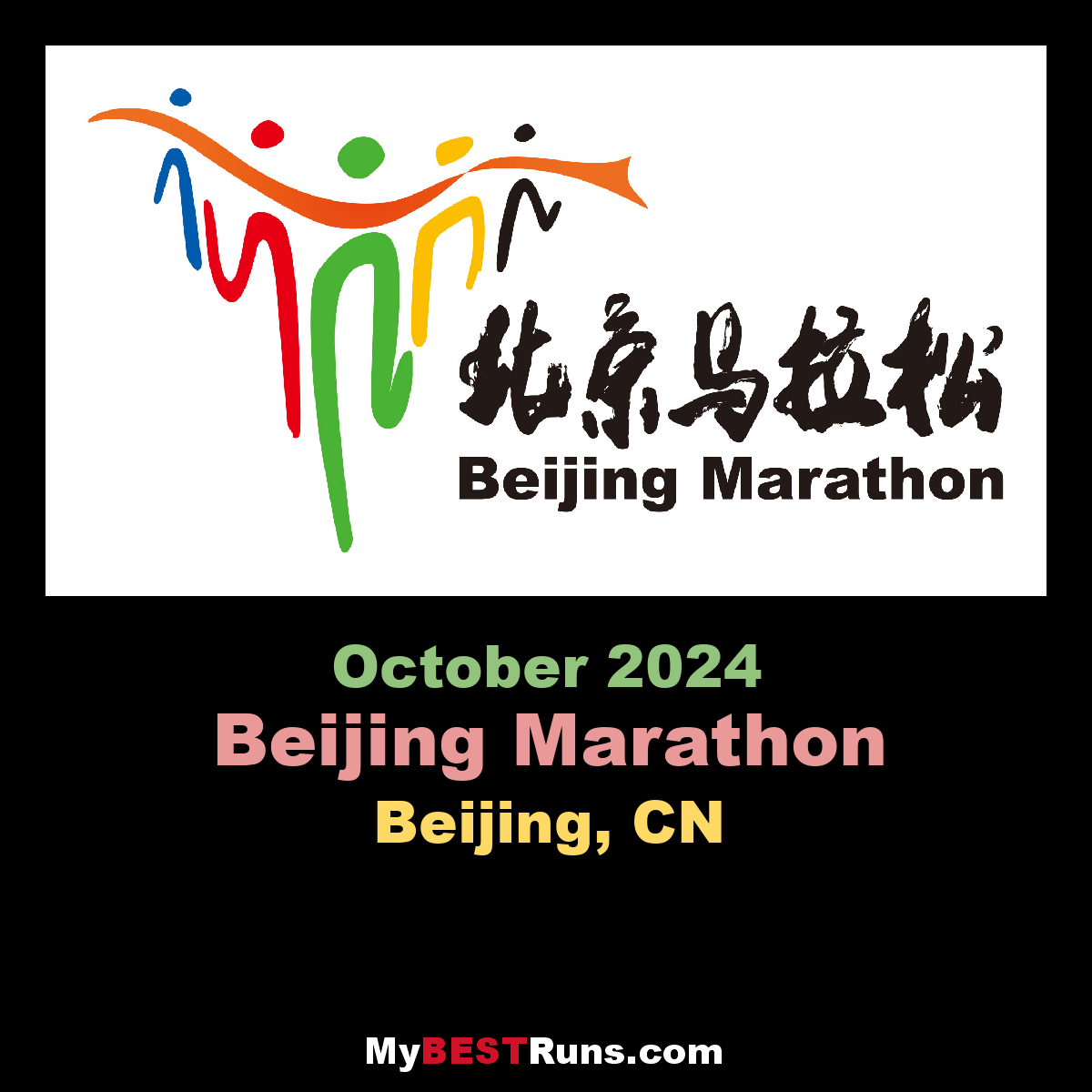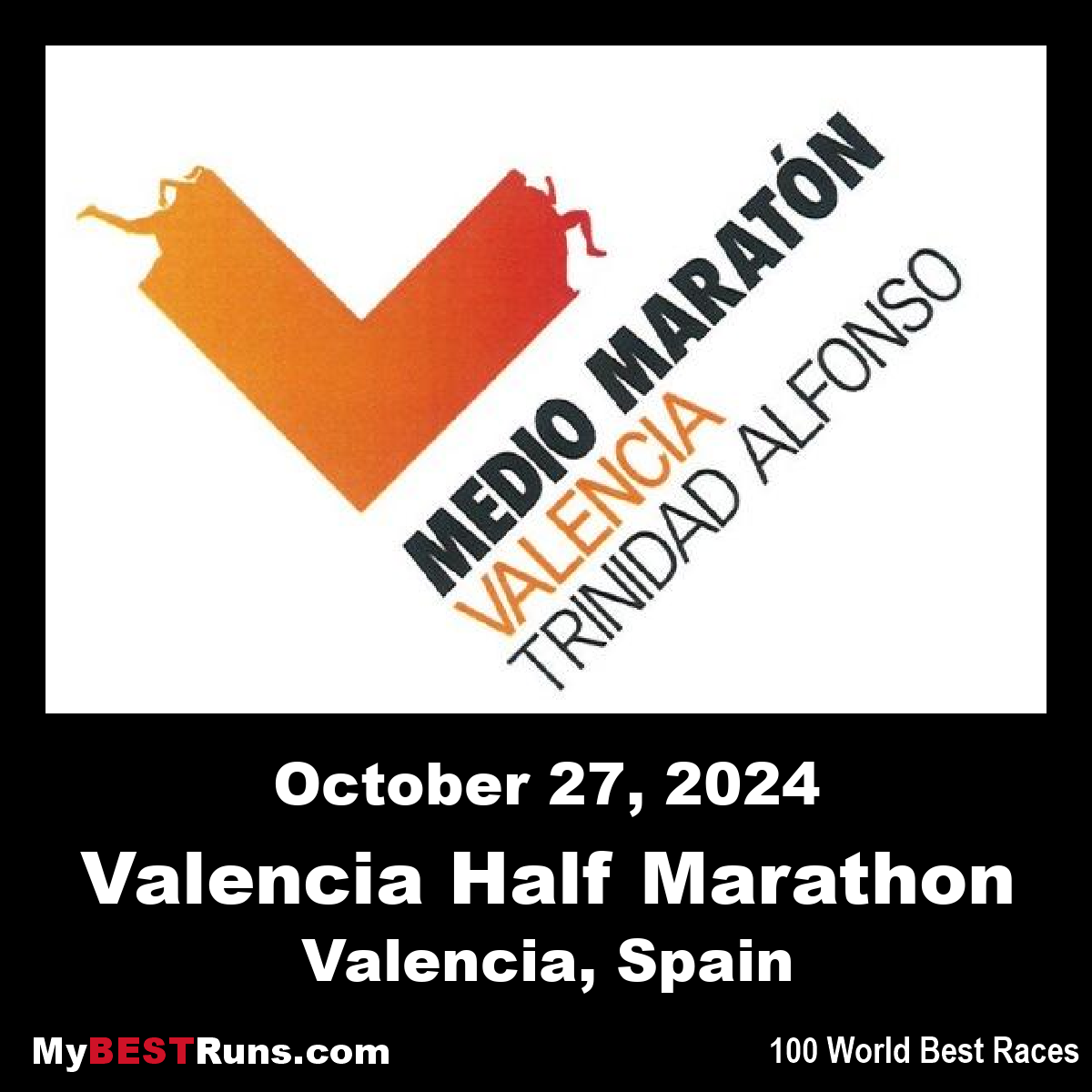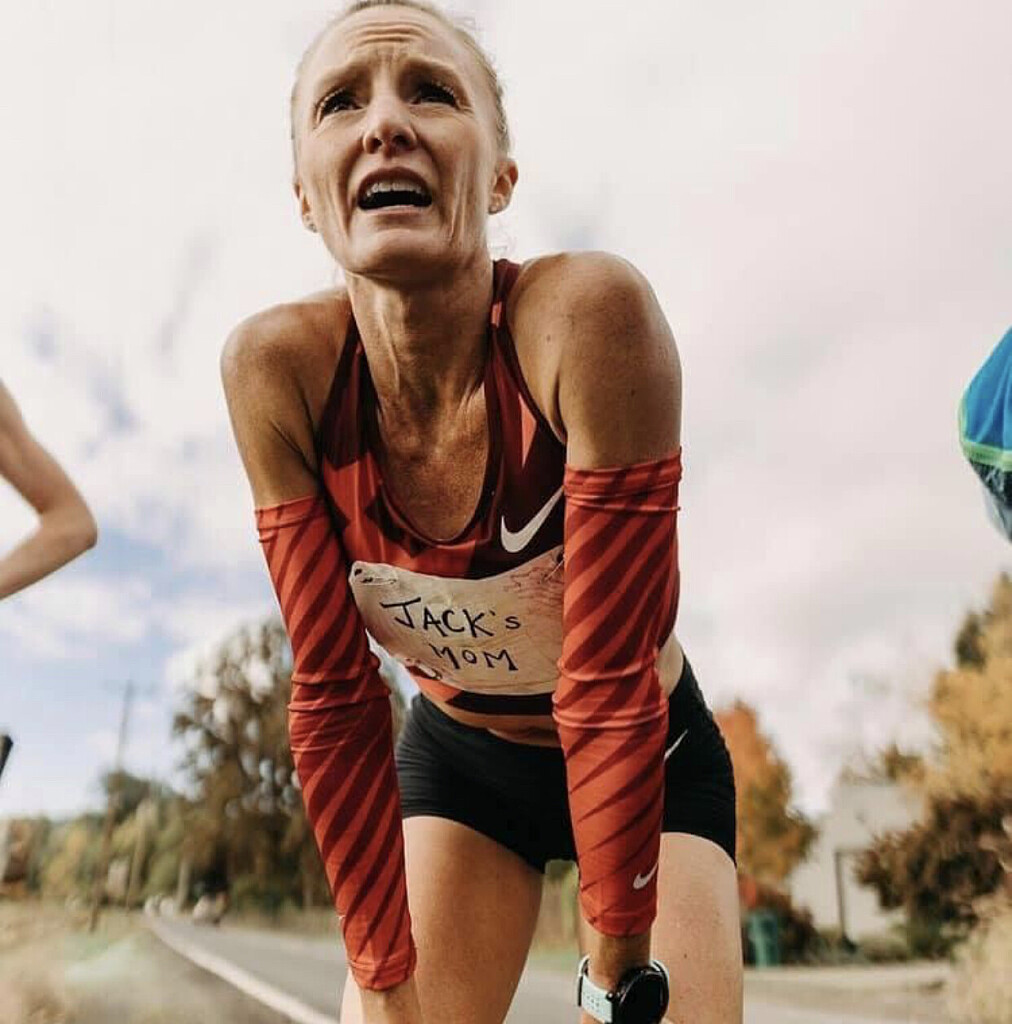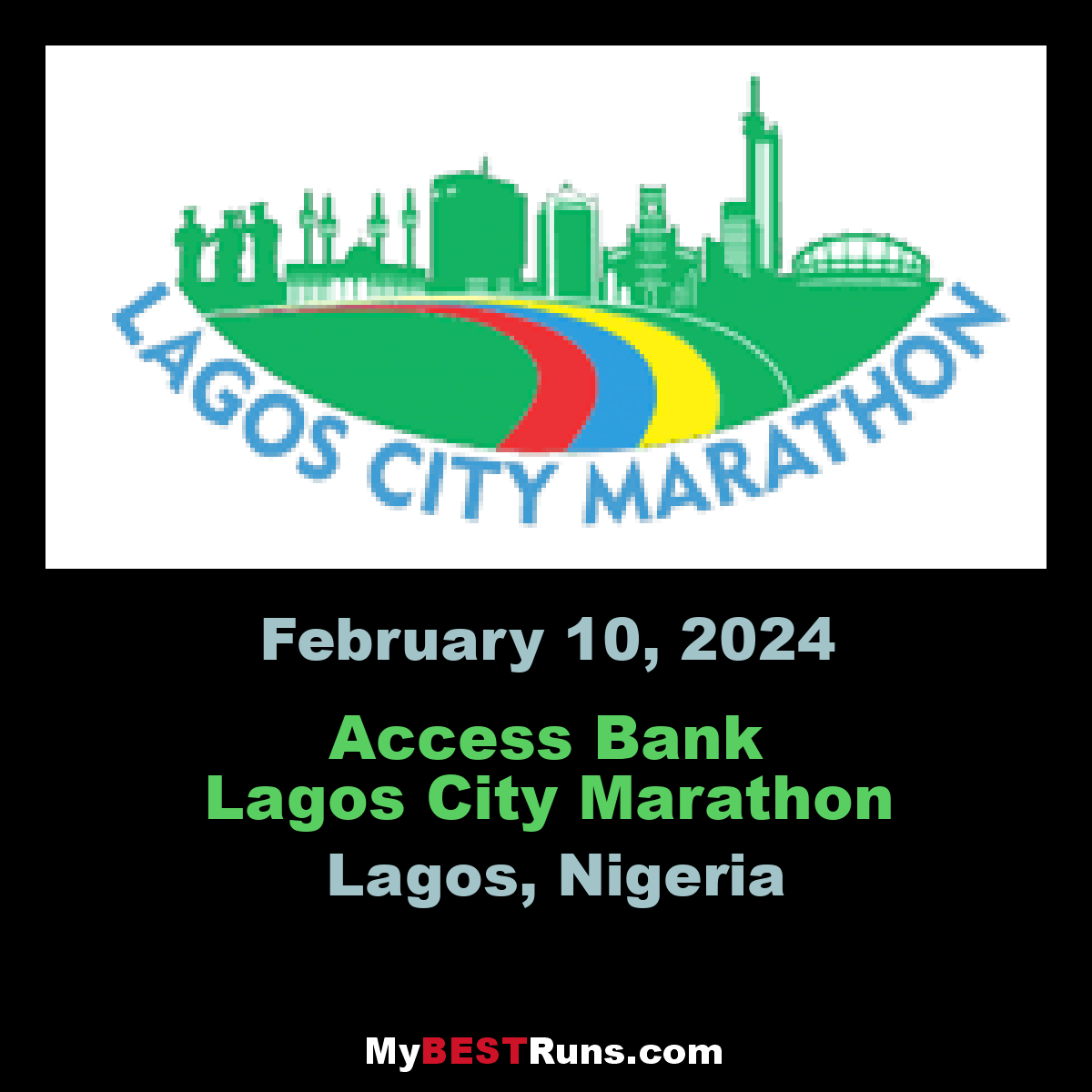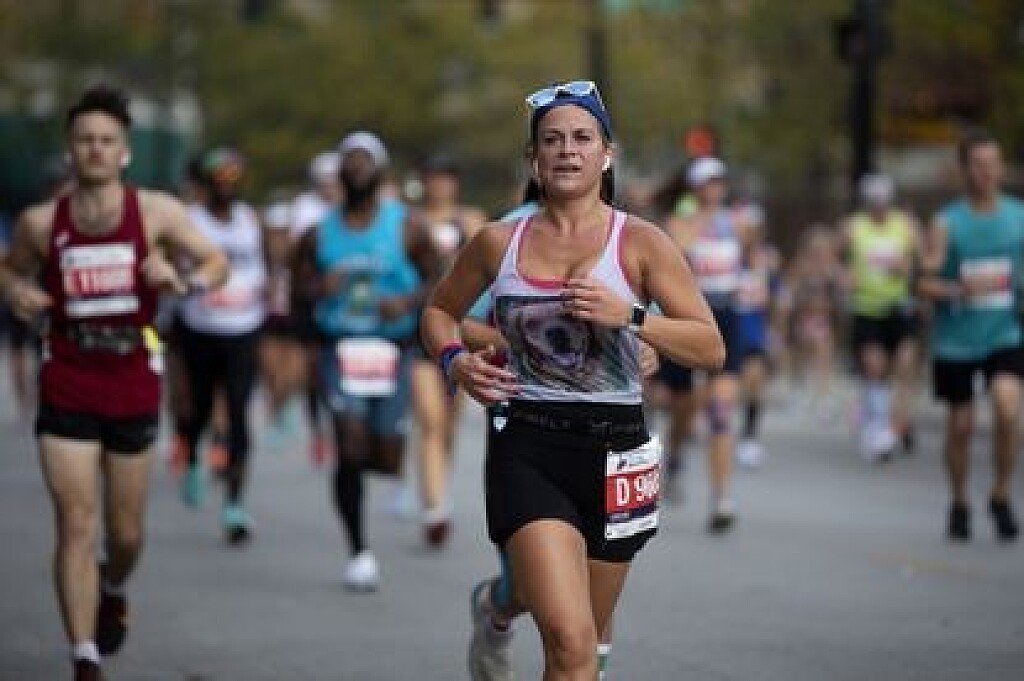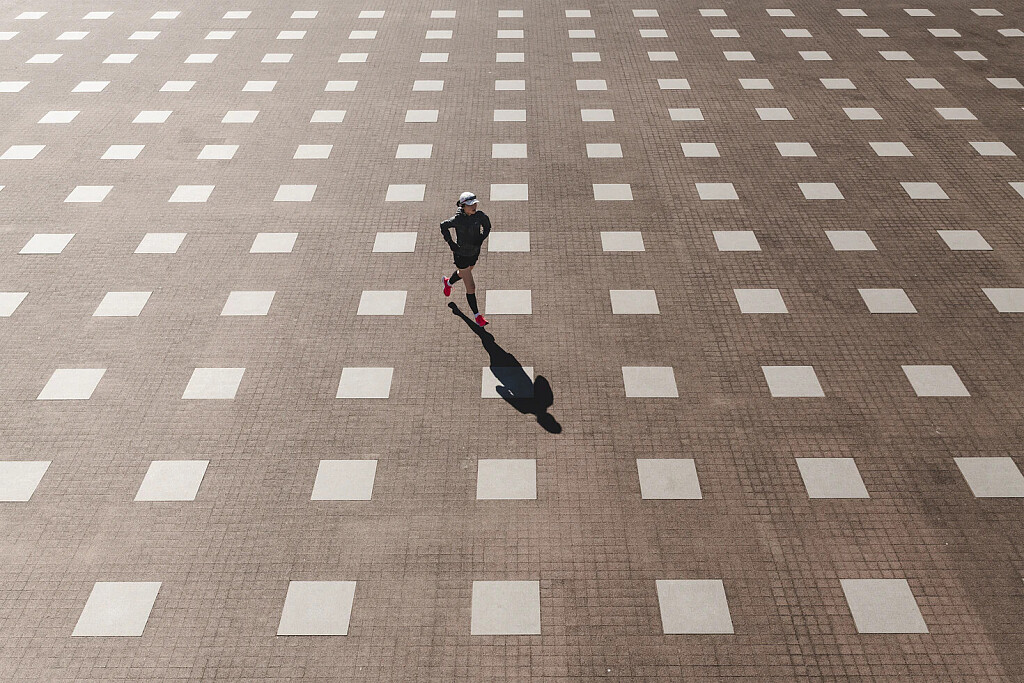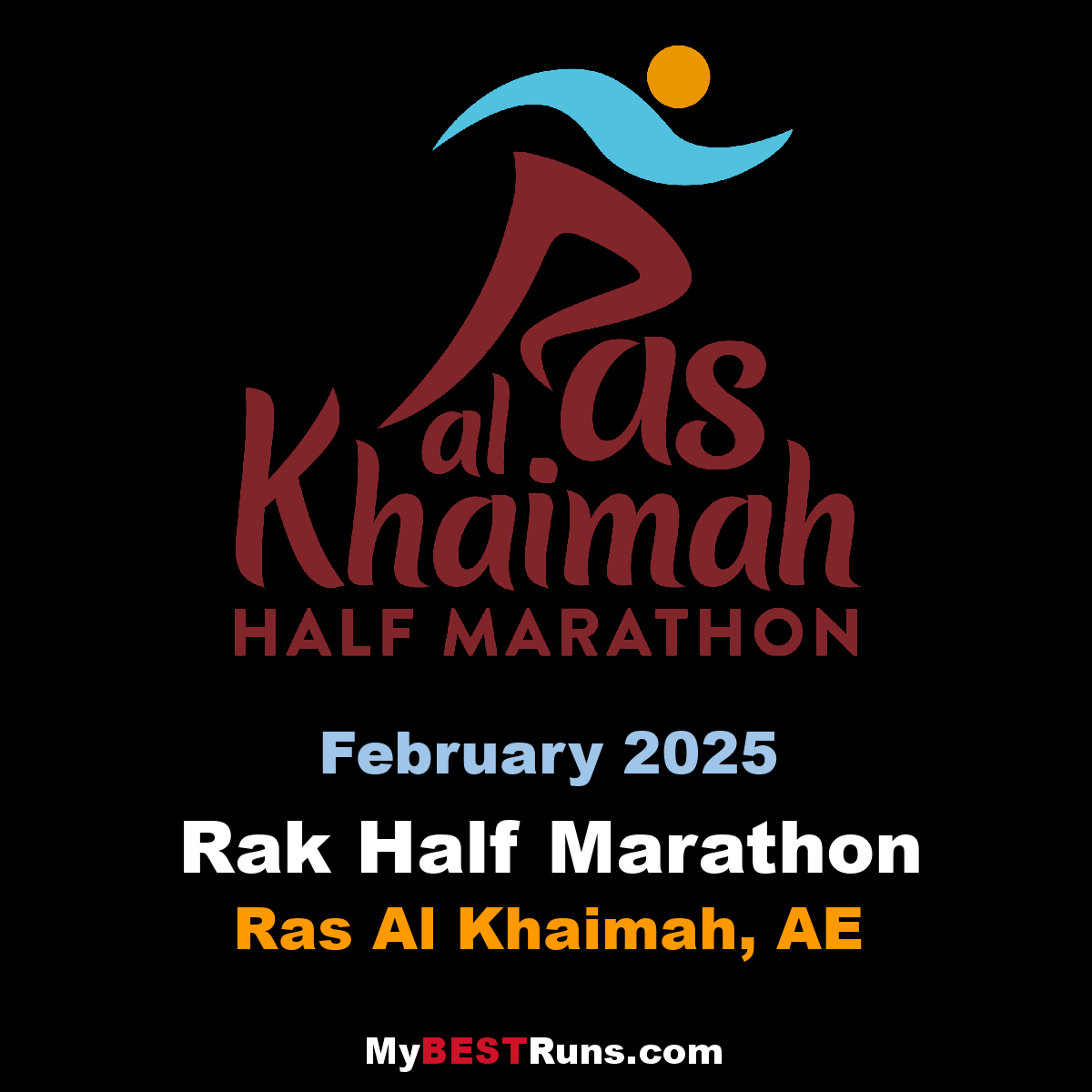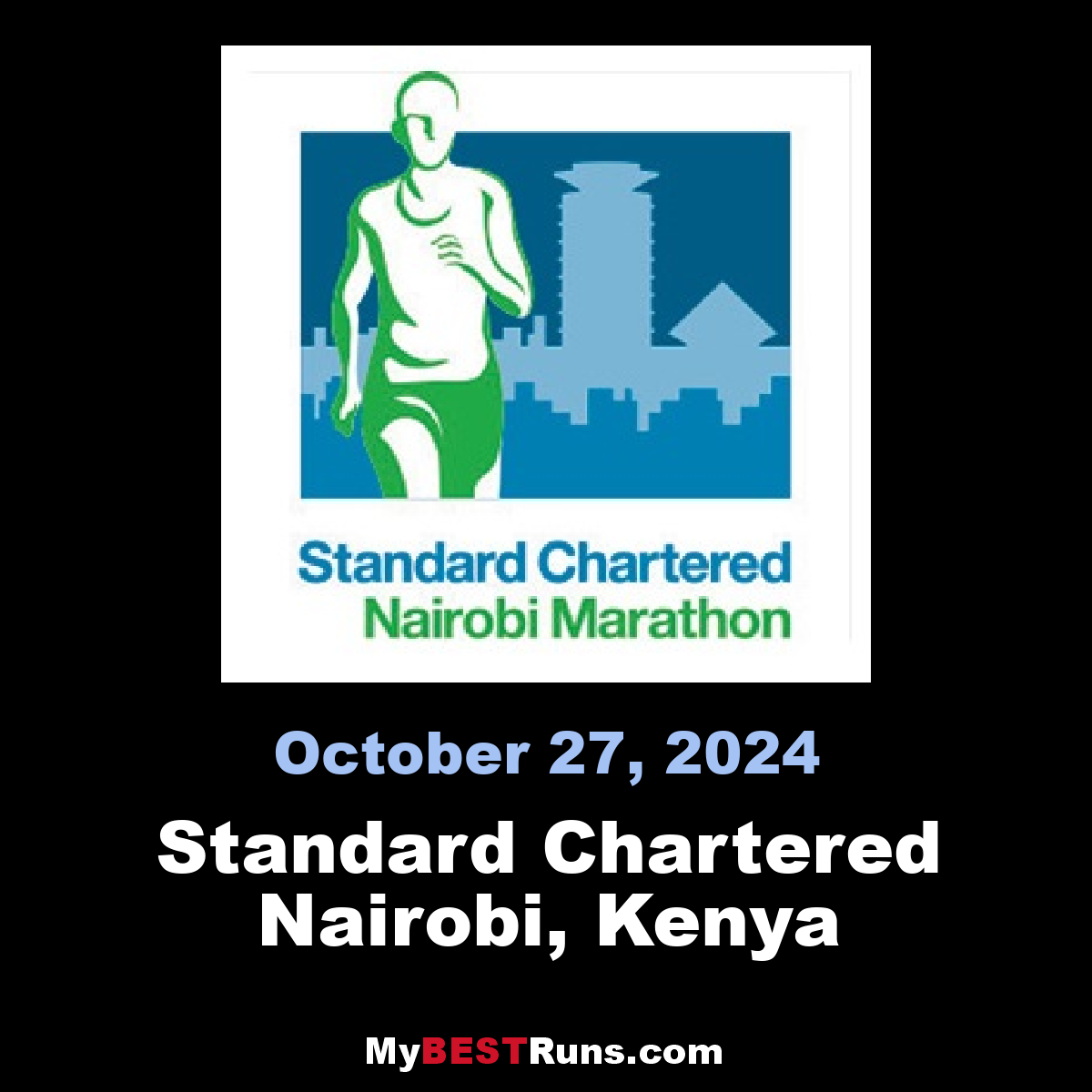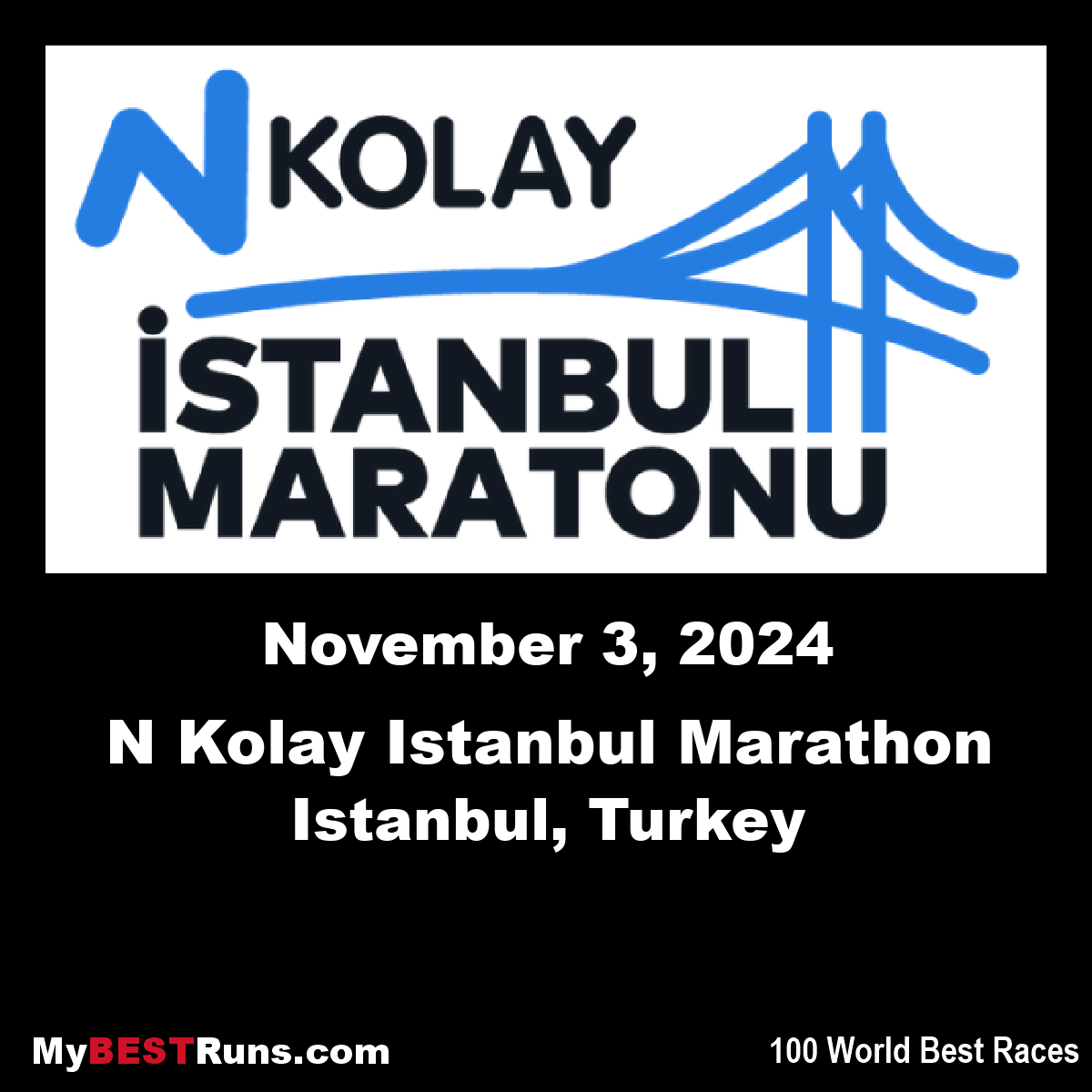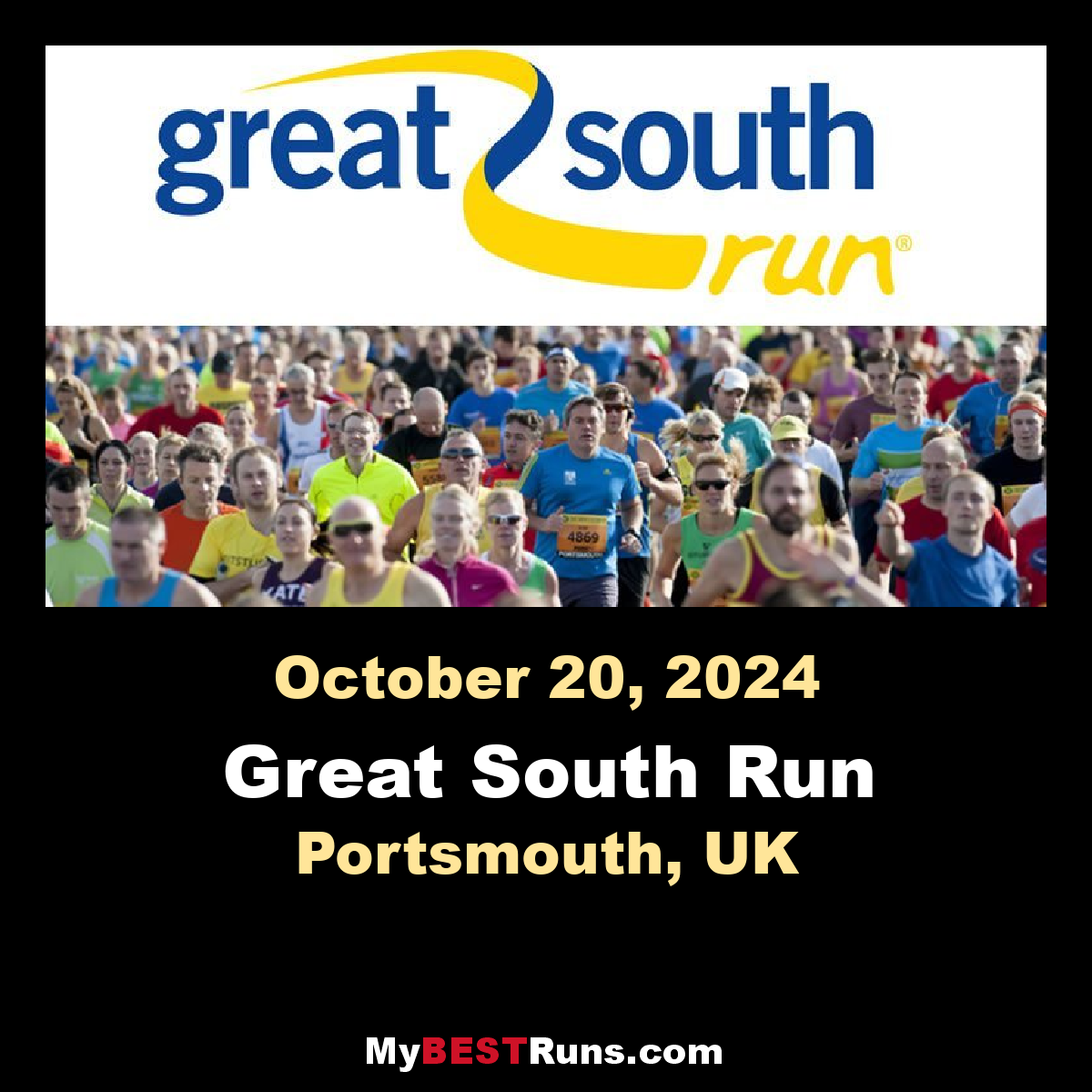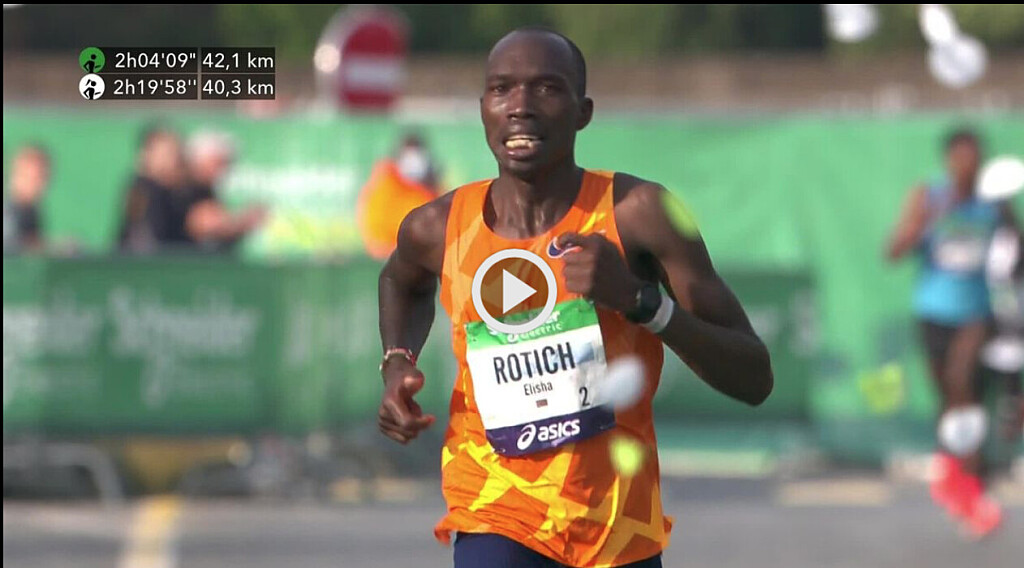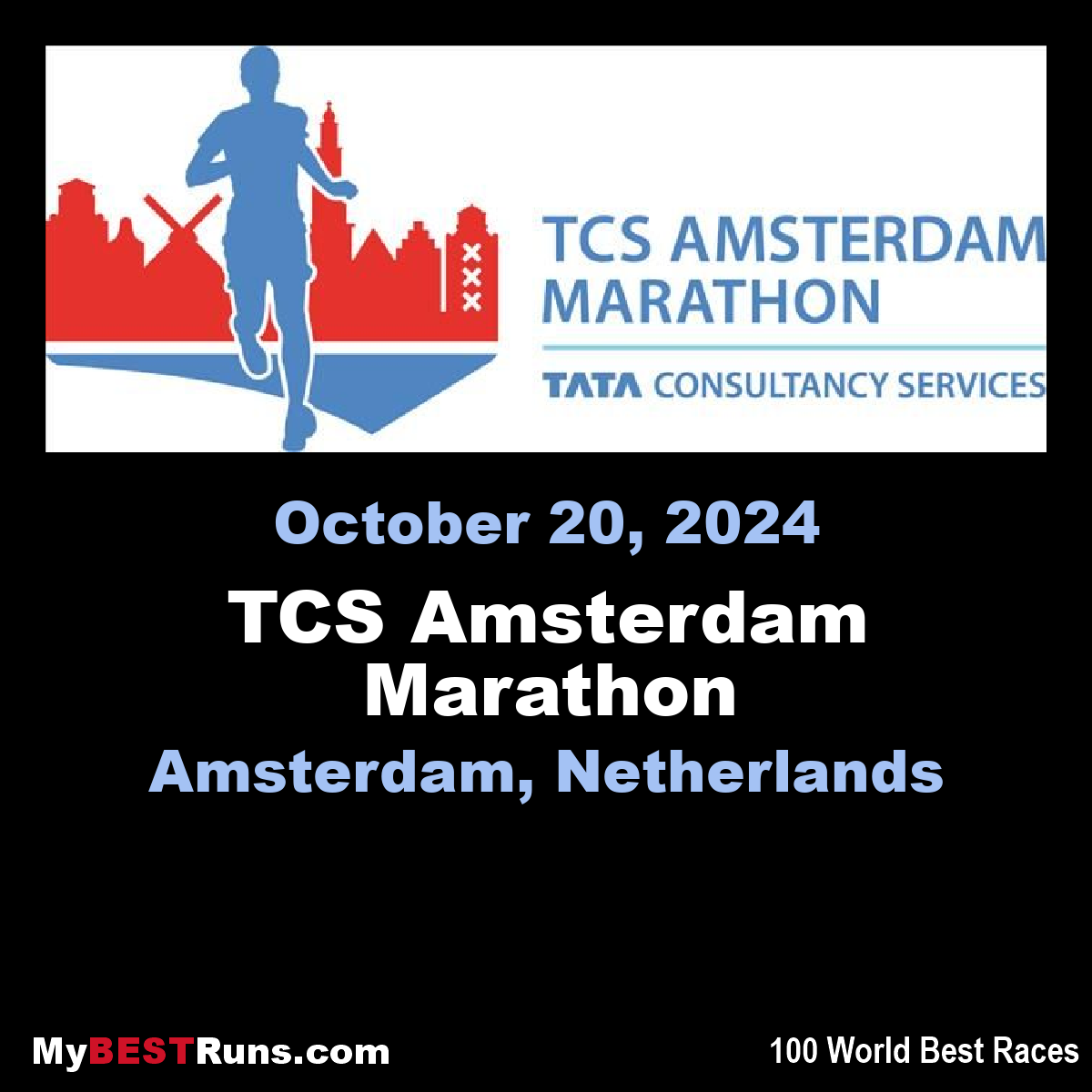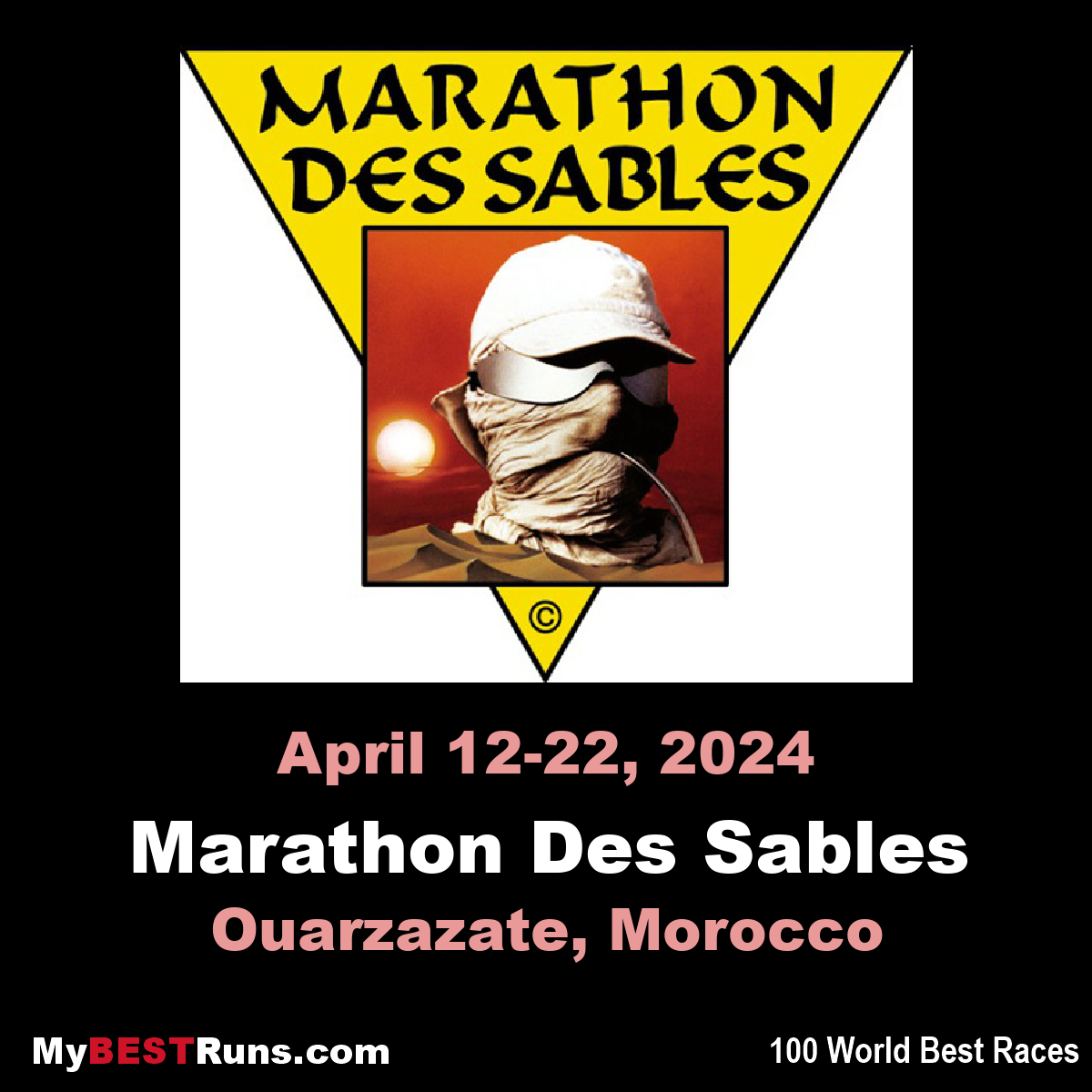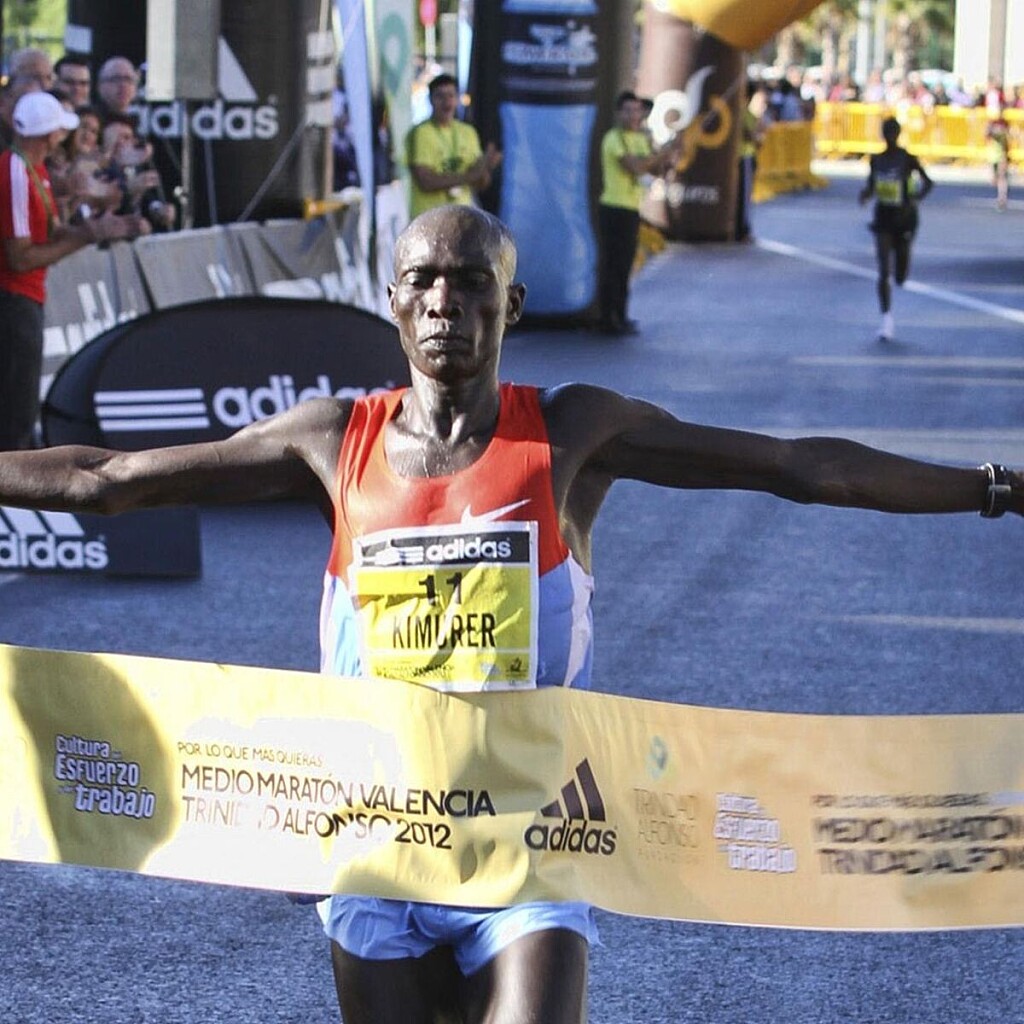Running News Daily
Running News Daily is edited by Bob Anderson in Mountain View, California USA and team in Thika Kenya, La Piedad Mexico, Bend Oregon, Chandler Arizona and Monforte da Beira Portugal. Send your news items to bob@mybestruns.com Advertising opportunities available. Over one million readers and growing. Train the Kenyan Way at KATA Running Retreat Kenya. (Kenyan Athletics Training Academy) in Thika Kenya. Opening in june 2024 KATA Running retreat Portugal. Learn more about Bob Anderson, MBR publisher and KATA director/owner, take a look at A Long Run the movie covering Bob's 50 race challenge.
Index to Daily Posts · Sign Up For Updates · Run The World Feed
Are the thicker shoes faster?
The recent disqualification of the Derara Hurisa from the Vienna marathon was the first high-profile disqualification of an athlete for a violation of the new footwear rules from World Athletics on the roads.
Hurisa’s shoe, the Adidas Adizero Prime X, had all the ingredients of a super shoe, including better foam with rigid pieces embedded. But it had one distinctive quality: It was thicker than the current regulations allow.

This revisits the classic question around the rules: Are thicker shoes faster?

The answer is nuanced, but it boils down to this: Faster shoes are thick, but thicker shoes aren’t necessarily faster.
The shoes of today that are helping athletes run faster do so from the interaction between more perfect foam (lighter, softer, and more resilient polymers) and rigid architectural pieces (curved and embedded stiff plates and rods). In 2020, World Athletics put regulations in place to manage the potential performance advantages by limiting the thickness of the shoes and the extent of those architectural features. For a detailed look at the rationale for the sole thickness regulation strategy, Adding more of the foam to the bottom of runners’ feet is likely to be beneficial for two reasons.
First, its greater compliance (softer cushioning) and its higher resiliency (greater energy return) help the runner to run more efficiently by wasting less energy step-to-step and recycling more energy underfoot. If the foam is functioning like a spring, a longer and longer softer, more perfect spring can store more and more energy and give more and more of it back.
Second, the foam provides a three-dimensional matrix within which to put the aforementioned rigid pieces. The specific mechanisms of how and the extent to which the rigid pieces (e.g., curved carbon fiber plates or rods) are beneficial are still being elucidated, but it’s likely helping the body both use the benefits of that foam—the foam on its own it may be too soft or unstable—and and by subtly manipulating the runner’s mechanics to more efficiently move through foot strike. These benefits are great, in theory, as they allow us to augment the runner’s legs with elements that ostensibly function better than the human body’s own elastic structures without fatiguing.
(10/25/2021) ⚡AMPby Colorado Runner
Eliud Kipchoge has been named best male athlete of Tokyo 2020 Olympics
Kenya's Eliud Kipchoge on Sunday won the Best Male Athlete accolade during the 2021 Association of National Olympic Committees (ANOC) Awards held in Greece.
Kipchoge delivered a masterclass in marathon running, breaking away at the 30-kilometre mark and never looking back to retain his Olympic title in two hours, eight minutes and 38 seconds during the Tokyo Olympics in August.
He became only the third man to defend the Olympic men’s marathon title after Ethiopia’s Abebe Bikila (1960 and 1964) and East Germany’s Waldemar Cierpinski (1976 and 1980).

The victory at the Tokyo 2020 Olympics was Kipchoge’s 13th success in the 15 marathons he has raced in since 2013. He broke the world record in 2018 when he timed 2:01.39 in the Berlin Marathon.
On October 12, 2019, Kipchoge timed 1:59.40 at the Ineos 1:59 Challenge in Vienna, Austria. But the time did not count as a new marathon record since standard competition rules were not followed.

"It is an honor to win the ANOC Award for the Best Male Athlete at the Tokyo Olympics. With so many beautiful performances by so many athletes, I am proud to be the recipient of this award. Thank you all for your great support," the world record holder said.
He received his award from the president of Association of National Olympics Committee of Africa Mustapha Berraf at the Open Air Theatre of the Creta Maris Beach Hotel, in Greece.
The awards were organized by ANOC to celebrate the achievements of athletes at the Tokyo Games.
(10/25/2021) ⚡AMPby Brian Yonga
200m World bronze medalist Alex Quiñonez murdered in Ecuador
News broke on Saturday that world 200m bronze medalist, Alex Quiñonez, was murdered in his native Ecuador in the city of Guayaquil.
The 32-year-old was reportedly shot multiple times by unknown assailants along with his friend, Jogyro Alcala.
Quiñonez finished third in the 200m in Doha two years ago, becoming the first Ecuadorian athlete to win a world medal at a track event. He ran his personal best of 19.87 in the 200m in 2019 in Lausanne, Switzerland, setting a new national record for Ecuador, and was also the national record-holder in the 100m and the 400m.
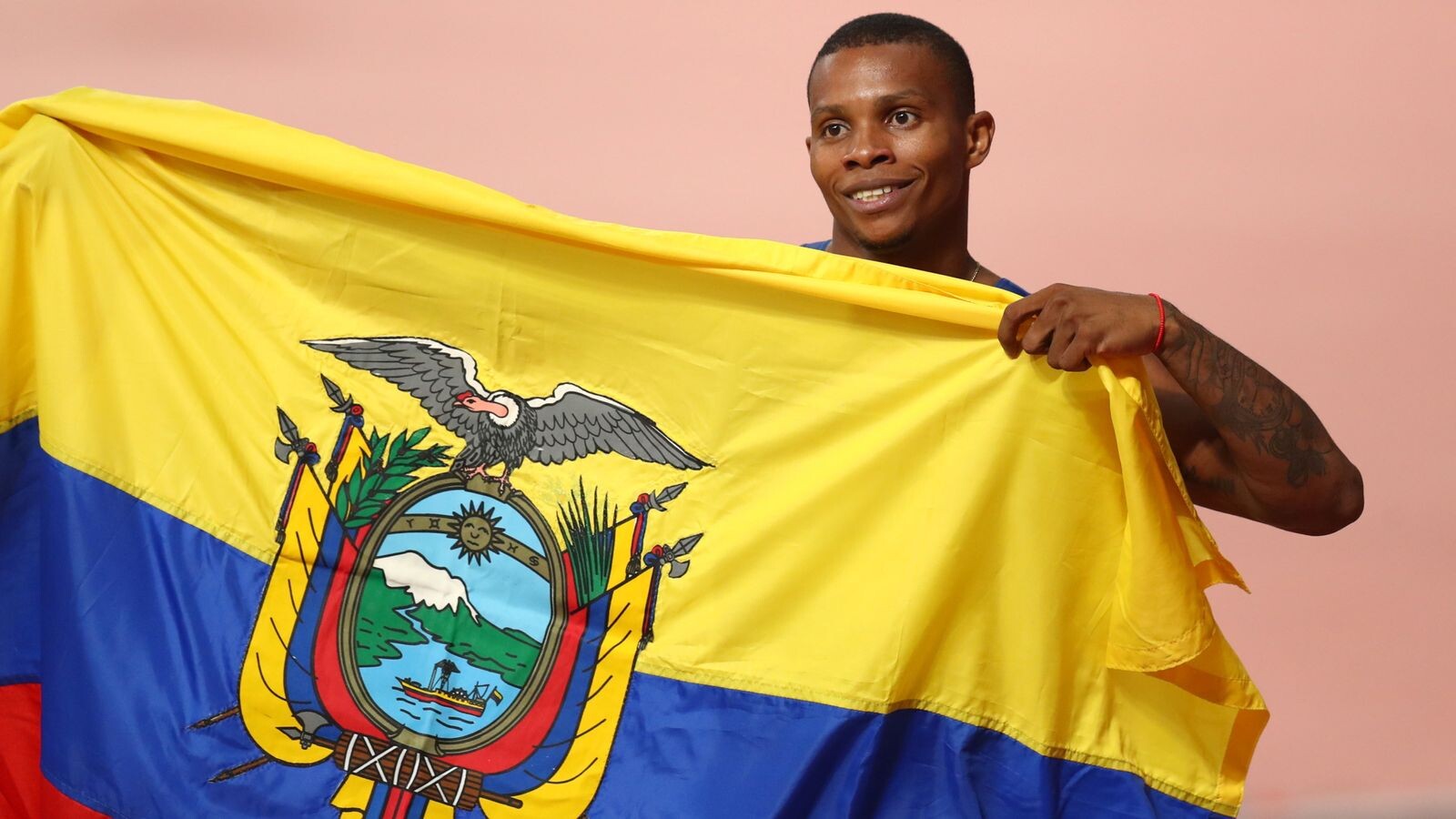
Unfortunately, Quiñonez was unable to participate in the Tokyo Olympic Games after he was suspended for violating the rules of whereabouts information.
“Today we lost a great athlete, someone who made us dream, made us excited. With deep pain, we confirm the murder of our athlete Alex Quiñonez in the city of Guayaquil,” the Ecuadorian Ministry of Sports said in a statement on Twitter.

Quiñonez is not the first athlete this month who has been murdered. Two-time world 10,000m bronze medalist, Agnes Tirop of Kenya was killed earlier this month by her husband, Ibrahim Rotich, who has now been arrested and taken into custody.
The exact circumstances surrounding Quiñonez’ death are still unknown, and an investigation into his murder is still ongoing. The news has sparked an outpouring of grief across the country, with many calling on the Ecuadorian police to take action against the recent surge in violence throughout the nation.
(10/25/2021) ⚡AMPby Brittany Hambleton
2021 Beijing Marathon cancelled as city experiences Covid spike
Beijing Marathon, scheduled for October 31, has been cancelled due to a recent bout of coronavirus cases in the city.
Domestic tour groups have been identified as the source of 133 infections of the delta variant spread across 11 provinces.
Although 75% of the population has now been vaccinated Government policy is still to vigorously suppress any outbreaks that occur – this last being the most significant since August.

Cases occurring in Beijing are particularly worrying for the authorities with the 2022 Winter Olympic Games due to be hosted in the city from February 4-20.
(10/25/2021) ⚡AMPby AIMS
Beijing Marathon
The Beijing Marathon is an annual marathon held in Beijing, People's Republic of China. The race was first held in 1981 and has been held every year since. The race begins at Tiananmen Square and finishes at the National Olympic SportsCenter stadium. Beijing Marathon is now a full marathon only marathon race. At the 2009 edition of the race, 4897...
more...Abdi wins Rotterdam Marathon in European record of 2:03:36
Competing in his first race since taking bronze at the Olympic Games, Belgium’s Bashir Abdi broke the European record to win the NN Rotterdam Marathon on Sunday (24), clocking 2:03:36 at the World Athletics Elite Label road race.
At one point the 32-year-old had looked to be out of contention after two-time Rotterdam winner and course record-holder Marius Kipserem opened up a significant gap with less than 10km to go. But Abdi finished strongly to overtake the Kenyan in the closing stages before going on to win by 28 seconds.

Meanwhile, Kenya’s Stella Barsosio produced a solo effort to win the women’s race in a lifetime best of 2:22:08, improving on her runner-up finish in this race two years ago.
Most of the big contenders in the men’s race ran as a group in the early stages, passing through 10km in 29:17 before reaching the half-way point in 1:01:57, suggesting Kipserem’s course record of 2:04:11 was under threat.
Soon after reaching 25km in 1:13:33, Kipserem forged ahead and broke up the lead pack, hitting 30km with a 12-second lead over Ethiopia’s Dawit Wolde with Abdi a further five seconds in arrears.
But Abdi and Wolde caught up with Kipserem again by 35km, reached in 1:42:33, while Kenya’s Titus Kipruto was 20 seconds adrift of the lead trio.
Soon after, Abdi made his decisive move and broke away from his remaining opponents before going on to win in 2:03:36. His winning time took 40 seconds off the previous European record, set by Turkey’s Kaan Kigen Ozbilen in Valencia two years ago, and places Abdi 14th on the world all-time list.
Kipserem held on for second place in a PB of 2:04:04, inside his former course record, while Wolde took third place in 2:04:27, almost a minute ahead of Kipruto (2:05:22).
In contrast to the men’s race, the women’s contest was essentially a solo effort from Stella Barsosio. The Kenyan had opened up an 18-second lead over compatriot Bornes Kitur by 5km (16:29), which grew to more than a minute by 15km (49:27).
Barsosio’s half-way split of 1:09:33 suggested a sub-2:20 finishing time, but with no competitors to help push her, the 28-year-old’s pace dropped slightly in the second half. Nevertheless, her lead continued to grow and she had a margin of almost four minutes by the time she reached 30km in 1:39:02. Further back, Ukraine’s Natalya Lehonkova was closing on Kitur, who was starting to fade.
Barsosio went on to win comfortably in 2:22:08. Lehonkova overtook Kitur in the closing stages to take the runner-up spot in 2:30:28 while Kitur held on for third place in 2:30:41.
(10/24/2021) ⚡AMPNN Rotterdam Marathon
The marathon has been the biggest one-day sporting event in the Netherlands for many years in a row with over 35000 athletes professionals inclusive. The world's top athletes will at the start on the bustling coolsingel, alongside thousands of other runners who will also triumph,each in their own way.The marathon weekend is a wonderful blend of top sport and festival. ...
more...Gidey smashes world half marathon record in Valencia
Ethiopia’s Letesenbet Gidey smashed the world record* at the Valencia Half Marathon Trinidad Alfonso EDP, clocking 1:02:52 on her debut at the distance at the World Athletics Elite Label road race on Sunday (24).
Competing in the same Spanish city where she broke the world 5000m record last year, Gidey took 70 seconds off the previous world record of 1:04:02 set by world marathon champion Ruth Chepngetich earlier this year.

In doing so, 23-year-old Gidey becomes the first woman to officially break the 64 and 63-minute barriers. She’s also the first debutante to set a world record for the distance.
Perfectly paced by her compatriot Mebrahtu Kiros, Gidey went through the opening 5km in 15:00, well inside world record pace, with her compatriot Yalemzerf Yehualaw running five metres down. Yehualaw, whose recent 1:03:44 clocking in Larne could not be ratified as a world record due to the course being too short, drifted further back over the next few kilometres as Gidey reached 10km in 29:45 – the third-fastest clocking in history for the distance and just seven seconds shy of the world record set just a few weeks ago by Kalkidan Gezahegne.
While Yehualaw began to lose ground shortly afterwards, Gidey maintained her relentless rhythm to cover the next 5km segment in 14:44, reaching the 15km point in 44:29, barely nine seconds slower than her own world best for the distance.
Although her pace dropped very slightly in the last quarter of the race, Gidey had done more than enough to ensure victory in a world record time. She crossed the line in 1:02:52, adding a third world record to her name to go alongside the marks she owns for 5000m (14:06.62) and 10,000m (29:01.03).
Underscoring the quality of Gidey’s performance, she crossed the finish line alongside Spain’s Javier Guerra, a 2:07:27 marathon runner.
“I knew I could run this kind of time as my training sessions in the altitude of Addis Abeba have gone very well,” said an ecstatic Gidey, the Olympic bronze medallist and world silver medallist over 10,000m. “In future I’m thinking of competing at the marathon distance but I’m not sure that will come before the Paris 2024 Olympic Games or later.”
Yehualaw finished second in 1:03:51, also inside the previous world record. Kenya’s Sheila Chepkirui bettered her lifetime best by 45 seconds to complete the podium in 1:04:54.
The men’s race may not have witnessed a world record, but it still had record depth with an unprecedented seven men covering the distance within 59 minutes.
The leading group went through the opening 5km in 13:45, right on schedule for a 58-minute finishing time. Kenya’s world 10km record holder Rhonex Kipruto ran comfortably close to the pacemakers alongside compatriots Abel Kipchumba, Philemon Kiplimo, Felix Kipkoech, Daniel Mateiko and Kennedy Kimutai plus Ethiopia’s world 5000m champion Muktar Edris.
Surprisingly, the three pacemakers – Josphat Kiptoo Chumo, Emmanuel Maru and Evans Kipkemei Kurui – dropped out before the seventh kilometre and from then on the main favourites took turns in the lead to keep a swift pace. The 10km checkpoint was reached in 27:35, slightly outside their target, with Kipruto and 58:48 world leader Kipchumba making most of the pacing duties alongside the surprise package Mateiko, whose career best was 59:25 set in Copenhagen last month. At that point, 10 men still remained in the lead pack.
The first serious move came in the 12th kilometre when Mateiko, a training partner of Eliud Kipchoge, tried to break away from the rest but he was soon reeled in by the main contenders, who were now running in single file.
Shortly after reaching 15km in 41:16, Kipchumba moved to the front and only Kipruto could live with his pace. With about half a kilometre to go, Kipruto surged and gained a few metres on Kipchumba, but the latter never gave up and overtook Kipruto in the closing stages to win in a world-leading 58:07 with Kipruto taking second place in 58:09.
Kipchumba’s winning time elevates him to sixth on the world all-time list. Mateiko set a huge PB of 58:24 to secure a Kenyan sweep of the podium places.
(10/24/2021) ⚡AMP
by Emeterio Valiente for World Athletics
Valencia Half Marathon
The Trinidad Alfonso Valencia Half Marathon has become one of the top running events in the world. Valencia is one of the fastest half marathon in the world. The race, organized by SD Correcaminos Athletics Club, celebrated its silver anniversary in style with record participation, record crowd numbers, Silver label IAAF accreditation and an atmosphere that you will not find...
more...Kenyan Marius Kipserem will be targeting hattrick of titles at Rotterdam marathon
Two-time champion Marius Kipserem will be the man to beat as he chases hattrick of victories at the Rotterdam Marathon on Sunday
Kipserem clinched the 2016 event winning in 2:06:11 and setting the course record two years ago when he posted 2:04:11.
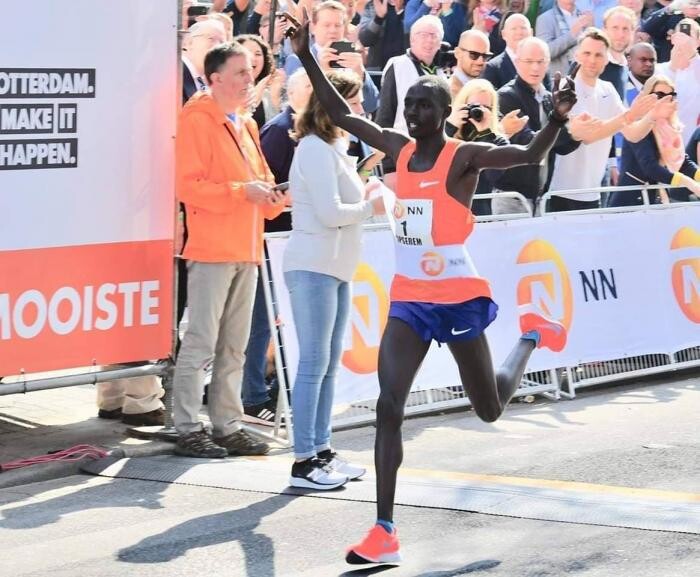
He will have five Kenyans for company in the event, including Emmanuel Saina (2:05:02), Gideon Kipketer (2:05:51), John Langat (2:07.11) Cyrus Mutua (2:10:28) and Titus Kipruto (2:12.43).
The Kenyan contingent faces a herculean task with five Ethiopian athletes in contention. They include Solomon Deksisa, who has a personal best of 2:04:40 alongside Kebebe Wami Tulu (2:06:32), Getachew Yizenagwa (2:06:47), Dawit Wolde (2:06:18) and Asefa Tefera (2:07.47)

Olympic bronze medalist Bashir Abdi of Belgium (2:04:16) will be seeking to break the European marathon record of 2:04:11.
The men's field looks very impressive with ten men holding PB's inside 2:08 with three having run sub 2:05.
In the women's category, Kenya will be led by Bornes Kitur (2:21:26) and Stella Barsosio (2:23:36).
Other contenders are Nataliya Lehonkova of Ukraine (2:28:58), Norway’s Runa Skrove Falch (2:33:52), and Sweden’s Louise Wiker (2:36:29). Moreover, debutantes Marijke Visser and Jacelyn Gruppen (2:52:17) are expected to run a good marathon.
A second group of 15 athletes will be setting off at a slower pace. These runners include Dutchmen Roy Hoornweg and Floris Willeboordse.
Hoornweg has already made a name for himself as a rabbit and is now making his official marathon debut. Willeboordse is keen to improve his 2:30:01 (New York, 2019).
Abdi Nageeye, who ‘flew’ over the fast Rotterdam course to grab the Dutch record of 2:06:11 in 2019, has opted for the New York marathon this year after his Olympic silver medal.
Nageeye also stood out in Japan by literally and figuratively piloting his Flemish friend Bashir Abdi to grab bronze. However, Bashir will be coming to the Coolsingel.
(10/23/2021) ⚡AMPby William Njuguna
NN Rotterdam Marathon
The marathon has been the biggest one-day sporting event in the Netherlands for many years in a row with over 35000 athletes professionals inclusive. The world's top athletes will at the start on the bustling coolsingel, alongside thousands of other runners who will also triumph,each in their own way.The marathon weekend is a wonderful blend of top sport and festival. ...
more...Ethiopians Letesenbet Gidey and Yalemzerf Yehualaw target world half marathon record in Valencia
The Valencia Half Marathon Trinidad Alfonso EDP witnessed a men’s world record last year as Kibiwott Kandie ran a stunning 57:32. This time the women’s world record is the target and organisers have assembled a star-studded line-up for the World Athletics Elite Label road race on Sunday (24).
Ethiopians Letesenbet Gidey and Yalemzerf Yehualaw will clash in a long-awaited showdown. Gidey is the world 5000m and 10,000m record-holder, while Yehualaw ran 1:03:44 in August, and although that time will not be ratified as a world half marathon record the two athletes will now go head-to-head in Valencia as they target the 1:04:02 run by Ruth Chepngetich in Istanbul in April, a mark which is pending world record ratification.
The 23-year-old Gidey has competed sparingly this year but managed to set a world 10,000m record by running 29:01.03 in Hengelo before claiming bronze at the Tokyo Olympics. While the diminutive Yehualaw is an accomplished half marathon specialist, with nine outings over the last three seasons, Gidey will tackle the distance for the first time but her impressive 44:20 world best for the 15km set in Nijmegen in 2019 suggests she might become the first debutante to set a world record for the distance.

Reportedly, each of the Ethiopian aces will be joined by their respective pacemakers – Mebrahtu Kiros and Genetu Molalign – in a battle which promises to be fierce, while the organisers will provide an official pacemaker for the rest of the elite targeting a 1:05 clocking.
That second group looks set to be led by Ethiopia’s Senbere Teferi, the winner in 2019 thanks to a 1:05:32 time; her compatriot Hawi Feysa, fresh from a 1:05:41 PB in Copenhagen last month; Sheila Chepkirui, runner-up last year in a career best of 1:05:39; and her fellow Kenyan Brenda Jepleting, a 1:06:52 performer.

After last year’s climax, when no fewer than four men ran inside the then world record of 58:01, one of them – Rhonex Kipruto – will be the marquee athlete this time. The Kenyan star, who clocked a 57:49 debut last year, also excelled in Valencia in January 2020 when he set the world 10km record of 26:24. He couldn’t place higher than ninth at the Tokyo Olympics over 10,000m but proved to be in top form in September when he recorded 26:43 at a 10km road race in Herzogenaurach.
While a men’s world record assault is not planned on this occasion, the pacemakers are set to go through the opening 10km in 27:30 on the hunt for a sub-58:00 finish time.
In addition to Kipruto, Sunday’s field includes another four Kenyan athletes with PBs under 59 minutes: Philemon Kiplimo, who was fifth last year in Valencia in a career best of 58:11, plus Kelvin Kiptum (58:42), Abel Kipchumba (58:48) and Felix Kipkoech (58:57).
Yet Kipruto’s toughest opposition might come from the two-time world 5000m champion Muktar Edris. The 27-year-old Ethiopian posted a promising debut over the distance last November by clocking 59:04 in New Delhi and should play a key role on Sunday, while the European challenge will be headed by Norway’s Sondre Moen and Spain’s Carlos Mayo.
Weather forecasters predict an ideal morning for running, with a 13ºC temperature and a very slight breeze. After the four records set in Valencia last year – the men’s 10km, half marathon and 10,000m, plus the women’s 5000m – the city could witness another world best on Sunday.
(10/23/2021) ⚡AMPby World Athletics
Valencia Half Marathon
The Trinidad Alfonso Valencia Half Marathon has become one of the top running events in the world. Valencia is one of the fastest half marathon in the world. The race, organized by SD Correcaminos Athletics Club, celebrated its silver anniversary in style with record participation, record crowd numbers, Silver label IAAF accreditation and an atmosphere that you will not find...
more...When It Comes to Cancer Prevention, Here’s How Much Exercise You May Need Each Week
Any amount of movement is beneficial, but research indicates there may be a sweet spot.
At least five hours of moderate-intensity activity per week may prevent certain types of cancers related to the breast, colon, stomach, kidney, bladder, and esophagus, new research suggests.

Exercise has been shown to address some causes of cancer, such as obesity and inflammation.
Of course, exercise alone won’t eliminate your risk since there are many factors that go into that equation, including genetics, environmental exposure, smoking and alcohol use, age, diet, and hormones.
When it comes to cancer prevention, lifestyle habits make an enormous difference, and exercise is a major part of that, according to a new study in the journal Medicine & Science in Sports & Exercise.
Researchers looked at state-level data on cancer incidence as well as physical activity by state (in people age 30 or older) and found a strong connection between reduced cancer prevalence and more exercise. That was particularly true for cancers related to the breast, colon, stomach, kidney, bladder, and esophagus.
They noted that more than 46,000 cancer cases in the U.S. annually could be prevented if people followed the guideline of getting at least five hours of moderate-intensity activity per week. For all cancer cases in adults between 2013 and 2016, about 3 percent were attributable to physical inactivity, they suggested. That incidence was higher in women than in men, researchers added.
States with the highest proportion of cancers attributed to sedentary behavior were in the South, such as Kentucky, West Virginia, Tennessee, Louisiana, and Mississippi. Those with the lowest proportion were in Western states like Montana, Utah, and Wyoming.
Of course, exercise alone won’t eliminate your cancer risk since there are many factors that go into that equation, including genetics, environmental exposure, obesity, chronic inflammation, smoking and alcohol use, age, diet, and hormones.
However, exercise has been shown in the past to address some of those factors, such as obesity and inflammation. With the latter, more intense physical activity can actually increase inflammation in the short term, but research indicates it brings the level down overall, and one study noted that as little as 20 minutes of exercise could kick off this effect.
“Continuous inflammation stresses your entire body, including lowering your immune system response, damaging your DNA, and affecting your gut health,” William Li, M.D., author of Eat to Beat Disease: The New Science of How Your Body Can Heal Itself, told Runner’s World. “All of those can contribute toward cancer development, as well as raise your risk of type 2 diabetes and other chronic conditions, especially if it comes with weight gain.”
Building muscle through strength training or endurance exercise—like running—can be helpful for reducing inflammation, Li said, particularly if you adopt a diet rich in anti-inflammatory foods, like fruits and vegetables.
(10/23/2021) ⚡AMP
by Runner’s World
Harvey Lewis Breaks the Big’s Backyard Ultra Record By Running More Than 350 Miles in 85 Hours
He ran a 4.1667-mile loop every hour for 85 hours.
The third time was the charm for Ohio’s Harvey Lewis at the 2021 Big’s Backyard Ultra. After finishing as the assist in 2017 and 2020 (meaning, he is the second-to-last runner left in the race), the 45-year-old was finally the last runner standing in Bell Buckle, Tennessee. In total, Lewis ran 350.0028 miles in 85 hours/laps, making him the undisputed backyard ultra world-record holder.

The backyard racing format has grown in popularity recently, with pop-up races happening all over the world. The rules, put simply, are: run a 4.167-mile loop at the top of every hour until one runner has done at least one more lap than the second-to-last runner. If both runners stop at the same time, then no winner is declared. At Big’s, runners complete a trail loop during the day, and a road loop at night.
The 2020 race was a virtual event, with runners in more than 20 countries competing simultaneously in standalone races. As a result, the 2021 race was anticipated to be one of the most stacked fields in race history. While some international runners were still unable to make the trip due to pandemic-related travel restrictions and concerns, several top runners made it to the start line. This included 2019 champion Maggie Guterl, 2020 champion Courtney Dauwalter, Big’s regular Dave Proctor, Michael Wardian, and Steve Slaby.
The race started at 6 a.m. ET on Saturday, October 16, and only three runners of 35 starters total dropped out within the first 24 hours (100 miles). But after that, runners seemed to drop almost every hour. Nine completed 48 hours, a large pack for reaching the third day of the race.
Lewis’s Big’s experience paid off as he and his crew chief Judd Poindexter troubleshooted any issues that arose. He fueled well and got five- to 10-minute naps when he could during the night, a big change from not sleeping at all in 2017.
One the race hit the 72-hour mark, it headed into uncharted territory with just three runners still standing: Lewis, Missouri’s Chris Roberts, and Japan’s Treumuchi “Mori” Morishita. Only two known backyard races in the world have hit the fabled fourth day before. This was the first time it had ever happened at Big’s.

“We all wanted it so bad,” Lewis told Runner’s World. “We had lasted so long out there, which takes incredible willpower. It definitely helped. I wouldn’t have been out there without a reason to keep going, so I really enjoyed the challenge of running with them for so long together.”
The trio battled from lap 63 on, all quietly competing against one another. Each runner had their own style; Lewis and Morishita would sprint out of the corral at the start of some laps, which was a fan favorite.
“At the start and in certain areas, we just started sprinting,” Lewis said. “Morishita would sprint through the woods and yell, and then I would sprint through the woods and yell. It was a good move, so I hope Morishita didn’t mind I was doing it as well.”
Roberts struggled a lot before dawn, fighting off an injury that had him leaning sideways and coming in with few minutes to spare on laps. But as the sun rose, he recovered for a strong day.
Issues arose late in the game for Lewis and Morishita. Both runners fell on lap 81, which caused Morishita to miss the cutoff by 30 seconds, ending his day and leaving just Lewis and Roberts in the race. Lewis fell on the final hill and left him with an unknown (at the time) hand injury. Because his legs were okay, he ignored it and kept moving.
“As we got to the night, I thought for sure we’d be going to 400 [miles], so I mentally prepared myself for that,” Lewis said.
Many anticipated another complete night—that is, until lap 85, when Roberts surprisingly returned to camp soon after starting. Lewis, still on his loop, didn’t know this. Even though he didn’t see Roberts on the way back, he still wasn’t convinced he won until he got back to camp.
There, Lewis was greeted to roaring applause from the crowd that was still there. Lewis was finally a Big’s champion, capping off an incredible year of winning three major races: Badwater 135, Ohio’s Backyard Ultra, and now Big’s. He also earned the undisputed world record for most yards ever completed in a backyard race, taking the title from John Stocker who ran 81 yards with his assist, Matt Blackburn at the Suffolk Backyard Ultra in June 2021.
“It was an incredible experience,” Lewis said. “It has been one of my dreams to win this race, and to have it come to fruition was pretty mind-blowing for sure. I was super psyched.”
Lewis was so overcome with joy and exhaustion that he spent little time enjoying his win, opting to head to his tent shortly after finishing.
“When I finished, whatever armor I developed in my mind that told me I wasn’t going to submit went away,” he said. “I was really tired. I didn’t care where I slept. There was a cot in my tent 40 meters away, and it felt like the Taj Mahal. I fell asleep with half a plate of rice and beans on me.”
The next day, Lewis got a ride back to Cincinnati. When he arrived around 11 p.m., he kept his run streak alive by getting a mile in with minutes to spare. Then, a friend instructed him to go get his hand checked out in the emergency room after midnight. Harvey was diagnosed with a clean break in the fourth metacarpal of his right hand, and he was told should heal in a few weeks with just a splint.
Lewis told Runner’s World that he got a few hours of sleep in the ER before going home briefly and run commuting to work—he’s a social studies teacher at School for Creative and Performing Arts. Lewis wasn’t supposed to work because he had taken the day off. However, because of a shortage of substitute teachers at the moment, he literally ran in teach anyways.
“A couple times a year, I’ll take off to recuperate,” he said. “As long as I’m not hurting myself, I do the commute with human power.”
Big’s is likely the last race of the year for Lewis, though he plans to run the Flying Pig Marathon easy on October 30. His next big adventure will be the Barkley Marathons in 2022, which he now has entry to because of his Big’s win. Cantrell let Lewis know his thoughts on that.
“My biggest memory was turning to [Big’s and Barkley Marathons creator Gary ‘Lazarus Lake’ Cantrell] at the end and saying, ‘The winner gets an entry to Barkleys,’” Lewis said. “He couldn’t say no, so he went along with it. The next day, he told me that I’d be the sacrificial lamb.”
(10/23/2021) ⚡AMP
by Runner’s World
Caught in blasting snow ultrarunners stuck together for safety, all 87 participants were rescued in the mountains of Utah
When snowflakes started falling a few miles into a 50-mile ultramarathon through the Utah mountains, Annie Macdonald was not worried. As an experienced long-distance runner, she had expected some snow.
But then the stray flakes turned into a near whiteout, lashing participants of Saturday’s DC Peaks 50 race with winds of up to 40 miles per hour and erasing the path through the desolate terrain. The temperature dropped and Macdonald, who wore a rain jacket over a shirt, with tights, mittens and running shoes, became “just miserably, miserably cold.”
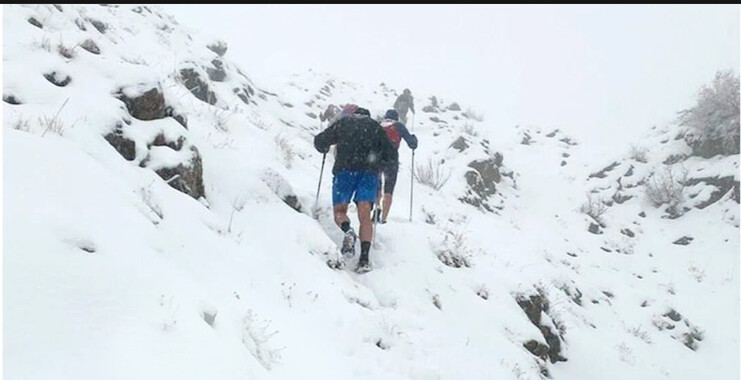
The race was in its first year as a new arrival to the increasingly popular ultramarathon scene. Ultramarathons stretch longer than the 26.2 miles of a marathon, covering grueling distances of 50 miles or more.
At about seven miles into the race and six miles from the first station, there was little choice for Macdonald but to keep going. With the path gone and the snow blasting into her face, she could only follow the footfalls of the runner ahead of her, pushing on nearly five hours to the station.
“I just kept thinking, okay, be smart. Don’t get injured, because if you get injured, then you can’t keep moving, and you have got to keep moving,” Macdonald said in an interview on Sunday. “And so that was what I kept telling myself. But even then, it was still scary for me, because I’ve never been that cold. And you just think, how can I be this cold?”
The 46-year-old, a friend of the race organizers who lives in the last house outside the canyon where the ultramarathon began, was one of 87 runners caught in the rugged mountains of northern Utah when extreme weather brought on up to 18 inches of snowfall. All were rescued in an hours-long operation that included the Davis County Sheriff’s Office, first responders, search and rescue volunteers and the organizers of the ultramarathon, who called off the event once they grasped the extreme conditions.
Rescuers “covered the entire course on foot, as well as with 4x4s and snowmobiles, for several hours to assist runners off the mountain,” the sheriff’s office said. A few were treated for hypothermia and one for a minor injury from a fall. They were released at the scene.
“It certainly, without a doubt, could have ended up much worse for many of those participants,” said Davis County Sheriff Kelly V. Sparks said. “We had serious concerns … if somebody hadn’t been able to get to them quickly and get them rewarmed, they could have been in great jeopardy.”
Unlike marathons that send runners across big city streets, ultramarathons typically start in small towns and carve through lengthy trails. They usually draw smaller groups of runners, although ultrarunning has been growing in popularity in recent years. The extreme activity saw tragedy in May, when 21 people died in the cold during an ultramarathon in China.
The Utah race was plotted to take runners on a “tough course” that was more than 70 percent trails and 24 percent service roads, up peaks and through canyons with 12,000 feet of vertical gain. Organizers promised adventure and impressive views of the Utah landscape.
Jake Kilgore, one of the race directors, is himself an ultramarathoner who said that he lives five miles from the trailhead. He said that he and fellow race director Mick Garrison started planning the event two years ago and initially considered July. “As ultra athletes, we would never ask our runners to do something we would never do,” he said. He and Garrison live a mile a part, and “run on these trails every day,” and so in July 2020, Garrison ran the course with Kilgore to test it out. “It was nearly 100 degrees that day, 95 to 100 degrees … It was unbearably hot and he could not go any further at mile 40,” he said. “So we went back to the drawing board.”
They ended up choosing October. The course traversed five cities, and he checked forecasts for those locations, and other areas along the course such as Francis Peak. “Everybody knew it was going to be raining, some snow … an inch or two max,” he said. Sparks said that at 7,000 feet, snow was not unexpected. At that elevation, there was a “storm cell that had been active for a couple of days, so it was not a quick moving storm or anything.”
The race featured live technology meant to predict and track the runners’ locations and provide a stream of the course, Kilgore said. Most runners started at 5:30 a.m., with about 20 runners beginning at an early 4:30 a.m. After 7:30 a.m., when the live feed came online from the first aid station — located at Francis Peak at just over 9,000 feet, 13.5 miles into the race — “that’s when we saw truly how bad it was,” Kilgore said. There were cross winds of up to 40 miles per hour and 18 inches of snow.
That is when Kilgore and Garrison called off the race. The decision was relayed to all the aid stations, and volunteers were told to head to the first station to wait for runners and get them off the mountain.
Up on the course, Macdonald said, runners decided to stay in groups to reach safety. She said they slowed to a walking speed, unable to continue running. Icicles hung from her jacket and from the long hair of a fellow runner. Macdonald could no longer feel her face. “We were just yelling to each other making sure everybody was still with us and that we didn’t drop anybody,” she said. The trip, she said, “felt like forever.”
Kilgore said he ran home to put on ski goggles, gloves and gear. He shuttled up as high onto the mountain as he could to get onto the course and help get runners down. He said contingency and safety plans allowed them to jump into action, with the help from more than 100 volunteers who were stationed throughout the course, to get everyone to safety.
By 2:45 p.m., about five hours after organizers called the sheriff’s office for assistance, all of the runners had been accounted for. By about 7 p.m., all the rescuers — a team made up of the volunteers who work and train with the county — had also made their way down the mountain.
The sheriff said authorities plan to speak with the organizers: “Our goal being to educate them and help them understand better how to get better information and better contact with us before a race begins.”
But Macdonald credited the race organizers with helping to prevent a dire situation that could have been “incredibly tragic for people.” Without quick work to account for all the racers and shuttle them down the mountain, the tough race day could have ended differently, Macdonald said.
Instead, Macdonald welcomed a crowd of runners into her home, where they sipped hot chocolate and traded stories. She said she has frostbite on her legs, yet plans to run the race again next year given the chance.
“As soon as I can sign up, I’ll do it,” she said. “I’ve got to finish it.”
(10/23/2021) ⚡AMP
Check out this greenhouse track in Japan
A high school in Japan came up with a creative solution for dealing with their winter weather. Instead of building an indoor track, they built a greenhouse around a 330m outdoor track where their athletes can escape the cold and snow.
The track was built for Asahikawa Ryukoku High School in Japan’s Hokkaido Prefecture, whose athletes are currently training for the Hokkaido Prefecture High School Girls Ekiden on October 23. The team is hoping for their sixth straight win, and their coach is hoping this new track will help get them there.

The Hokkaido Prefecture is known for heavy snowfall and temperatures that can drop as low as -20 C. In years past, the school’s Ekiden team has continued to train outside in the winter or had to travel to Sapporo to train on inside domed stadiums, a four-hour round trip from the school.
The special track was built on a 1,650 metre campus where the high school is being relocated next summer. The greenhouse structure is coated in durable vinyl, ranges from 5.4 m to 7.2 m in width and stands four metres high at its maximum point. Currently, the four-lane track is made of dirt, but in the future, two lanes will be covered with artificial turf and one lane will have a 100 m segment coated with standard all-weather track surface material. The facility is heated so it can be used throughout the year.
A few of the athletes have already tested out the new track and given it good reviews, including senior captain Sakura Ishibashi. “This will be a great place to train without having to worry about wind or snow,” Ishibashi told Japan Running News. “We’re all super grateful and want to show our thanks by succeeding.”
The track will also be available to the community and will be a great sports facility for the masses during the cold, snowy winter months.
(10/23/2021) ⚡AMPby Running Magazine
5 Marathons Down, One to Go: Takeaways From Shalane Flanagan’s Fall “Eclipse”
The retired 2017 New York City Marathon champion takes inventory of how her attempt to complete six marathons in seven weeks has gone so far (October 18).
Shalane Flanagan has 131 miles worth of World Marathon Majors down since September 26 and 26.2 miles to go on November 7, at the New York City Marathon, to complete all six races this fall. So far? She’s still in one piece and in good spirits, she said.
This fall, Flanagan embarked on what she dubbed “the eclipse,” what we all hope is a once-in-a-lifetime opportunity to run all the major marathons in one season—and, in fact, just seven weeks—due to the rescheduling of big events during the pandemic. On Monday, Flanagan ran her own version of a Tokyo Marathon, the only in-person event that was canceled due to COVID-19, on a 12.4-mile looped flat course near her home in Portland, Oregon. She feared it might be the hardest one, lacking the energy and enthusiasm of the crowds, but she finished in 2:35:14—far from the “slow” time she predicted three days beforehand.
“I think this one is going to be the toughest to really get after it,” she said on Friday. “I’m going to guess that this will be my slowest one, though it will be fun with some friends and family out there.”

Flanagan, 40, retired from pro running in 2019, but she hasn’t retired from challenging goals, hoping to not just finish the 26.2-mile courses, but clock sub-three-hours on all of them. In addition to her race on Monday, she ran Boston on October 11 in 2:40:34, the day after she had clocked 2:46:39 in Chicago. Prior to that, Flanagan ran 2:35:04 on October 3 at the London Marathon and 2:38:32 on September 26 in Berlin.
Flanagan spoke with Women’s Running on Friday by phone to talk about how she’s measuring her effort, recovering, and learning valuable strategies along the way. Here are a few takeaways before she takes on the grand finale on November 7, at the New York City Marathon, a race she won in 2017.
You can let the pace come to you.
Flanagan has never experienced racing that is solely dictated by how she feels at the starting line. When it was her job to compete, the strategy was not always up to her—it was largely guided by the field.
“It’s fun because we figure out how hard we want to work each day—when you’re an elite, the race and other people are influencing how you run,” she said. “It’s now up to me on the day, how much I want to suffer. It’s a completely different dynamic. It’s like a different sport to me.”
The result? After racing the Boston Marathon five times, 2021 was the most enjoyable one yet. And the recreational athletes running around her are equally thrilled. One even pulled out a phone to FaceTime a friend to show he was racing with Flanagan.
“Normally I never feel in control at Boston. I get to mile 17 and I feel like trash. I never feel full of running, with the exception of maybe my first Boston because it was a kind of slow race. But the other times, the wheels were coming off and I didn’t enjoy it,” Flanagan said. “This was just a completely different experience and it was so fun and refreshing to have that.”
To decide on pace, Flanagan said she’s been looking at the weather, considering if she has a friend to run with that day, and how she feels when she starts. Then she lets the pace reveal itself.
“What feels sustainable, knowing that I’m not going max effort in any one of these?” she said. “Where’s that fine line that I can still recover as fast as possible but still dip my toe into that uncomfortable-ness that I’m craving?”
But even seasoned pros make rookie mistakes.

Although London was only her second race, it took a lot out of Flanagan, mostly because she made a mistake all of us can relate to: she went out too fast. She still finished in 2:35:04, but suffered during the second half (she ran 1:15:04 in the first 13.1 miles and 1:20:00 for the second).
“I had a cold and ran way too hard. That was the low so far,” Flanagan said. “I thought I maybe got myself in a pickle, with the [swollen] ankle, the cold, and all the travel, I was a little bit nervous about the whole thing. But now I can sniff the barn. I’ve physically rebounded.”
It was also the one race that she didn’t have a friend to run with, so she started in the wave with the sub-elite men.
“There was this vibe of competitiveness and of course I’m a competitive person so I fed off of it,” she said. “Then I got to 20 miles and I was like, ‘Uh-oh, You shouldn’t have done that.’ It backfired big for me. I learned my lesson on that one. That’s not the point of what I’m doing.”
Recovery is the name of the game.
Between the marathons, Flanagan pulls out all the old recovery tricks she’s learned along the way. Although unconvinced that ice baths make a big difference, she still did one between the back-to-back Chicago and Boston marathons. The travel and the running produce a lot of inflammation. She gets massages and physical therapy work twice a week after having no body work since stepping away from competition.
During her preparation before the attempt began in Berlin, she tried back-to-back long runs, including a 21-miler on a flat course at 6:40 pace followed by a hilly 21-miler at 6:20 pace the next day. When it came to the real-life scenario, she ended up feeling better in Boston than she did the day before in Chicago (“Which is kind of weird and kind of blew my mind,” she said.)
“I did a really good job hydrating, knowing those two were both going to be pretty humid marathons,” she said. “I think that’s why I came back well in Boston, because I did such a good job fueling and hydrating in Chicago, but I’ve been nonstop hungry since then.”
Reconstructed knees can take it, so far.
After retirement from competition in 2019, Flanagan had surgery on both of her knees and a long rehabilitation period afterward. So far, she hasn’t felt any pain and she’s worked with the Nike Sports Research Lab to have scans of her tendons and knees to monitor any damage through her training a racing.
“When I get back from each segment, they scan them to make sure the tissue in my knees is OK,” Flanagan said. “Anecdotally, I feel nothing and we’re actually seeing a strengthening of my quads—there’s no breakdown, which is incredible. My knees actually feel better than they did a year ago.”
The only hiccups so far occurred after the London Marathon, when she caught a cold and had a bit of an ankle flair up. It looked like she rolled the ankle, but she didn’t.
“London by far was the hardest for me. I didn’t pace myself well, so I had to stop and walk,” Flanagan said. “I was really tentative between London and Chicago. I didn’t run very much. The ankle was a low-level irritation. Maybe I tied my shoes too tight and got a tendon irritation? I have no idea what I would have done, but my physical therapist has been taping it to give it more stabilization.”
The super shoes help.
While the runner still needs to power the body over 26.2 miles, it’s no great secret that the newest models of shoes, like the Nike AlphaFly, can help ease the wear and tear on the legs, absorbing more of the shock as we pound the pavement day in and day out. Flanagan believes that the technology is a nice tool to have to reach her audacious goal.
“I think the foam is definitely a game changer in terms of shock absorption,” she said. “It’s been to my benefit to be able to come back. But at the end of the day, if you still aren’t fit enough to keep up with the shoes, you can still walk like I did in London. But typically my quads are sore after Boston. I have some other soreness but the shoe allows a quicker recovery.”
The New York City Marathon finish line will be a special place, once again.
When Flanagan won the 2017 New York City Marathon, it was the victory of her career. She had always believed she had the ability to win a World Marathon Major but as she edged toward the end of her competitive days, she started losing hope that it might be a box she would leave unchecked.
When she approached the finish line that year, with a fist pump and a “f*ck yes!” the stretch of Central Park by Tavern on the Green instantly became sacred ground. But after completing six marathons in seven weeks, will it be doubly so?
“I think any time people set hard goals and achieve them, yeah I think it’ll be a big celebration with my team who’s helped me do this. We’ve had so much fun and I’ll be sad that it’s over, to a degree because I’ve formed a really great team around me to do this and we’ve had a blast,” Flanagan said. “But it’ll be fun to dream up another adventure. There’s great phases in life to have these crazy things going on and then it’ll be nice to get back to some normalcy, not traveling the world running marathons.”
(10/22/2021) ⚡AMPby Erin Strout (Women’s Running)
TCS New York City Marathon app lets fans enjoy a hybrid race experience
Tata Consultancy Services a leading global IT services, consulting and business solutions organization and title sponsor of the TCS New York City Marathon, and New York Road Runners (NYRR), the world's premier community running organization, launched the official 2021 TCS New York City Marathon app. For the first time, the new version of the app allows fans to simultaneously track runners on the racecourse as well as those who are competing virtually from anywhere in the world.
The 50th running of the TCS New York City Marathon will take place on November 7 and the Virtual Marathon from October 23 to November 7.
The 2021 TCS New York City Marathon App is a true hybrid platform that enables in-person and virtual runners, along with their supporters and spectators, to share in the marathon experience. Virtual runners will appear on the marathon course map in red and in-person runners will be in blue. Elapsed time and pace will be available for all runners, every 5K of their respective races. In addition, a new Marathon City: 3D Map feature uses Augmented Reality (AR) technology to allow everyone to experience the marathon course map as never before.
Virtual runners can share their GPS location with two spectators, so they can be tracked wherever in the world they are running the marathon. All other spectators tracking virtual runners will see their location that corresponds with the distance they have covered on the TCS New York City Marathon racecourse. For example, virtual runners between miles 16 and 18 will appear to be running up First Avenue in the app.
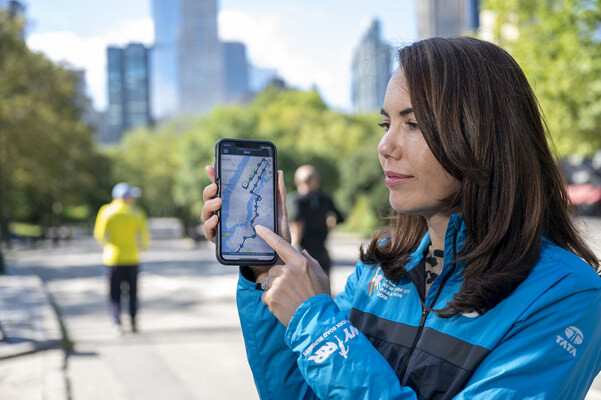
The location and estimated finishing time of in-person runners will be calculated based on performance of training runs and past marathons. This enhanced tracking capability will create the most accurate opportunities for spectators to catch runners live on the course.
"As we return to the iconic TCS New York City Marathon racecourse across the city's five boroughs, we are witnessing the race experience transform like never before," said Surya Kant, Chairman of North America, TCS. "Our 2021 Marathon App is filled with innovations that will help make this year's event a truly global experience, bringing both in-person participants as well as virtual runners across the world together on one platform."
"Together with our title partner TCS, we are looking forward to making the 50th running of the TCS New York City Marathon the most technologically advanced marathon in history," said Christine Burke, Senior Vice President, Strategic Partnerships and Runner Products, NYRR. "This will be a historic year for the event in so many ways, and as we embark on another eight years with TCS, there's no better way to have them engage with our runners than through their most innovative marathon app ever."

The TCS New York City Marathon app features additional enhancements to create a more immersive experience for virtual runners.
At numerous dedicated mile markers in the virtual marathon, the app will automatically play audio files with words of encouragement from past marathoners and iconic sounds from the in-person race. For example, all virtual marathon runners will begin their race with the sound of a cannon going off, simulating a similar experience to what in-person runners hear as their waves begin just south of the Verrazzano-Narrows Bridge.
The app will also allow virtual runners to do an unlimited number of 5K "Practice Runs" prior to their marathon journey to ensure they are comfortable using the app on race day. On race day, virtual runners can restart or pause an unlimited number of times but have 24 hours to complete the 26.2-mile race.
At the finish line, virtual runners will have access to a digital certificate and a selfie filter with an AR medal that can be shared on social media to celebrate their accomplishment.
Marathon City: 3D Map Details
Runners, spectators and fans can explore the TCS New York City Marathon course map in AR through the Marathon City: 3D Map, including:
Points of interest along and around the racecourse
Race day starting times for various groups
Elevation changes along the course
Interactive map showing the Start Village in Staten Island
This new AR experience was created by TCS in a stylized "low-poly" design similar to Marathon City: Sprint to Win and Marathon City: Spin to Win, two inclusive gaming experiences that mimic racing the last 100 meters of the TCS New York City Marathon racecourse through Central Park.
Other Key Features
Share Tracking: This feature on the Runner Details page allows users to share a link that initiates an automatic app download with a specific runner already selected to be tracked during the race.
Optimized Spectator Guides: The app's spectator guide helps fans create an itinerary to navigate New York City, so they're able to see runners on the course. The shareable guide provides a runner's estimated times of arrival, along with transportation directions and recommended viewing locations along the course.
Cheer Cards: Allows fans to support runners using the app to share messages on social media.
Live Pro Athlete Leader Board and Bios: Closely track the race day leaders in real time, as well as have access to bios, records and images of professional athletes running the race.
To download the TCS New York City Marathon App powered by Tata Consultancy Services, go to the Apple App Store or the Google Play Store.
About Tata Consultancy Services
Tata Consultancy Services is an IT services, consulting and business solutions organization that has been partnering with many of the world's largest businesses in their transformation journeys for over 50 years. TCS offers a consulting-led, cognitive powered, integrated portfolio of business, technology and engineering services and solutions. This is delivered through its unique Location Independent Agile™ delivery model, recognized as a benchmark of excellence in software development.
A part of the Tata group, India's largest multinational business group, TCS has over 528,000 of the world's best-trained consultants in 46 countries. The company generated consolidated revenues of US $22.2 billion in the fiscal year ended March 31, 2021 and is listed on the BSE (formerly Bombay Stock Exchange) and the NSE (National Stock Exchange) in India. TCS' proactive stance on climate change and award-winning work with communities across the world have earned it a place in leading sustainability indices such as the MSCI Global Sustainability Index and the FTSE4Good Emerging Index. For more information, visit www.tcs.com.
(10/22/2021) ⚡AMPTCS New York City Marathon
The first New York City Marathon, organized in 1970 by Fred Lebow and Vince Chiappetta, was held entirely in Central Park. Of 127 entrants, only 55 men finished; the sole female entrant dropped out due to illness. Winners were given inexpensive wristwatches and recycled baseball and bowling trophies. The entry fee was $1 and the total event budget...
more...The 2022 edition of Lagos City Marathon will return to full capacity
Organizers of the Access Bank Lagos City Marathon have confirmed the Silver Label race will be returning to full capacity for its next edition billed for February 12, 2022.
This development means the event will join other elite races across the world to return as a full race with about 80,000 to 100,000 runners expected to participate in the full marathon and the 10km fun run.

This was revealed by Yussuf Alli, the General Manager, Access Bank Lagos City Marathon, in an official press statement.
The 2021 edition of the Access Bank Lagos City was an elites only race because of COVID-, with only 300 athletes participating.

Other elite races like London, Tokyo, and others were also elites only races, while many races were outrightly cancelled.
But since September 2021, label races that were elites only in 2021 or were cancelled, have returned as full races, with thousands of runners.
These include the Berlin Marathon, London Marathon, Chicago Marathon, Boston Marathon, and others.
New York Marathon is slated for November 7, while other races are slated for the latter part of the year. Early in 2022 will be the Amsterdam Marathon, Dubai Tokyo, Paris, Houston, and others.
Mr Alli revealed that the World Athletics and Association of International Marathons and Distance Races (AIMS) are excited that the Access Bank Lagos City Marathon will return as a full race.
“I also want to use this medium to assure our numerous runners, especially the 10km fun runners who came to our office or contacted us on phone, emails, and via our website that on February 12, 2022, we will have a full race and that it will include the 10km race. I appeal to intending runners to step up their training”.
The General Manager also said there will be a world press conference the first week of November 2021 to unveil plans for the 2022 Access Bank Lagos City Marathon.
“This is our 7th edition. We are the first marathon in Nigeria to organize the 7th edition. We are also the first race to win a World Athletics Bronze Label in Africa after two editions and the first in the world to win the prestigious Silver Label after four editions.
“Last year, World Athletics gave us the Elite Road Race Label, we are one of the most sought after elite races in the world, in terms of prize money we rank among the top 10 in the world and in the number of participants we are top five in the world, I could go and on.
“To achieve all these before our seventh edition calls for celebration and the celebration is not just for staff, sponsors and vendors but for the media and thousands of runners that love and throng our race,” added Mr Alli.
(10/22/2021) ⚡AMPby Tunde Eludini
Access Bank Lagos City Marathon
“The IAAF and AIMS have a special interest in the Access Bank Lagos City Marathon so if you see their top officials at the third edition, don’t be surprised. Lagos is one of the few marathons in the world that got an IAAF Label after just two editions. This is a rare feat. The event had over 50,000 runners at...
more...Are you looking for a coach to take your training to the next level?
Before we jump into whether or not you need a running coach, it’s important to understand that personal coaching can be for everyone. If you’re trying to run UTMB or simply want to run a mile without stopping—there is a coach out there for you.
Whether or not you need someone to coach you to hit those goals (and beyond!) comes down to your desire to step up your training, your personality, and your budget.
How bad do you want it?

Desire is a simple concept. If you don’t truly want to improve as a runner, no coach in the world is going to be able to help you. But keep in mind, your desire doesn’t have to be for any sort of competition. A coach can help you to just keep running in your life. They can help you fit it into your schedule in a way that will create a lifelong love. “You get to start wherever you are and go wherever you want to go,” says Heather Stephens, a coach with Seattle-based Rad Running.
And certainly, if you have big competitive goals, coaches bring that training expertise to the table to help you get there.
Do you need guidance?
Kristin Metcalf, who coaches alongside Stephens at Rad Running, says that most athletes come to them for personal coaching because they want to be held accountable. If you are a person who needs someone to set a schedule for you and get you out the door, a coach provides that. They will check in with you after the workout and, if you falter, help you create a plan to do better next time.
On the flip side, runners who don’t lack motivation but are instead too headstrong may also find a coach beneficial. You may be prone to overtraining or continue to get injured when you go it on your own. Stephens says she sees that fairly often in the athletes she trains. “You just need someone to say, ‘Hey, permission to take the day off. Let’s do it tomorrow.’”
A personal coach will be able to guide you through the balance of training, racing, rest, and recovery. They can be a sounding board as you go through the whole process.
How much are you willing to spend?
Depending on how involved and specialized the training is, coaching tends to range from $100 a month all the way up to $500 or more a month, says Metcalf. A less expensive option is to have a virtual coach.
One such program that is just now starting up is Runner’s Coaching "Be coached the Kenyan Way." Yes, you read that right. You can now be coached by world class English speaking Kenyan coaches.
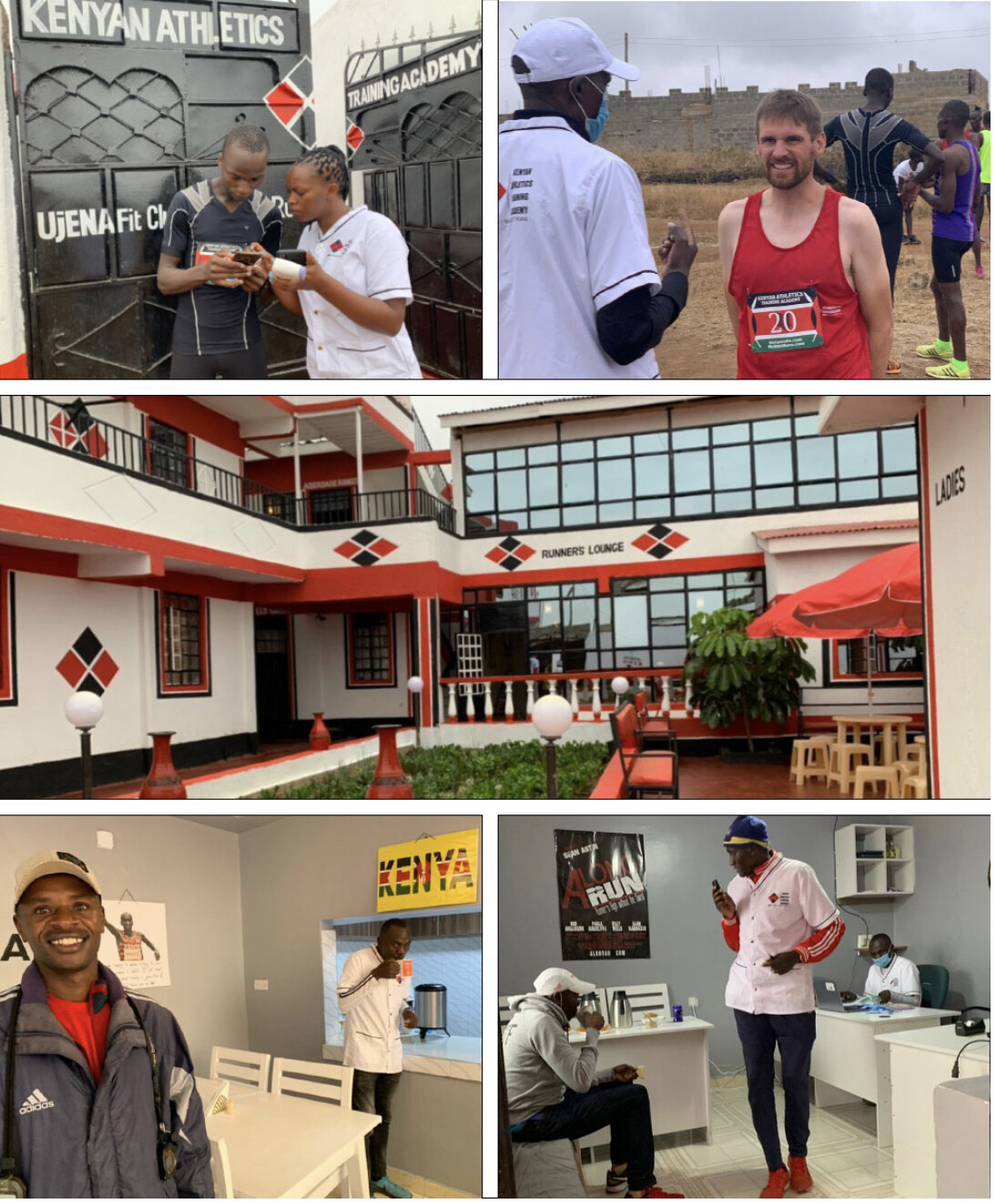
These are coaches that are based at the Kenyan Athletics Training Academy in Thika Kenya. They train people in person at the Academy as well as virtually around the world. Their virtual training program is just $79US per month. You just need a smart phone and a free runner's app (like Garmin Connect) and you are set.
May you choose in-person or virtual, Metcalf and Stephens recommend that runners try to analyze the costs and benefits from every angle before committing to a coach. Think about how much you might pay for a monthly gym membership or fitness classes. What kind of time is the coach committing to you? What else might they be offering (like access to a physical therapist or nutritionist on their staff)? All of those things can help you determine if the cost is worth it to you.
“It’s kind of like when you go to a restaurant and you sit down and you expect to have a certain experience and a certain level of food,” says Stephens. “Is that valuable to you versus going to the pizza place down the street?” In this analogy, the pizza place is like an online training plan, which is a more affordable, cookie-cutter approach. But in that way, many recreational runners might view personal coaching as an indulgence.
Stephens compares coaching to therapy, which isn’t always treated with the importance it deserves. “There’s this thing in your life that you love,” she says “And if running has the power to help you make other areas of your life go smoother, for me, at least, if I do a hard workout and I nail it, I feel like I set the rest of my day and week up really well.” If that’s true for you, the cost may well be worth it.
There are a lot of options available to you.
(10/22/2021) ⚡AMPShould I Exercise the Day Before Running a Race?
It's the day before your half-marathon and you are looking forward to the race. Should you go for a run today, or take it easy and rest? There are lots of opinions about whether or not you should run the day before a race, regardless of whether you're running a shorter race like a 5K or a long-distance event such as a marathon. The bottom line is that you really need to see what works best for you.
Reasons to Run Before a Race
Every runner is different. Those who are in favor of exercising or running the day before a race cite several reasons for doing so.
Confidence: Running the day before may give you more confidence on race day.

Calmness: An easy, 20-minute run the day before a race can help you loosen up and shake off nervous feelings.
Relaxation: Light stretching or foam rolling1 after a short jog helps you stretch out and relax.
Routine: Sticking to your schedule is important before a race, since making any big changes in how you prep can lead to poor performance or even injury.

Day-before running may have benefits for specific distances. Running the day before a 5K can help improve your stride and flexibility on race day. Just like your regular warm-ups, a 15- to 20-minute run the day before a race helps improve blood flow to your legs. This can help stave off fatigue during your run. Similarly, a 20-minute jog or relaxed run the day before your 10K race will help keep your muscles loose and ready to perform during your event.
Running the day before a longer-distance run, such as a half-marathon, can help your muscles store glycogen more efficiently. This will help you power through the grueling miles on race day. An easy run the day before an endurance event (like a full marathon) can help shake out muscles. The goal isn’t to push yourself, but just to get into racing mode. Limit your run to under 20 minutes to avoid depleting glycogen stores.
Reasons Not to Run Before a Race
Race day is taxing. Some runners choose to dedicate the day before a race to relaxing, so they feel fresh and ready at the starting line. Benefits of a day off include:
Rest: It's good to rest your running muscles in preparation for a race, especially if it's a long one, such as a half-marathon or marathon.
Recovery routine: If you are used to taking a recovery day before a more aggressive run day, there’s really no reason why you shouldn’t be able to safely take a rest day before an event.
Testing Out the Course
Running the hills on the course just to "test them out" and be mentally prepared for them could actually backfire as a strategy. If you think that could be of benefit, it is best done a few days earlier rather than the day before a race. If the course is local to you, make it part of your training runs.
The course is likely to be very different during the race when it is closed to traffic and there are crowds of runners. If you've traveled to the race and the course is unfamiliar, you'll have to decide whether it will be psychologically beneficial to take a course tour. It could dampen your anxiety, but it might also feed it. It may be better to study a map of the course, especially spotting where the on-course support will be for hydration and toilets.
Most importantly, whether you run before a race or not, remind yourself that you're well-trained and ready for your race.
If you're the type of person who gets race anxiety, it might be beneficial for you to exercise or run the day before your race. Just make sure that you don't do a significant, hard workout, like a long run, speed workout, or strength training. If you think you perform better on rest and you don't need a short shake-out run, then just relax during those 24 hours leading up to the race. Do what you feel is best for you.
(10/22/2021) ⚡AMPby Christine Luff
Eliud Kipchoge and Joshua Cheptegei to battle for best male athlete award
Olympics men's marathon champion Eliud Kipchoge will be hoping for a hattrick of awards after he was nominated for the World Athletics Male Athlete of the Year award alongside nine others.
The world record holder for the men's marathon was crowned victor in 2018 and 2019 but missed out last year, which came almost two months after a disappointing outing at the London Marathon where he finished a shocking eighth due to fitness complications.

Kipchoge has since bounced back handsomely from that setback to win a second successive Olympic marathon title in Tokyo, a couple of months after he excelled at the NN Mission Marathon in Twente, the Netherlands.
However, it will not be an easy passage to the throne for the Kenyan as the other nine competitors have an equal claim to the top gong owing to their stellar seasons.

Among them is Ugandan Joshua Cheptegei who finally clinched his first Olympic gold at the Tokyo Games in August, timing 12:58.15 to win the men's 5000m.
The 10,000m world champion and world record holder also came away from the Japanese capital with a silver medal in the 16-lap race.
A world lead of 8:09.55 in 5000m at the Prefontaine Classic was the icing on the cake for the Ugandan who has been one of the standout athletes in the world for the past two years.
Voting ends on November 6 and is open to WA Council, WA Family whereas fans can vote via WA's social media pages.
Other nominees:
Sweden's Mondo Duplantis (Olympic and world pole vault champion); Norway's Jakob Ingebrigsten (Olympic 1500m champion); Portugal's Pedro Richardo (Olympic triple jump champion); Ryan Crouser (Olympic and Diamond league shot put champion); Norway's Karsten Warholm (Olympic 400m hurdles and world record holder); Canadian Damian Warner (Olympic decathlon champion); Greece's Miltiadis Tentoglou (Olympic long jump champion) and Sweden's Daniel Stahl (Olympic discus champion).
(10/22/2021) ⚡AMPby Omondi Onyatta
What Runners Can Learn From Professional Soccer Players
When people sit down to watch a soccer game, they’re usually not paying all that much attention to how or for how long players run. That, after all, is not the objective of the game; it is merely a tool that players use to give themselves an advantage.
The real action is the passes, shots, saves, goals, tackles, and so forth.

Yet, just because the running element is secondary, that doesn’t mean that there’s nothing that amateur runners can gain from soccer players. Quite the opposite, in fact -- there’s plenty!
Because though it’s often forgotten, today’s soccer players are extremely fit, much fitter than they were, say, thirty years ago. The influx of cash in the game during the past couple of decades means teams now have access to a world of conditioning experts.
The result? Many footballers would comfortably compete in an amateur marathon race. If you’re looking to improve your running ability, then read on.

Lets run through some of the key lessons you can learn by looking at the fitness programs of the world’s best soccer players.
Ronaldo’s Secrets
Cristiano Ronaldo isn’t just a fantastic footballer; he’s also one of the fittest people on the planet. He’s so fit that despite being 36, he continues to be one of the world’s leading players, scoring five goals in six appearances following his return to Manchester United.
If a player of that age continues to influence the tips made by football experts, you know they're doing something right.
What’s his secret? He does the basics of a robust fitness regime, of course, but also throws in a few extras. While you might not be able to spend £50,000 on a cryotherapy chamber, you probably can follow his sleeping routine in the run-up to a big race.
The Portuguese star takes five naps a day and goes to bed early before a big match.
The Importance of Recovery
Marathon runners usually have a pre-race schedule that’ll maximize their performance. But what you do after the race is also vital, especially if you’re hoping to run long-distance races regularly. Soccer players take ice baths and wear compression pants immediately after a game to prevent muscle soreness.
In the days after a game, they’ll engage in very light workouts. There’s value in pushing your body to the limit, but that shouldn’t be your approach all the time. There are moments to work hard, moments to relax. Indeed, without the recovery period, it wouldn’t be long before the body begins to break down.
Eating Well
Soccer players spend many hours developing their body’s strength. But it’s not just how hard they push their body during training that determines how prepared they are for the game. What they eat around their training regime is just as key.
You can maximize your workouts by having a diet that’s high in protein and carbohydrates. Fruits, vegetables, and water are also important.
Soccer players have plenty of beans, lentils, eggs, rice, and salmon in their diets, and you should, too, especially when you’re in training mode. On the day of your race, opt for a meal that’s low in fiber and fat—for example, chicken breast and pasta.
Longevity Hacks
If you’ve been following marathon running in the news, then you’ll probably have heard of Fauja Singh, the world’s oldest marathon runner, who ran a marathon at the age of 101. But most people give up marathon running long before then. It’s unusual to see people competing in endurance running races beyond the age of fifty. It does, after all, take a toll on the body.
Soccer players aren’t just fitter than ever before. They’re also playing at a higher standard for longer than they did in the past. Some of the greatest players over the past couple of decades, like Ronaldo, Messi, and Ryan Giggs, have been the best not only because they’re fantastic players but because they performed at a top level for more than fifteen years.
So what is it that allows them to perform for so long? Flexibility. Yoga is becoming an integral part of all soccer club’s training regimes because it helps to keep the body youthful and agile. They understand that while body strength, especially core body strength, is important, the player's flexibility holds the key to high performance as they age. As well as yoga, stretching, drinking a lot of water, and eating vegetables and fruits that promote flexibility -- such as kale and spinach -- should form part of your lifestyle.
The Art Of Carrying On
Finally, let’s think about the spirit of soccer. It’s far from the perfect game, sure, but there’s no denying that there are moments of triumph that few other sports can match, in large part because of the passion for succeeding that radiates from the top players and teams. There comes a point for every long-distance runner when the desire to stop running becomes almost overwhelming. Yet, a runner that bows at that stage will not reach their full potential, and that’s arguably the most important factor. It’s not how fast you run that counts or how far, but that nothing is left on the table.
Your inner drive will take you far. But sometimes, you’ll need a dose of inspiration, and when it comes to professional sports, no sport has as many inspirational moments as soccer. There’s a long list of teams snatching victory from the draws of defeat when all seemed lost, such as Manchester United’s Champions League victory over Bayern Munich and Liverpool overturning a 3-0 deficit by beating Barcelona 4-0. If those types of accomplishments don’t inspire you, then nothing will!
Final Thoughts
There are more similarities between soccer and running than most people realize, especially when looking through the lens of professional soccer. So look at the pros if you’re looking to increase performance and give yourself those small advantages that can make all the difference. After all, they didn’t get to where they are without having focus, discipline, and expert fitness routines.
(10/21/2021) ⚡AMPWill a strong core improve your running performance?
Do you want to improve your running times? Besides endurance and well-trained legs, a solid core is extremely important for your running performance. Many runners, however, are unaware of how much they can benefit from having strong abs and back muscles.
IMPROVE YOUR RUNNING PERFORMANCE

Running basically consists of constantly shifting your weight and changing support from one leg to the other. Stable posture, which is necessary for running efficiently, is provided, on the one hand, by the skeleton and, on the other, by the muscles that connect the spine with the shoulder girdle and the pelvis. The most important muscles for stabilizing your trunk are your abs and your back muscles.
What happens if your core muscles are weak? You will make unnecessary movements when you run, thus decreasing your forward propulsion. A stable upper body ensures an efficient transfer of force directly to the ground. The more economical your running technique is, the less energy you will waste and the faster you will be.

PREVENT OVERUSE INJURIES AND OTHER RUNNING-RELATED INJURIES
When you run, your body is subjected to forces 3 to 4 times your own body weight. Studies have shown that many of the back problems reported after running are due to underdeveloped core muscles.
Did you know that marathon runners are up to three centimeters shorter when they cross the finish line than they were before the race? This curious phenomenon is due to the many small impacts to the spine during the race, which cause the intervertebral discs to lose fluid and thus shrink. This also reduces the disc’s ability to absorb shocks. But don’t worry! As you sleep, the intervertebral discs recover, fill back up with fluid and expand to their original size.
On a much smaller scale, this process takes place during each of your running sessions. Well-developed abs and back muscles support your spine and protect you from overuse. The more conditioned your core muscles are, the longer you will benefit from their stabilizing effect.
(10/21/2021) ⚡AMPby Herwig Natmessnig
2021 Cleveland Marathon will have its first in-person race in more than two years on Sunday
Thousands of runners will fill the streets for the first time in more than two years as the 44th Union Home Mortgage Cleveland Marathon makes its in-person return on Sunday.
The coronavirus pandemic has strained the annual event, causing the race to go virtual in 2020. The marathon, half-marathon and other events are traditionally run in May, but this year they were postponed until the fall.

Runners are excited to be returning to in-person racing after such a long hiatus, said Jack Staph, the event’s president and executive race director.
“We’re one of the oldest races in Ohio, and it’s quite a tradition,” Staph said. “There are people who’ve run our race for many years. We’ve been met with nothing but excitement -- and caution. I mean people want to make sure that everything’s going to be OK.”

Staph said event organizers have worked closely with medical partner University Hospitals, as well as local and state health departments, to protect runners and volunteers.
Perfect running weather is in the forecast Sunday, with the high expected to be around 58 degrees with partly sunny skies, according to the National Weather Service.
The marathon and half marathon will begin and end at Public Square, with both races starting at 7 a.m. The 5K and 10K are set for Saturday at 7:30 a.m., and they will also begin and end at Public Square.
Approximately 5,500 people are expected to compete in the half and full marathons, with the route taking them through parts of downtown, Ohio City and Lakewood.
A virtual race option is also being offered for all distances if runners aren’t comfortable competing in person. Another 60 to 80 runners are estimated to compete in the virtual race, Staph said. Those runners will time themselves, and results will be based on the honor system, he said.
However, Staph noted race organizers are taking precautions to protect the thousands of runners who are competing in-person. Masks will be available, and organizers are recommending -- though not requiring -- runners to wear them at the start and finish lines. Volunteers will be required to wear masks during race weekend, and those who touch food or drinks will also have to wear gloves.
Social distancing will be encouraged as well, but because of the nature of the race, runners should be split up after the first couple of miles, Staph said.
Hand sanitizer will also be provided at Friday’s Health and Fitness Expo, located in the Huntington Convention Center. Sanitizer will also be available at the Gear Check tent Saturday and Sunday, according to the marathon’s website.
The Cleveland Marathon is not requiring runners to show proof of vaccination or a negative COVID-19 test. The race’s organizers made the decision after consulting with medical experts and government officials, Staph said.
“The key is that we’re working with the state and county health departments and University Hospitals, and they haven’t indicated that vaccination or a negative test would be needed,” Staph said.
Staph said he’s excited to see the in-person marathon return to Cleveland, and he hopes the event can return to its usual time in May next year.
(10/21/2021) ⚡AMPby Cameron Fields
Cleveland Marathon
The Cleveland Marathon features a relatively flat and fast course, great volunteer support and a scenic view of downtown Cleveland and its major landmarks. The course has been designed for our athletes to enjoy views of Browns Stadium, the Rock and Roll Hall of Fame, Lake Erie and many other Cleveland highlights. The Cleveland Marathon began in 1978 in an...
more...The Amway River Bank Run, is set to return this weekend
After a nearly 900-day hiatus of the largest 25K running race in the U.S., the Amway River Bank Run is returning Saturday to Grand Rapids.
The 44th Amway River Bank Run will take place Saturday morning, Oct. 23, with 5K, 10K and 25K races all starting and ending in downtown Grand Rapids. There will also be a 5K community walk.
The in-person event was cancelled in 2020 and postponed in 2021.
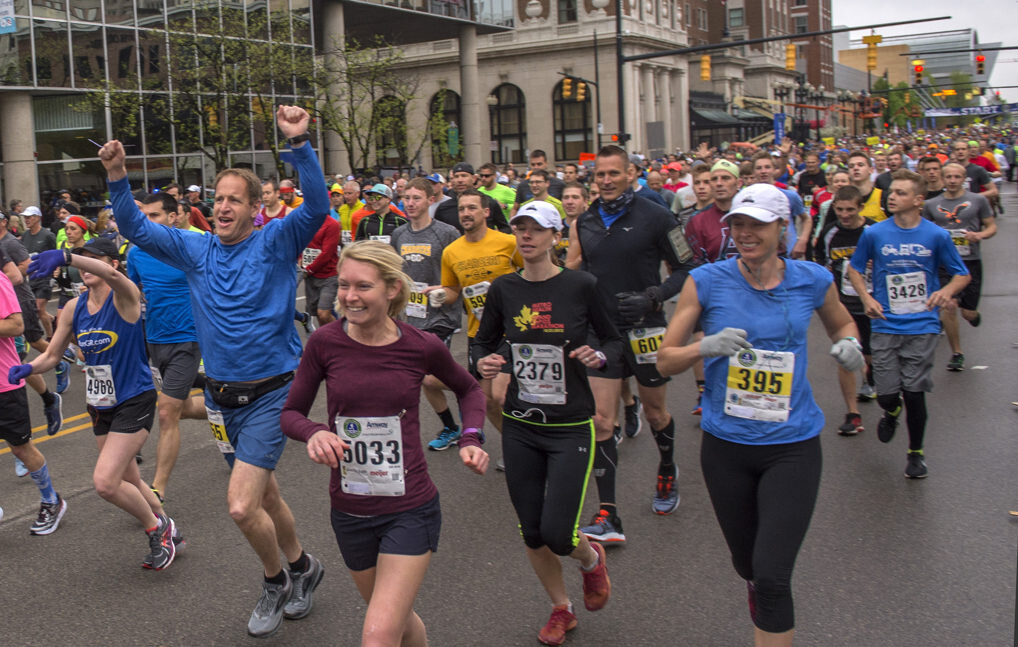
“I can’t tell you how many people have commented on how excited they are to be back in a real race again,” said Russ Hines, CEO of River Bank Events and Media, referring to the virtual version of the races held in 2020. “The energy level around that has been really, really exciting.”
The 25K run begins at 9:30 a.m. on Monroe Avenue at Lyon Street. The event this year is presented by Fifth Third Bank with Spectrum Health.
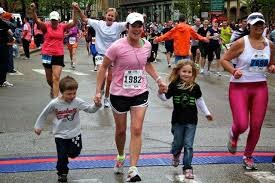
People can still register for any of the races until 5 p.m. Oct. 22. Further details can be found at runsignup.com/Race/MI/GrandRapids/AmwayRiverBankRun.
The event was postponed and then turned into a virtual race in 2020 amid the pandemic.
Normally taking place in May, the race was postponed as well this year until October due to pandemic concerns and a hope that the fall would have a “closer to normal” atmosphere.
Organizers say the race this year will look like those of years past but with some COVID-19 safety protocols. Finish Fest is also returning this year and will take place at Calder Plaza.
While the Amway River Bank Run normally draws more than 15,000 participants, Hines said organizers are expecting about 6,000 people to compete this year. Those turnout figures, he said, align with what many other races around the country are seeing.
Race Director David Madiol said there are a variety of factors at play behind the lower turnout.
By moving the race from the spring to the fall, it now has to compete with a number of other local and national races normally scheduled during the fall, as well as those that were also postponed from the spring, Madiol said.
Another thing is the timing of the training, he said. During a normal May race year runners train during the colder months leading up to it. Now, he said, they may choose to skip the race instead of training in the hot summer.
Lastly, a lot of people still remain tentative about being among large crowds of people due to the pandemic, Madiol said. Organizers are confident about the safety of the race and those spectating, he said.
“We’re so excited. We’re really geeked,” Madiol said. “We’ve done everything we can to make sure we have a safe event this coming weekend and we really want to get this one up and running. We want to be back. We want to be back and show that we can have these great large scale events in downtown Grand Rapids again.”
(10/21/2021) ⚡AMPby Michael Kranzs
Amway River Bank Run
The Amway River Bank Run presented by Fifth Third Bank with Spectrum Health the Official Health Partner celebrates over 43 years. More than 16,000 people are expected to compete in the event which features the largest 25K road race in the country and offers the only 25K Wheelchair racing division in the world along with a 25K Handcycle division. The...
more...Recent research says that exercise is better than weight loss to improve long-term health
When a doctor prescribes exercise to a patient, it’s usually with the goal of losing weight to improve their health. But what if we stopped worrying about the number on the scale and just focused on the benefits of physical activity? A recent study compared the health benefits of weight loss with those of exercise and determined that while both can improve health, a “weight-neutral” approach to exercise is better for you than trying to shed pounds.
The researchers decided to ask the question “should weight loss be the primary focus of obesity treatment?” While this may sound counterintuitive, they note that the majority of people who attempt to lose weight end up falling into a futile cycle of weight loss and gain, which can be even worse for your health than being overweight.

“In fact, chronic weight cycling is the norm for millions of adults and is likely to remain so for as long as weight loss persists as the cornerstone of obesity treatment,” the researchers say.
Instead, they propose a weight-neutral approach to treating obesity-related health conditions, which they say can be just as effective, if not more effective, at improving the health of individuals. The reason for this, they explain, is that the majority of obesity-related health issues are not because of a person’s weight per se, but because of a lack of physical activity and cardiorespiratory fitness. During their review, they point to several studies showing that increasing physical activity levels is consistently associated with a greater reduction in risk for mortality and cardiovascular disease when compared with weight loss.
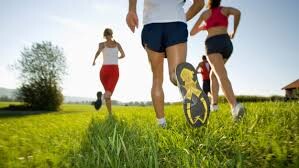
In addition, regular exercise has been shown to improve major markers of cardiometabolic health, independent of weight loss.
The bottom line
A quick glance at the numbers is all it takes to see that over the last 40 years, our attempts to lose weight to improve our health have fallen flat. The benefits of regular exercise, on the other hand, are undeniable — regardless of your shape or size.
This research shows that our weight has far less to do with our actual health than we originally thought, so perhaps it’s time to stop focusing so much on the numbers on the scale. Exercising to lose weight often leads to unhealthy habits like underfuelling and restrictive diets, which are unsustainable and often lead to injuries. A better approach, if you’re hoping to improve your health, is to allow your weight to be what it will be, and instead focus on getting regular physical activity.
(10/21/2021) ⚡AMPby Brittany Hambleton
Top Five Podcasts For Runners
Runners tend to be unique for a variety of reasons. From the outside looking in, they seem to be on an unending mission to push their bodies to new limits. Whether running long distance or entering a steeplechase, most non-sporting types view runners with bafflement; after all, not many can motivate themselves to get outside for a basic jog.
This has led to a unique community amongst runners. Not only do we support one another in terms of training and advice, but we also share incredibly niche interests related to the hobby. For some, it’s about the latest equipment and technology. For others, it’s about relying on the mind to increase stamina.

In the last five years, runners have been treated to a new form of community-building and entertainment: the podcast. With over 500,000 active shows on Apple’s platform alone, podcasts cover diverse topics for all interests, from current events to true crime to specialty niches. In fact, some shows provide incredibly granular looks at fringe topics.
For example, there are dozens of podcasts that cover poker from different perspectives, including the lifestyle of top pros, advanced strategies, and even analysis on card value. The same in-depth and holistic approach can be found in running podcasts that aim to build new ideas in the world of running, explore the past, and get nitty-gritty with the small details, from carbs to the BQ.
Here are five of the best runners podcasts available to listen to right now.
Trail Runner Nation
Trail running is not the easiest of activities. Combining running with steep hills and hiking makes it a worthy challenge for any runner. Trail Runner Nation provides the perfect companionship for those about to start their journey, covering the basics as well as insider tips that help runners hit the trails mindfully.

Suitable for beginners and advanced runners, this podcast dives into the artistry of running with pace techniques, nutritional facts, and intuitive training. Frequently featuring a panel of experts, the podcast also covers post-run habits and how to take care of possible injuries.
Running, Lifestyle & Culture (RLC)
As the name suggests, the Running, Lifestyle & Culture podcast gives the listener a well-rounded overview of a runner’s experience in society. It combines an easy-listening and entertaining atmosphere with educational information about the history of running.
As such, the podcast often includes organizers from running communities and Olympic marathon runners. With an average length of 35 to 40 minutes, this podcast is ideal for a quick after-work before-dinner run.
Ali on the Run
Brought to you by former sports journalist and race announcer, Ali Feller, Ali on the Run has over six million downloads making it one of the most popular podcasts for runners. Ali on the Run covers everything from the running community to everyday challenges that beginner runners face, from finding the right pair of running shoes to downloading the right app for your running style.
Run This World
Founder Nicole DeBoom had two ideas when she launched the Run this World podcast. The first was to cover the importance of empowering women, and the second was to cover the power of positivity. The former athlete wanted a podcast dedicated to the inspirational stories of women across the world and their shared love for running. Often featuring motivational speakers, visionaries, and health experts, this show is perfect for an early morning run to set you off in good spirits.
Endurance Planet
There are some exemplary practices anybody can incorporate into their daily routine in order to become a better runner. These may include a well-designed diet, getting enough rest, or integrating aerobic exercises into the weekly workout. The Endurance Planet podcast, hosted by multisport athlete Tawnee Prazak, dives into all the intricacies of making a good runner better.
As a holistic coach, Prazak takes into account metabolic efficiency, balancing your strength and running analysis. The podcast also delves into training for triathlons from a zen angle, which is a great asset for more seasoned athletes.
(10/20/2021) ⚡AMPValencia Half Marathon announces its international elite runners aiming to achieve new records for this weekend
The Valencia Half Marathon Trinidad Alfonso EDP, organized by SD Correcaminos, has confirmed the names of the international elite that will take to the streets of Valencia Ciudad del Running on October 24th.
After the Elite Edition last year in which a new male world record for the distance was set, 57:32 by Kibiwott Kandie, and four runners ran under 58 minutes, the Valencia Half Marathon aims to become the world’s fastest in 2021, all of this without losing sight of the challenge of the women’s world record, currently set at 1:03:44.
Ethiopia’s Letesenbet Gidey, current 5000m record holder (14:06.62 at the NN Valencia World Record Day in 2020), 10,000 (29:01.03, Hengelo) and 15K record holder (44:20), will try to improve upon her bronze medal in the 10,000m at Tokyo 2020 debuting at the Valencia Half Marathon at a world–class level. Alongside her, the last two winners of the event, Genzebe Dibaba (1:05:18 in 2020) and Senbere Teferi (1:05:32 in 2019 and 5K recordwoman with 14:29), as well as Yalemzerf Yehualaw (1:04:40), third in the last World Half Marathon in Gdynia (Poland), and who took 19 seconds off the world half marathon record, running a remarkable 1:03:44 at the P&O Ferries Antrim Coast Half Marathon.
In spite of the immeasurable records that were registered in the men’s category in 2020, with four runners under 58 minutes and the previous world record, the Valencia Half Marathon will also set up a race of an immensely high level in the men’s category. The third classified of the Elite Edition, Rhonex Kipruto (57:49 and the current 10K road world record) will return and the Ethiopian Muktar Edris, double world champion in 5.000m on track and with a time of 59:04 in half marathon, in his only experience in road race. They will be joined by several sub 59-minute runners over the distance and some world-class debutants from the track.
Marc Roig: “Dreaming about a world record is possible and desired”.

Marc Roig, manager of the international elite of the race, said that “Olympic years always have a special atmosphere, but the calendar does not stop and the half marathon (non-Olympic distance) has other crowns to share out. And they want them, both those who triumphed in Tokyo and those who fell short. That’s why dreaming about the world record is possible and desired”.
The Valencia Half Marathon is working with the teams of the top elite athletes so that their training in the weeks leading up to the event will culminate in an unprecedented peak of performance in Valencia.
(10/20/2021) ⚡AMPValencia Half Marathon
The Trinidad Alfonso Valencia Half Marathon has become one of the top running events in the world. Valencia is one of the fastest half marathon in the world. The race, organized by SD Correcaminos Athletics Club, celebrated its silver anniversary in style with record participation, record crowd numbers, Silver label IAAF accreditation and an atmosphere that you will not find...
more...2021 Bermuda Triangle Challenge cancelled again as organizers emphasise safety first
The ever-popular Chubb Bermuda Triangle Challenge has fallen prey to Covid-19 for the second successive year.
The challenge, which consists of the Butterfield Front Street Mile, the BF&M 10K Run & Walk, and the PwC Half and Full Marathon, has long been listed as a Bermuda Tourism Authority signature event on the sports tourism calendar, attracting many overseas participants.

However, the persistence of the global pandemic has led the BTC race committee to cancel the event after consultation with the BTA, main sponsors Chubb, Butterfield Bank, Bermuda Fire and Marine and PwC, and stakeholders the Bermuda Police Service and the Ministry of National Security.
It was jointly determined by all parties to cancel the race partly because of a low sign-up of participants, particularly from overseas, with Bermuda listed as a Level 4 destination by the Centres for Disease Control and Prevention.

“Out of an abundance of caution, the race directors have decided to cancel the 2022 Chubb Bermuda Triangle Challenge race weekend,” said Martin Merritt, of the BTC race committee.
“The BTC race committee tried to develop lower-risk race scenarios for the event, but at the end of the day, we could not develop a foolproof plan to hold three major running races involving 1,500-plus participants, many from overseas, requiring hundreds of volunteers and support staff, without elevated risk.
“We are very disappointed to have to cancel the event for a second year in a row, but the logistics of having to hold a three-day event under these circumstances is not feasible and poses a health risk for all involved, which we believe is too great a risk to accept at this time.”
Samantha Froud, Chubb’s chief administration officer, Bermuda Operations, spoke of the company’s agreement to cancel the event with focus now turning to a return in 2023.
“Chubb is in full agreement with the BTC race committee to cancel this event, as the health and safety of our local community is of utmost importance,” she said.
“Chubb remains committed as a lead sponsor for the 2023 Bermuda Triangle Challenge event. We will now focus our energy on working with the race directors, the BTA and the other race sponsors to ensure the 2023 event is spectacular.”
Hazel Clark, the director of sales and business development at the BTA, echoed those sentiments, with the safety of the wider community paramount to the decision.
“The Bermuda Tourism Authority understands the complex interplay of factors that led the BTC race committee to make the decision to cancel the 2022 event, and we support the move,” she said.
“Ultimately, prioritising the health and safety of the participants, volunteers and our community will always be at the forefront of our decision-making.
“Though the reality is the January 2022 event will not take place as we intended, we look forward to working with the committee to plan the next race weekend when conditions allow.”
The BTC race committee has confirmed that any participants who may have already signed up to the event can take up an option to defer their entry to the 2023 Race Weekend or claim a refund.
Participants who have registered will receive an e-mail this month with details on how to defer or claim a refund.
(10/20/2021) ⚡AMPby Sam Murley
Bermuda Triangle Challenge
Surrounded by crystal clear waters warmed by the Gulf Stream, Bermuda is the ideal winter time destination for the active minded traveler. With its lush foliage and pastel colored buildings, Bermuda is one of the most beautiful places on earth. A short flight of 2-hours or less from most US East Coast cities and Toronto, Bermuda only feels like it’s...
more...Four easy and effective ways to relax your feet and legs before your next run
It’s important to be properly prepared for your next run. A lot of people overlook the importance of warming up their muscles before they start running, and that can lead to injury. One way you can warm up your legs is by using a foam roller or rolling pin if you don’t have one. This will help loosen up any tight muscles, which will make it easier for you to run when the time comes!
1.- Massage Chair
You can use a massage chair to relax your lower legs and feet. You should be able to find this at department stores or online retailers like Amazon. It’s pretty self-explanatory how it works – you just plug the machine in, sit back and let it do its job! We recommend finding a premium massage chair that comes with different modes (tilt pressure, intensity of vibration/heat). These are good because then you’ll have a variety of options on which setting will work best for what your needs may be at that time. Once again, if you’re using these types of gadgets regularly we suggest wearing socks as opposed to going barefoot otherwise you risk damaging other parts of your body by slipping relative to the surface where the device is located.

2.- Use A Foam Roller Or Rolling Pin
You can use a foam roller or rolling pin to roll out your calves and feet. If you don’t have a foam roller, use a tennis ball or rolling pin to do the same thing. When you find tender spots in your legs and feet (you will), hold that spot on the roller for 15-30 seconds without moving it – this is called trigger point therapy and can help relieve muscular tension. It helps to release tight muscles. It can help reduce pain, increase circulation and relieve soreness in your legs. For those of you who don’t run every day – it’s good if you’re recovering from an injury or haven’t done any exercise for some time (like me). You can use them on other parts of the body like the upper back as well!

You should be able to find these at sports stores or by searching online retailers. We recommend buying one that is firm but not too hard so that it feels uncomfortable when used properly. If you have sensitive skin, try putting a towel over top first just to protect yourself before applying pressure with the implements mentioned above onto your calves/feet.
3.- Compression Socks
Compression socks can help keep your legs and feet warm, which is important to avoid injuries such as muscle cramps. A lack of blood flow to the muscles in your lower body can result in leg cramping during a run.
Compression apparel like calf sleeves or compression socks reduce inflammation and increase circulation that will assist with warming up those areas. This is especially helpful before running on cold days when you’re more susceptible to injury. Your clothing choices play an essential role as well because if you wear loose pants over top of your compression garments they could bunch up around your ankles making it hard for them to do their job properly – therefore reducing any benefits from wearing them.
4.- Yoga
Yoga has many health benefits, including relaxing your legs and feet. It’s no secret that yoga is good for you in the long run – but what some people don’t realize is how it can also benefit runners before they run! The best part about this solution is that it doesn’t require any extra gadgets or equipment to implement into your life. All it requires on your end is using up an hour of free time where you’ll stay off of your feet (yes – even if you’re lying down) to relax them after getting home from work or school so they are ready to go when the next day comes around again. Here’s a list of simple poses anyone can do at home: Child pose, Bridge Pose, Corpse Pose, Happy Baby.
You may also want to try the Surya Namaskar (Sun Salutation) sequence – this is a traditional yoga series that stretches your entire body and can help loosen up any tension in your lower limbs as it did for me! I suggest checking out some tutorials online before attempting them on your own so you know exactly what position requires what kind of flexibility/level of intensity.
To have a successful run, it’s important to take care of your body. One way is by taking the time before and after a workout to relax your legs and feet. This will help you recover more quickly from running so that you can get back out on the road sooner! A longer recovery period means less chance for injury because muscles are not overworked or strained while recovering which also prevents long-term problems like tendonitis or plantar fasciitis.
(10/20/2021) ⚡AMPby Colorado Runner
Registration now open, secure your place at the start line for the Ras Al Khaimah Half Marathon
Registration for the highly anticipated Ras Al Khaimah Half Marathon 2022 is now open, with runners from across the UAE and further afield invited to secure their spot at the world’s fastest half marathon, set to take place on Friday, February 18 on Al Marjan Island.
The World Athletics Gold Label race returns to mark its 15th edition, welcoming back elite athletes, running enthusiasts and amateurs from across the globe, to participate in the record-breaking event. Organised by RCS Sports and Events, participants can register now and choose from four categories, with early bird prices starting at Dh295 for the Half Marathon, Dh500 for the two-person Half Marathon Relay, Dh80 for the 5K and Dh50 for the 1K fun run.

Adding even more value and entertainment options, this year will see the introduction of a series of all-new experiences, entry categories and hotel offers, including a VIP package for participants seeking a truly world-class event.

Participants and supporters can also purchase tickets for the pre-race pasta party and post-race brunch, held at DoubleTree by Hilton.
Raki Phillips, CEO of Ras Al Khaimah Tourism Development Authority, said: “We look forward to showcasing Ras Al Khaimah’s stunning landscape in the 15th edition of the Ras Al Khaimah Half Marathon. We are proud to host the prestigious event at the scenic Al Marjan Island offering renowned hospitality and service from world-class hotels and resorts to all guests. The highly anticipated race is set to be an unforgettable experience with new and enhanced offerings, as we welcome back an incredible line-up of elite athletes and visitors from across the globe in February 2022.”
Runners can register on the RAK Half Marathon website.
(10/20/2021) ⚡AMPRak Half Marathon
The Ras Al Khaimah Half Marathon is the 'world's fastest half marathon' because if you take the top 10 fastest times recorded in RAK for men (and the same for women) and find the average (for each) and then do the same with the top ten fastest recorded times across all races (you can reference the IAAF for this), the...
more...2021 Jerusalem Marathon is just 10 days away
After a long delay due to COVID-19, thousands of runners expected in the capital to participate in six different races.
After being postponed due to the Coronavirus pandemic, the 10th Jerusalem International Winner Marathon will be held on October 29, with the participation of tens of thousands of runners from around Israel and the world.

The traditional marathon includes a track through breathtaking scenery, which integrates a challenge to the runners and spectacular landscapes that tell the story of Jerusalem throughout the city’s 3,000 years: The Israel Museum, the Supreme Court, the seat of Israel’s presidency, the walls of the old city and the Armenian Quarter, the Tower of David, the Khan theater, the Sultan’s Pool and more.

In the previous marathon, which took place in 2019, 4,400 runners participated from 76 countries around the world. A 25% increase in the number of participants from abroad. Many are expected to come due to the fact that Israel is spearheading the fight against COVID-19.
Jerusalem Mayor Moshe Lion expressed this by stating that “the return of the marathon excites and thrills us all. It is without a doubt the biggest sporting event to be held after a prolonged period of waiting and recuperating.”
The marathon will be held in accordance with the guidelines of the Ministry of Health in effect on the day of the race. It will feature six different races: Full marathon (42.2 km); half marathon (21.1 km); 10 km, 5 km; family race (1.7 km), and community race (800 meters).
(10/19/2021) ⚡AMPJerusalem Marathon
First held in 2011, the Jerusalem International Winner Marathon has become a major event with 30,000 participants, of which hundreds are elite competitors and runners from abroad. The course was especially selected to recount Jerusalem's 3,000-year historical narrative since the beginning of its existence. The race challenges runners while exposing them to magnificent views, exquisite landscapes and fascinating historical sites...
more...Drastic changes has been made as Standard Chartered Nairobi Marathon returns
The 18th edition of the Standard Chartered Marathon will be limited to 2,500 elite runners as opposed to past editions where the competition attracted over 20,000 participants.
Peter Gitau, chairman of the Local Organising Committee, said there will also be a virtual race to cater for those who may be unable to run in the in-person marathon.

"Because of Covid-19 protocols, we’re limited to the number of people who can participate in the physical marathons. This is why we have also introduced a virtual one," Gitau said.
He added: "We’ve also partnered with running clubs and Kenya Forest Service to encourage and enable participants to use green spaces for their virtual runs."

Furthermore, this year's edition will be run on the Southern Bypass unlike yesteryears when the route comprised included Mombasa Road, Uhuru Highway and Forest Road.
The start and finish points will be at the Carnivore Grounds and will feature different race categories: 10km, 21km, 21km Wheelchair Race, 42km and the 42km Corporate Relay.
Joshua Omukata, Nairobi Traffic Police Commander, said they have designed an elaborate traffic management plan to ensure minimal inconvenience and disruption to road users.
"We have organised traffic diversions to ensure that residents have access to alternative routes during the stipulated marathon hours. Users of the Southern Bypass are advised to use alternative routes provided. We request that the public cooperates with our traffic officers deployed along the roads for smooth flow of traffic," Omukata said.
Traffic to and from the Southern Bypass will be diverted to alternative roads between 12 a.m and 1 p.m on the d-day.
All interchanges to the Southern bypass will be closed except for Dagoretti interchange, which will be partially closed.
The marathon makes a comeback after it was cancelled last year due to unprecedented challenges brought about by Covid-19 pandemic and the containment measures required.
Elite athletes expected include Daniel Simiu, Rhonex Kipruto, Chemutai Riunotukei, Fridah Jepkite Lodepa Ptoo and Brilian Jepkorir Kipkoech.
(10/19/2021) ⚡AMPby Evans Ousuru
NAIROBI MARATHON
Nairobi Marathon is an annual road running competition over the marathon distance held in October in Nairobi, Kenya. First held in 2003, the competition expanded and now includes a half marathon race along with the main race. It was part of "The Greatest Race on Earth", fully sponsored by Standard Chartered Bank....
more...What can happen to your body after running a marathon?
It’s no secret that running a marathon is stressful for your body and anyone who’s completed 42.2K can probably tell you what it’s like trying to walk down stairs the day after the race.
But what exactly happens to your body in the minutes, hours and days following a marathon? Understanding these changes can help you optimize your recovery to prevent injuries and get you back out on the roads sooner.

Your levels of inflammation increase
HsCRP is a biomarker that measures the body’s general levels of inflammation. HsCRP levels usually peak within 24 hours after intense exercise, and one study has shown that after a marathon, runners’ HsCRP levels remained higher than their baseline levels for eight days after the race.

Your body is stressed out
Cortisol, otherwise known as the stress hormone, increases as a response to stressors of all kinds, including the physical stress of running a marathon. This is a good thing during your marathon, but it can delay recovery if your cortisol levels remain high after you’re done. For this reason, you should do your best to relax after a marathon — take a nap, a warm bath or whatever you want to get your feet up and calm your body down. Cortisol levels can remain high for a few days, so take it easy and avoid doing anything too strenuous for several days after your race is over.
Your testosterone levels decrease
Training can increase testosterone levels, but studies show that after a long race like a marathon, testosterone levels can drop significantly. In fact, they tend to decrease proportionally to the increase in cortisol levels. Testosterone is important for both male and female runners, and low levels of the hormone are associated with poor recovery, slow improvements in fitness level and an increased risk of injury. Testosterone levels can take a long time to recover, so give yourself at least a couple of weeks off after a marathon to allow things to go back to normal.
You’ve likely got some muscle damage
Creatine kinase is an enzyme stored in your muscle tissue that leaks into your bloodstream during high-intensity exercise. This is a normal process and a moderate increase is nothing to worry about, but high levels are an indication that muscle damage has occurred. Typically, creatine kinase levels tend to peak around 24 hours after exercise, but after a marathon, studies show they can remain elevated for up to six days. This is another reason why you should avoid doing anything strenuous in the days after your marathon since you could be risking damaging your muscles even further.
What does this mean for runners?
All of these changes are normal after a marathon, so you shouldn’t let them scare you away from completing a 42.2K race. The important takeaway here is that marathons are stressful on your body, so you need to prepare well ahead of time and take your post-race recovery seriously if you want to avoid injuries.
(10/19/2021) ⚡AMPby Brittany Hambleton
2021 Istanbul Marathon returns on November 7th with strong elite fields and a total of over 35,000 runners
With deep elite fields and an overall total of more than 35,000 runners the 43rd edition of the N Kolay Istanbul Marathon will go ahead on November 7. Ethiopians Herpasa Negasa and Mamitu Daska head the start lists with personal bests of 2:03:40 and 2:21:59 respectively.
The men’s defending champion and course record holder will both be returning to the Turkish metropolis, where the two winners will receive a prize purse of 35,000 US-Dollar each. The N Kolay Istanbul Marathon is an Elite Label Road Race of the international athletics federation, World Athletics.

The current start list features ten men who have personal bests of sub 2:08. Only a few international marathons this year were able to assemble such a deep field. Ethiopia’s Herpasa Negasa is the fastest on the list with an impressive time of 2:03:40. The 28 year-old achieved this result when he was second in the Dubai Marathon in 2019, crossing the line just six seconds behind the winner of this prestigious race.

It is common with a number of African top runners at the moment that they were not able to race for a longer period due to the pandemic. While Herpasa Negasa has not competed internationally for more than two years the N Kolay Istanbul Marathon will be only the second race of the year for the other athlete who has a personal record of sub 2:05: Mekuant Ayenew of Ethiopia will travel to Turkey with a PB of 2:04:46. With this time the 30 year-old marathon specialist won the race in Sevilla in 2020. This spring he clocked 2:09:34 in Milan. Another Ethiopian with a very fast personal best is Yitayal Atnafu Zerihun who ran 2:06:21 in Dubai, where he took fifth place last year.
The quality of the elite field suggests that the course record could be under threat if weather conditions are fine on 7 November. Daniel Kibet established the current record when he won the N Kolay Istanbul Marathon two years ago with 2:09:44. The Kenyan has a personal record of 2:06:49. Kibet will return to the start line of Turkey’s most prestigious road race together with the defending champion. A year ago Kenya’s Benard Sang triumphed in Istanbul with a personal best of 2:11:49.
The women’s race will have good depth as well. Eight athletes are on the start list with PBs of sub 2:28. Mamitu Daska ran her personal record of 2:21:59 when she took the Frankfurt Marathon back in 2011. The Ethiopian, who is a former winner of the Dubai Marathon as well, has achieved half a dozen times of sub 2:26. While Mamitu Daska has not raced for almost two years Jackline Chepngeno has returned to competing internationally last month. The Kenyan was second in the Paris Half Marathon with 69:07. With her marathon PB of 2:24:38 Chepngeno is among the favorites for the N Kolay Istanbul Marathon.
Two young Ethiopians are among those who could produce a surprise in Istanbul next month. 23 year-old Medina Deme Armino was the winner of China’s Xiamen Marathon in 2020, when she clocked a personal best of 2:26:12. Fetale Tsegaye, who is 23 as well, ran her best race when she was second in Madrid with 2:27:06 in 2019.
It is unlikely that there could be an attack on the world-class course record of 2:18:35 set by Kenya’s reigning World Champion Ruth Chepngetich. But a fast race with a number of quick times is possible in Istanbul.
(10/19/2021) ⚡AMPN Kolay Istanbul Marathon
At the beginning, the main intention was simply to organise a marathon event. Being a unique city in terms of history and geography, Istanbul deserved a unique marathon. Despite the financial and logistical problems, an initial project was set up for the Eurasia Marathon. In 1978, the officials were informed that a group of German tourists would visit Istanbul the...
more...24-year-old Weini Kelati Sets New American Record During Women’s 10K Race In Boston
A 24-year-old woman set a new record during a 10K race in Boston Saturday. Weini Kelati, a Flagstaff resident who was born in Eritrea, now holds the new American 10K record for a women’s-only race.
It happened at the Boston 10K for Women, presented by REI. This is Kelati’s first professional race. She finished in 31:18, beating the 2015 American record by three seconds.

Kelati averaged a 5:03 mile pace. She broke away from the other front runners at the three-mile mark.
“I just race with myself [in my training] and see how fast I can run. I know there were fast runners here today who could hang on with me, but all I was thinking was I’m just going to go and run my race,” Kelati said after the race.

The Boston 10K for Women was formerly known as the Tufts Health Plan 10K for Women. It is usually run on the second Monday in October but moved this year because of the Boston Marathon.
It’s the second longest-running all-women’s race in the country.
(10/18/2021) ⚡AMPby CBS Boston
Boston 10K for Women
The Boston 10K for Women, formerly known as the Tufts Health Plan 10K for Women and the Bonne Bell Mini Marathon, is a major 10K held annually in Boston, on Columbus Day, popular as both an elite world-class competition and a women's running event promoting health and fitness. Feel the empowerment as you unite with over 7,000 fellow runners...
more...2022 February's Ohme 30 km Road Race Cancelled Due to Pandemic
On Oct. 14 the organizers of Tokyo's Ohme 30 km Road Race announced that the popular event's 55th running, scheduled for Feb. 20, 2022, will not go ahead and will instead be postponed a year.
Organizers said that due to the ongoing coronavirus pandemic they had concerns about being able to stage the event in a way safe for runners, local residents, race staff and volunteers. The Ohme 30 km's 55th running was originally scheduled for February, 2021 but was postponed to 2022, meaning the new decision will in effect be a two-year postponement.

The Ohme 30 km Road Race was founded in 1967. Starting in the western Tokyo suburb of Ohme, the race follows a mountainous route along the upper Tama River gorge and back.
Featuring both 30 km and 10 km races, the race seen wins from Olympic gold medalists like Naoko Takahashi and Mizuki Noguchi, and is one of Japan's most popular races for amateur runners, with over 12,000 finishers every year. In place of the 2022 event, organizers will hold a virtual race.
(10/18/2021) ⚡AMPby Brett Larner
Ohme Road Race
Ohme-Hochi 10K Road Race is organized by Ome Athletic Association in Ome, Tokyo, Japan in the month of February. The road race held just outside Tokyo, is part of a longstanding exchange program between the BAA and the Ohme Road Race, which is sponsored by the Hochi Shimbun. The events include 30K Race and a 10K Run. The number of...
more...Kenya’s Joyce Tele Chepkemoi breaks Roma-Ostia course record
Kenya’s Joyce Tele Chepkemoi won the Huawei Roma Ostia Half Marathon World Athletics Label Race in 1:06:35, beating compatriot Betty Chepkemoi Kibet by just two seconds.
Chepkemoi broke the course record that had been held by Florence Kiplagat, who clocked 1:06:38 in 2012. Runner-up Kibet also improved her PB to 1:06:37, while Gloria Kite completed an all-Kenyan podium, finishing third in 1:07:54.

And on the day his brother Tamirat won the Amsterdam Marathon, Abdera Adisa Tola triumphed in the men’s race on his debut at the distance, clocking 59:54.
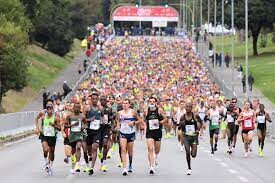
Chepkemoi, Kibet and Kite set off at a swift pace in the women’s race, clocking 16:10 at 5km and 31:57 for 10km. With 42 minutes on the clock, Chepkemoi and Kibet broke away and ran neck and neck until the end. In a dramatic sprint finish, Chepkemoi held off Kibet and crossed the finish line in 1:06:35.
A five-man group formed by Tola, Kenya’s Kipkoech Cheruiyot, Maxwell Mbuleli Mathanga from South Africa, Daniele Meucci and 2018 world half marathon silver medallist Abraham Cheroben from Bahrain went through 5km in 14:23, 10km in 28:30 and 15km in 42:51.
Meucci produced the first attack at 15km, but Tola caught up with the 2014 European marathon champion. Meucci and Tola ran neck and neck until 19km when Tola launched a decisive kick to cross the finish line in 59:54 with Meucci 17 seconds adrift in second. Mbuleli finished third in 1:00:17.
(10/18/2021) ⚡AMPby World Athletics
Roma Ostia Half Marathon
Italy's most popular half marathon, this road race is a popular event for runners of all abilities. The Roma-Ostia Half Marathon is an annual half marathon road running event which takes place in the spring in Rome, Italy. The course begins in the EUR district of the city and follows a direct south-easterly route to the finish point near the...
more...Debutant Teklu and Tuei reign at Barcelona Half Marathon
Ethiopia’s Haftu Teklu and Kenya’s Sandrafelis Chebet Tuei captured commanding titles at the eDreams Mitja Marato Barcelona, a World Athletics Gold Label road race, on Sunday (17).
On a perfect day for running (14C and very slight wind), 26-year-old Teklu triumphed in his first outing over the distance, clocking 59:39, while Tuei improved her career best by more than a minute to win in 1:07:12.
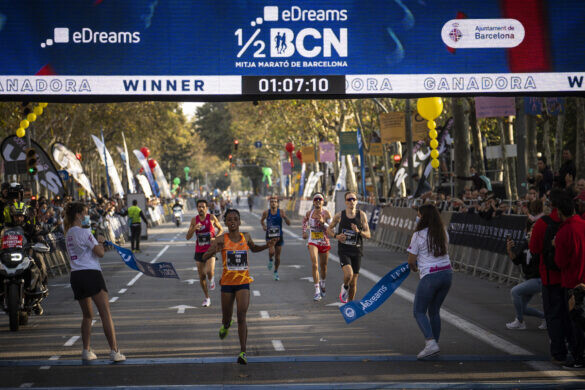
The leading pack in the men’s race went through the opening 5km in 14:05, well on schedule to break the 59:44 course record. Paced by Matthew Chekwunui, the heading group included the Kenyan pair of Daniel Kemoi and Abel Sikowo, Israel’s Maru Teferi, Eritrea’s Aron Kifle, Uganda’s last year’s runner-up Stephen Kissa and the eventual victor Teklu.
The 10km checkpoint was reached in 28:08 with the only withdrawal of Teferi. Once the pacesetter dropped out it was Teklu who took command of the race but only Kissa managed to live with his rhythm despite slowing down a bit over the third 5km segment covered in 14:16 for a 42:24 15km split. By then Kifle was in third, 22 seconds in arrears, and Sikowo another four seconds adrift.

The leading pair went through 20km in 56:43, putting them on course for a sub-60-minute finish. The experienced Kissa seemed to be the favourite to take the win, but Teklu unleashed an impressive change of speed in the final kilometre to open a huge margin on the Ugandan.
Teklu crossed the line in a course record of 59:39 while a fading Kissa had to settle for second place again, 40 seconds behind the winner. Surprisingly the third spot on the podium went for Ethiopia’s Chala Regasa who, coming from behind, overtook Kifle and Sikowo in the closing stages to clock 1:00:38.
The women’s event kicked off at a steady 3:12 pace, the heading group comprising the Ethiopians Asnakech Awoke, Tsege Melese and Alemaz Samuel plus the Kenyan trio of Tuei, Brillian Kipkoech and Mercyline Chelangat. That sextet timed 16:02 for the first 5km section. Tuei and Kipkoech led the field at 10km, reached in 31:56, and they maintained that pace through 15km (48:01), although only four women – Tuei, Kipkoech, Awoke and Alemaz – remained in contention.
Tuei, the 2015 world U18 steeplechase silver medallist, made her move some 17km into the race to easily break away from the rest. At the tape, the 23-year-old clocked a lifetime best of 1:07:12, her second PB of the month following a 30:45 10km effort in Valencia a fortnight ago. Kipkoech finished runner-up 19 seconds in arrears to secure a Kenyan double and Awoke placed third in 1:07:47.
(10/18/2021) ⚡AMPby World Athletics
Barcelona Half Marathon
The half-marathon in Barcelona, also known as the Mitja Marató de Barcelona. It’s the second largest running event in Barcelona next to the Marathon. The route takes the runners from the Arc de Triomf, by the old town to the Plaça Catalunya. From there it goes down the famous Ramblas and along Avenida del Paral·lel. Then it goes through the...
more...If you want to run an ultramarathon, here are six things to consider about going over 26.2.
As athletes, we are constantly searching for the next challenge – what new boundaries will you set for yourself this year? More and more people are turning to ultramarathons as the next frontier. If you too find yourself curious about the world of ultrarunning, here are some things to consider about going over 26.2.
1. Mental Capacity
Any grizzled old ultrarunner can attest to the power of your mind when running longer than most people care to drive. This is likely the most important aspect to consider. It takes a certain amount of toughness, both mental and physical (is there a difference?) to run ultramarathons. Discomfort, doubt and fear are often part of the game. But every time you enter the “pain cave” you come out the other end less frightened by subsequent visits. If your 50 km experience is a positive one and you aspire to try your hand at 50 miles, or even a 100 mile race, then the ratio of risk vs. reward is increased on both sides of the equation. The longer you run the higher your propensity is for experiencing these “tough spots”, but with that also comes an increase in satisfaction and feeling of accomplishment. This is the lure of ultrarunning.

2. Running History
Let’s start with the basic assumption that it’s best to use races as stepping stones to the next, further distance. Therefore your journey to ultrarunning should use each successively longer distance as a stepping stone to the ultramarathon. Taking this measured approach means you’ll take the smallest possible jump in distance from where you are comfortably running now. So if you’ve been doing 5 km races, train for a 10 km race. From 10 km go to a half marathon and so on, until you’ve finished a marathon injury-free. At this point you are ready an ultramarathon distance. There are few exceptions to this rule and most attempts at breaking it result in a broken body.
Let me say it again: If you have successfully finished a marathon injury-free, you can in fact most likely run an ultramarathon. The logical step up in distance from a marathon would be a 50 km race (31.1 miles), at just five miles longer than the marathon. Know that moving up in distance will take a bit more time and fortitude. But the longer your running history the the easier this transition, or addition in miles, will be.

If you thought training for a marathon was a chore, then you might want to reconsider training for an ultra. There are certainly ways to mitigate the time commitment (like having a training plan), but it can’t go unnoticed that a certain “addiction to miles” and the time required to feed that addiction only helps your cause.
As your distance goals increase, there is generally less focus on pacing and more focus on overall volume/miles/time on foot. Training for an off-road ultramarathon brings with it training on trails, which means pace becomes a less effective way of measuring effort. So as your training moves to the trails, your training schedule will change to perceived exertion or heart rate guided, time-based runs.
3. Eating and Drinking
Ultramarathons are long, so you are going to have to figure out a solid nutrition and hydration strategy. Failure to do so often results in failure to finish. Your body has stored energy in the form of muscle and liver glycogen. This is the energy reserve that allows you to run for 1.5-2 hours without taking in any fuel. This is adequate for short distances, but won’t serve you well when your race is a 4-7 hour long 50 km. So buy some gels and start figuring out what your stomach can handle during your long runs.
There isn’t anything different happening to your metabolism rate once you pass the 26.2 mile mark; however you are definitely running low on your body’s stored energy (glycogen). So from the start of the race this means consistently consuming calories. Karl Meltzer, who has won more 100 mile ultramarathons than anyone else, fuels almost exclusively with energy gels in a 100-mile race. For most of us however the thought of eating 65 gels during a race is repulsive. So variety is key. Get most of your calories from what works best and is easily digestible, which is usually gels or powders. Then supplement that with other tasty treats like fruit, energy waffles and bars. For the longer ultras some real food options become very appealing. Two of my favorites are baked yam/apple, and avocado wrapped with turkey. Make sure to test your fueling strategy out during your long training runs, to mitigate the unexpected.
As for hydration I think Dr. Timothy Noakes (The Lore of Running) has it right regardless of the distance: “Drink to thirst, that’s it”. However the longer the race, the more time there is for you to develop hydration issues. So be smart and consistent and don’t allow yourself to get behind. You can usually come back from a bonk, but true dehydration or hyponatremia could end up in a hospital ride.
4. More Gear
The free-spirited 5K or 10K runner who heads out with only a pair of short shorts might find the required equipment for ultrarunning a bit daunting. The gear is in fact improving leaps and bounds year to year (check out UltrAspire). The unfortunate fact though is that at some point while training or racing you’ll have to carry calories and water with you. This will require a hydration backpack or what we ultrarunners call “handhelds”, which are simply bottle holders that attach your bottle to your hand.
At some point in your progression, like a Jedi and his light-saber, you will not be able to leave the house without taking your handheld with you. At this point, “You are almost ready, young Jedi”.
5. Terrain
Most ultramarathons are run on trails as opposed to roads. This change of scenery brings with it a natural antidote to the boring monotony of road running the concrete jungle. It also means hilly undulating terrain, worse footing, mud, and wonderfully technical trails. Fret not if you come from a road background and have an aversion to exposure, there are plenty of ultramarathons on flat tracks and bike paths. However, my bet is that you will at some point fall in love with the rugged remoteness of “real” trail runs. You aren’t entirely alone out there either. All ultramarathons have aid stations where there is usually food, water and first aid. It’s just not available as often as during a road race and depending on the location, might not have as much variety.
6. Finally, the most important thing…
Ultrarunning is in fact a labor of love. Truthfully, the only real prerequisite for an aspiring ultrarunner is a love of running. Being able to cover vast distances on your own strength is simply one of the most empowering feelings there is. The accomplishment will open doors for you mentally, proving the limitless capacity of perseverance and determination. After all, once you’ve run that far – is there anything you can’t do?
(10/18/2021) ⚡AMPby Matt Hart
Eilish McColgan breaks UK 10 mile national record
Scottish runner breaks Paula Radcliffe’s national mark and Sonia O’Sullivan’s course record on the roads of Portsmouth
Eilish McColgan ended her season in style as she sliced almost half a minute off Paula Radcliffe’s UK record for 10 miles and 17 seconds from Sonia Sullivan’s course record at the Great South Run with 50:43.

The 30-year-old also took nearly a minute off her 51:38 PB as she won the event for the third time on Sunday (Oct 17).
O’Sullvan’s course record of 51:00 had stood since 2002 whereas Radcliffe’s national record of 51:11 was set in 2008 shortly before she won the New York City Marathon.

This is not the first of Radcliffe’s records that McColgan has broken this year either. In August she beat Radcliffe’s UK 5000m mark with 14:28.55 in Oslo. This means her marathon debut will be much anticipated, although she will do well to get close to Radcliffe’s fearsome UK and former world record of 2:15:25.
Like Radcliffe, McColgan seems in her element on the roads. This autumn alone she has won the Great Manchester Run in 30:52 and finished runner-up to Hellen Obiri in the Great North Run in 67:48. All this after a long track season, too, which included finishing ninth in the Olympic 10,000m final in Tokyo in August.
In addition, McColgan also continues to improve on the formidable performances of her mother. Liz Nuttall-McColgan (photo with daughter) won the Great South Run twice in the mid-1990s with a best of 52:00.
(10/17/2021) ⚡AMPGreat South Run
The Great South Run is an annual 10 miles (16.09 km) road running race which takes place in Portsmouth, United Kingdom providing an intermediate distance between the ten kilometre and the half marathon runs. Launched in 1990, it is part of the Great Run series created by former British athlete Brendan Foster. It was originally held in Southampton, but the...
more...ELISHA ROTICH WINS PARIS MARATHON AND SMASHES KENENISA BEKELE´S COURSE RECORD
Elisha Rotich´s time of 2:04:18 was enough to beat the Paris Marathon´s seven-year-old course record on his way to victory in the French capital. Rotich also claimed his personal best time in the race, beating his previous mark by exactly a minute. Tigist Memuye took the women´s event for the biggest win of her life.
Elisha Rotich has won the Paris Marathon in 2:04:18, breaking Kenenisa Bekele´s course record from 2014.

Kenyan Rotich produced his best ever performance for a personal best time in his 14th marathon, smashing his previous mark by exactly one. Bekele´s record had stood for 19 years in Paris.
31-year-old Rotich, who finished 10th in the Milan Marathon in May, launched an attack on the front five miles from the end.
Tigist Memuye claimed the biggest win of her career, winning the women´s marathon in 2:26:12.
She placed second in the Geneva marathon in May, running 2:24:23 in Switzerland. And despite running almost two minutes slower in Paris, she grabbed her first marathon win.
30,000 participated in the Paris Marathon, the first since 2019 after Covid-19 forced the cancellation of the 2020 edition.
(10/17/2021) ⚡AMP
Schneider Electric Paris Marathon
The Schneider Electric Marathon de Paris offers a unique opportunity to make the city yours by participating in one of the most prestigious races over the legendary 42.195 km distance. The Schneider Electric Marathon de Paris is now one of the biggest marathons in the world, as much for the size of its field as the performances of its runners....
more...Big's Backyard Ultra World Championship has begun
Big’s Backyard Ultra World Championships, Laz Lake’s infamous last-person-standing ultra, started at 7 a.m. Central this morning in Bell Buckle, Tenn. with 36 runners from 10 countries qualified at backyard races around the world to toe the line today. Watch for Canadians Dave Proctor, Stephanie Simpson, Matt Shepard, Eric Deshaies and Terri Biloski, with the action likely to continue until Monday.
The rules are simple: the course is a 4.1667-mile (6.7 km) trail loop (a.k.a. yard), which switches to a road loop at night. (The rationale for the length of the loop is that using this formula, 100 miles takes exactly 24 hours.) A new yard starts every hour on the hour. Runners must complete each loop under the one-hour cutoff and be ready on the start line for the next yard. A warning whistle is blown at three, two and one minute before the cutoff. If you fail to finish before the hour is up, it’s a DNF. If you fail to start (and make forward progress) at the top of the next hour, that’s a DNF. This continues until only one runner is left.

In the early hours of the race, most runners have time to spare after finishing each yard, and they use this time to refuel, use the bathroom, tweak their gear and rest. As the hours wear on and their pace gets slower, they have less and less time before lining up for the next yard.
As the race goes on and fatigue sets in, the dilemma becomes, where is the sweet spot between expending as little energy as possible while maximizing rest time between yards? In other words, the faster you complete the yard, the more rest time you get before the next yard – but you also fatigue more quickly.
This year’s starting list
This year’s competitors include seven women, two of whom are former Big’s champions Courtney Dauwalter and Maggie Guterl. Courtney holds the record for the most yards run at the Big’s course in Tennessee (68). The world record for the backyard format was set by John Stocker of the U.K. in June 2021, with 81 yards, eclipsing Karel Sabbe’s previous WR of 75 yards, set at last year’s Big’s world championships, on his home course in Belgium.
Here are this year’s contenders, with their country, age and qualifying number of yards. (Unfortunately, due to travel restrictions, most runners from Europe were not able to participate this year.)
Courtney Dauwalter, USA, 36 (68 yards – i.e., 455.6 kilometres over 68 hours)
Harvey Lewis, USA, 45 (67 yards)
Gavin Woody, USA, 44 (64 yards)
Michael Wardian, USA, 47 (63 yards)
Maggie Guterl, USA, 41 (60 yards)
Amy Masner, Ireland, 47 (59 yards)
Steve Slaby, USA, 40 (57 yards)
Chris Roberts, USA, 36 (56 yards)
Jennifer Russo, USA, 55 (54 yards)
Yukinori Yushida, Japan, 52 (54 yards)
Terumichi Morishita, Japan, 41 (53 yards)
Dave Proctor, Canada, 40 (52 yards)
Jon Noll, USA, 36 (50 yards)
Jacob Conrad, USA, 36 (49 yards)
Katie Wright, New Zealand, 34 (49 yards)
Gabe Rainwater, USA, 33 (48 yards)
Sarah Moore, USA, 33 (48 yards)
Chris Murphy, Australia, 37 (46 yards)
Stephanie Simpson, Canada, 35 (43 yards)
Ron Wireman, USA, 40 (43 yards)
Fanny Jean, France, 41 (42 yards)
Matthew Shepard, Canada, 34 (42 yards)
Hisayuki Tateno, Japan, 50 (42 yards)
Shawn Webber, USA, 47 (42 yards)
Mathieu Weiner, USA, 54 (42 yards)
Piotr Chadovich, USA, 43 (41 yards)
Morton Klingenberg, Denmark, 36 (39 yards)
Chris Boyle, USA, 42 (38 yards)
Andres Villegran, Ecuador, 37 (38 yards)
Will Rivera, USA, 51 (37 yards) (DNS)
Eric Deshaies, Canada, 48 (35 yards)
Vincent Barrientos, USA, 40 (34 yards)
Haim Malki, Israel, 44 (34 yards)
Terri Biloski, Canada, 45 (33 yards)
Jason Bigonia, USA, 44 (32 yards)
Mark Begg, USA, 47 (26 yards)
(10/17/2021) ⚡AMPby Running Magazine
Tanui and Tola smash Dutch all-comers’ records in Amsterdam
Angela Tanui and Tamirat Tola produced the fastest ever times on Dutch soil with their victories at the TCS Amsterdam Marathon, clocking 2:17:57 and 2:03:39 at the World Athletics Elite Platinum Label road race on Sunday (17).
Tanui, who was a late addition to the field after her plans to compete in Boston fell through due to visa issues, bided her time for much of the race before breaking away in the closing stages to win by more than two minutes, covering the second half in a swift 1:07:50.

Running as part of a lead group of six, Tanui covered the first 10km in 33:00. Shortly after, Ethiopia’s Shasho Insermu dropped back from the lead pack, leaving Tanui, fellow Kenyan Maureen Chepkemoi and Ethiopia’s Haven Hailu, Gabiyanesh Ayele and Worknesh Alemu out in front.
They covered 15km in 49:48 before reaching the half-way point in 1:10:07, suggesting a sub-2:20 finish was possible with a slightly faster second half.
Alemu was the next to drift off the pack, and she trailed the leaders by 24 seconds at the 25km point, which was covered in 1:23:02. Tanui, Hailu, Ayele and Chepkemoi stuck together through 30km (1:39:37), but Tanui then put in a surge and covered the next five-kilometre section in 15:51, giving her an 11-second lead over her opponents at 35km.
She continued to pull away from her pursuers in the closing stages and went on to cross the finish line in 2:17:57, smashing the previous course record of 2:19:26. She also chopped more than two minutes from her previous best of 2:20:08 set earlier this year, and now moves to 10th on the world all-time list.
Chepkemoi came through to take second place in 2:20:18, overtaking Hailu shortly before the finish. Hailu finished one second adrift in third, while Ayele was further behind in fourth (2:21:22). Ruth van der Meijden was the top Dutch finisher, placing sixth in 2:29:55 to secure the national title.
Tola, like Tanui, displayed great patience and waited until the final few kilometres before making his move in the men’s race.
The opening pace was relatively swift as a large lead pack covered the first 10km in 29:10 and 15km in 43:58. The pace settled down slightly then, with the half-way point reached in 1:02:11 and 25km in 1:13:49, putting them just outside course record schedule (2:04:06).
After going through 30km in 1:28:33, some of the runners in the lead pack – namely Edwin and Abraham Kiptoo and Ethiopia’s marathon debutante Amdewerk Walelegn – started to drift off the pace. Just six men – Tola, Leul Gebresilase, Eritrea’s Hiskel Tewelde and Afewerki Berhane and Kenya’s Jonathan Korir and Bernard Koech – were left in the pack at the 35km point (1:42:59).
Tola then started to pick up the pace and, having covered the previous 10km section in 28:53, had a nine-second gap on his opponents at the 40km point with the leading contenders now strung out.
Tola continued to extend his lead and crossed the line in a 2:03:39, winning by 30 seconds from Koech (2:04:09). Tola’s winning time took almost half a minute off the previous course record (2:04:06) and elevates him from 23rd to 16th on the world all-time list.
Gebresilase took third in 2:04:12, 20 seconds ahead of Korir. In fifth, Tewelde set an Eritrean record of 2:04:35.
(10/17/2021) ⚡AMP
TCS Amsterdam Marathon
Do you want to enjoy Amsterdam in October and all that the city has to offer you? Want to feel a real athlete and start and finish in the historic Olympic stadium? Or run across the widely discussed passage under the beautiful National Museum? Then come to Amsterdam for the annual TCS Amsterdam Marathon in October! The TCS Amsterdam Marathon...
more...Elite Runner Ian Butler Turned Around & Ran the Wrong Way in the 2021 Chicago Marathon
Barely a mile into the 2021 Chicago Marathon, Ian Butler was already in no-man’s-land. With a 2:09:45 personal best, Butler was the second-fastest American in the men’s elite field and hoping to lower that pb in Sunday’s race. Shortly after the starting gun was fired, however, Butler found himself running with the leaders of the race, a group of men who began the race by running 2:04 pace — a minute faster than the American record.
Just after the one-mile mark, Butler backed off the pace, but by that point, the leaders had already created significant separation on the chase pack. He was on his own. And since he was still on pb pace, he continued.
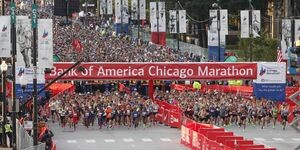
But 26.2 miles is a long way to run by yourself, and as he approached three miles, Butler had a problem. The lead pack was running too fast for him, but the chase pack was on 2:10 pace — slower than the pb pace he desired. For most runners in that situation, there are two options: keep trying to run your own pace solo, or slow down, allow the chase pack to catch you, and run with them. Butler chose a third.
And that is how, at the intersection of North LaSalle Street and West Randolph Street, just past Chicago City Hall, Butler did something that many running fans including everyone at LetsRun.com had never seen before: he turned around and ran in the wrong direction. Within a few seconds, he had “caught” the chase pack and promptly turned around again so he was running in the right direction. He would run with them for the next 20 kilometers before the pack began to splinter around 25k.
“I’ve never been known to be the smartest runner and I needed to find people and a smart pace,” Butler wrote on Instagram after the race.
LetsRun reached out to Butler and he expanded on his decision-making process.
“I ran back to join the second group,” Butler wrote. “I don’t know why I didn’t stop or slow down. Chicago was kind of weird and I felt like I was forcing things from the beginning and at half way [sic] when I turned around it was so I could settle in to a more comfortable pace. I went for it at Chicago instead of settling for a pace that was slower than my PR and I wouldn’t say I regret it, but it’s rough that it didn’t work out, but that’s the marathon some days.”
Butler wound up fading to 17th place in 2:20:01, but said that he was proud to have finished the race on a tough day.
As wild as it was to see Butler running in the wrong direction in Chicago — seriously, it was insane — it would be wrong to reduce him to “That Guy Who Ran the Wrong Way in Chicago.” His story is an inspiring one. As a child, he suffered two traumatic brain injuries that made learning difficult, but found running as a high schooler and went on to run in college at Division II power Western State.
Though he graduated with fairly modest personal bests of 14:46 for 5k and 29:49 for 10k, Butler continued to grind on the roads post-college and was rewarded with a huge 2:09:45 personal best at the Marathon Project last year. Now he has become a LetsRun cult hero, sometimes rising before 5 a.m. to log workouts before working as a teacher (he also has a sponsorship with adidas).
(10/17/2021) ⚡AMPby Let’s Run
World Record holder Joshua Cheptegei’s dream is to turn his country into an athletics powerhouse.
Considering that he added a 5000m Olympic gold and 10000m silver to the 5,000m and 10,000m world records, that dream should not be far from realization.
Cheptegei made the remarks after the National Council of Sports (NCS) and the sports ministry rewarded Olympians and paralympians that participated in the Tokyo games.

“My dream is to make this country (Ugandan) a running nation. I want the young people to be motivated so that they can take on sport and showcase their talents to the world,” Cheptegei revealed.He also called for a change in perception with sport often regarded as a leisure activity.
“Sports is not just leisure. It is business and young people can learn that you can earn from sport. I want to set a path that other young children can follow,” added Cheptegei.

For his exploits Cheptegei took home a combined cash prize of Shs80m ($22,159US) for the gold and silver medals he earned in Tokyo.
“We prioritized rewarding athletes as one of the ways of promoting sports,” NCS General Secretary Dr Bernard Patrick Ogwel stated in his opening remarks.
The country’s other gold medalist from Tokyo, Peruth Chemutai, was rewarded with Shs50m while Jacob Kiplimo who won bronze in the 10,000m received Shs20m.
“My advice to the athletes is that this is your time but there is a saying that ‘athletes come and go’ so endeavour to invest and save wisely,” Minister of state for sport Hamson Obua advised the athletes who hailed the move
“My life does not remain the same. It is also motivation that I can go on and break the world record. And also motivates young athletes in the north to follow in my footsteps,” Emong noted.
Each of these received another Shs1m in addition to their allowances which were paid in July.In 2018, the agency paid out Shs100m for medals won at the Commonwealth Games in Gold Coast Australia but there’s no reward and recognition policy in place yet.
(10/16/2021) ⚡AMPby Elvis Senono
Here’s how to increase your stamina and endurance if you are a beginner runner
When you start a brand new running routine, you very quickly develop an appreciation for how difficult running truly is. It can be frustrating to watch as other runners seem to float by you effortlessly as you struggle to get through one slow kilometre, but we promise it gets better. Follow these tips to improve your stamina and endurance so you can enjoy running to the fullest.
Be consistent
This seems obvious, but it’s the most important piece of advice on this list. If you run three times one week and none the next, you’re never going to see improvement. Consistency is key if you want to improve at anything, and running is no different.

Increase gradually
Doing too much too soon is a great way to sabotage your consistency. You’re better off starting with something manageable, like going for a 20-minute run three times a week, than trying to tackle a 10K right off the bat, or embarking on a five-days-per-week running schedule, which is likely not sustainable when you’re new to running. This way you can increase your mileage gradually, which will allow your body to adapt to your training and build up your endurance over time.

Do a long run
No, this doesn’t mean you have to go out for a two-hour run. You should, however, pick one day each week when you run a bit longer than you normally do. For example, if you’re running 30 minutes three times a week, pick one of those days and run for 40 minutes instead. You can gradually increase the length of this run as your endurance improves, which will challenge your stamina and make your other two weekly runs feel easier.
Add some speedwork
Once you’ve been running consistently for several weeks or months, you may start to feel like you’re hitting a plateau. Now is a great time to introduce some speedwork. Running at a faster pace will increase your VO2 max, which will make running at a slower pace feel easier, allowing you to run longer at that slower speed. Try making one of your weekly runs a fartlek, where you increase your speed for short sections of the run to get your heart rate up and your legs moving.
Fuel properly
If you often feel like you’re lacking energy while you’re running, it could be because your body doesn’t have the fuel it needs to run well. Make sure you’re eating a healthy, well-balanced diet with enough carbohydrates so you have enough energy available for your working muscles.
Rest and recover
Recovery is when your body adapts to your training, and without it, you won’t see any improvement. Make sure you’re sleeping seven to eight hours each night and taking care of your body, so that each time you lace up your shoes you feel fresh and ready to go.
(10/16/2021) ⚡AMPby Brittany Hambleton
Matt Salminen completed a once-in-a-lifetime double to celebrate the return of major marathons.
In 2021—for the first time in World Marathon Major history—two of the biggest races in the world took place on back-to-back days. 26,112 runners crossed the finish line at the Chicago Marathon on Sunday, October 10, while even more tackled Heartbreak Hill at the Boston Marathon on Monday, October 11.
While most runners chose one or the other, California-native Matt Salminen had a different thought: why not run both?

Salminen, 32, has run nearly two dozen marathons, but he has special connections to Boston and Chicago. He lived in Boston for six years, completing five Boston Marathons for the Heartbreakers, the running club associated with the Heartbreak Hill Running Company. Salminen has run the last three iterations of the Chicago Marathon as well, also representing the Heartbreak Hill Running Company—which had recently opened up stores in the Windy City.
Friday, October 8: Travel to Chicago
Afternoon—Irvine, California
As many people know, the carb-load starts about two to three days before a marathon. So on my way to the airport and on the plane to Chicago, I made sure keep hydrated and eat snacks.
My training block coming into these two marathons was a little bit different. Typically, I train for five to six months per training cycle. In this case, I was doing around the same time period of training, but I incorporated a lot of back-to-back long runs. This is a challenge that not many people take. It’s something that you have to train your body for.
My fastest time in the marathon is 2:38, so I was thinking it would be a good challenge to try to do both marathons under 2:45.
Evening—Chicago, Illinois
After landing, I went to a local restaurant, picked up pasta with sauce and bread, ate as much as I could, drank lots of water, and then went to sleep really, really early.
Saturday, October 9—The Day Before
Morning
I did a quick shakeout run in the morning around 9 a.m. My legs felt good. I didn’t have any major injuries during training, so I felt pretty fresh.
I went to the Chicago Marathon expo around 11 a.m. This year was a bit different from past years because of COVID-19. They had the same bib pickup at McCormick Place, but it took over an hour to get through the vaccine check. It really held up the lines, so I spent more time than usual at the expo, but definitely worth the experience.
Evening
In the evening after eating some more, I mentally planned my race, set up my race outfit, used my massage gun, and wished my friends good luck. I went to bed early.
Sunday, October 10—The Chicago Marathon
Morning
I felt a little nervous when I woke up for the marathon, considering all the months of training that I put in. I felt like, how am I going to do in these two marathons, considering they’re on back-to-back days? My best workout was two 20-mile long runs back-to-back, which gave me a lot of confidence that I could handle the distance.
I had three Maurten gels before the race, and I was ready to go. I had everything I needed.
The race started at 7:30 a.m., and I ran the first half pretty comfortably. The second half felt even more comfortable; I felt like I was just in rhythm. My training did really help; I felt like my endurance was there, and I took my gels at the right time. I ended up finishing 2:44:16, which put me in 200th place. I felt pretty good about it.
A lot of people talked about the weather in Chicago. I was sweating after the first couple miles, but so was everyone else. A lot of my good friends had a hard time. I was relatively fortunate that I did hold back because of Boston the next day. Conditions were definitely not ideal, but I was happy to finish and not overdo it.
Late morning
I think the most important aspect of the race is not only doing it, but finishing, and then making sure I was recovering as soon as possible. I didn’t know how my body was going to react. After running the first marathon, how can I run the second?
So after the first race, I immediately went back to the hotel, took a shower, cleaned up a little bit, used my massage gun, and took in a lot of fluids and electrolytes before leaving for the airport.
People asked me what I would eat after Chicago but before Boston—and I wasn’t planning on stuffing my face. For me, it was more important to replenish by drinking more liquids, because I didn’t want to eat too much the day before running Boston. I had a little pasta, but I took in much more electrolyte drinks. My stomach was a little unsettled after finishing Chicago, so I think it helped.
Evening—Boston, Massachusetts
I booked a flight as early as I could to get from Chicago to Boston. My flight left around 1 p.m., and when I landed, I went straight to pick up my bib around 5 p.m.
After I checked into my hotel, I made sure that I had enough time to get in more fluids and nutrition, put my legs up, set up everything I need to go in the morning, and get my mind ready. My quads felt sore, but I knew I felt like this during training. The weather was nice and cool, and I was pretty excited. I felt like I still had enough in the tank to give it a go.
I lived in Boston for six years, so being back, I knew I couldn’t back out of it. I had to do it.
Monday, October 11—The Boston Marathon
Morning
I caught the bus to the start line in Hopkinton at 7:15 a.m., and the race started at 9 a.m. I ran the first 10k thinking, let's see how the legs feel. I thought that under 2:50 would be an attainable goal. If I can hit the same time that I had in Chicago, that would be my all-time goal.
At the halfway mark at Wellesley tunnel, I was on pace for 2:50 to 2:52. My legs felt okay, but I was wondering if I could last another 13 miles because I’ve never run this much distance before. I remained confident, believing in the miles I did in training.
Around mile 17, when you start the Newton hills, I knew that my legs were going to take a lot of pounding. But I also knew that I've been training so hard for this, and I ran Boston in the past, and that you need to attack these hills to get them done. So that’s when I started to cut my pace down.
I conquered Heartbreak Hill, and pushed the pace after that; I got so excited that I felt so good and my legs were still moving, and I ran my last mile in 5:35. I ended up finishing the marathon in 2:49:05—under 2:50, which I planned. Not the same time as in Chicago, but definitely a good time after already running one marathon.
I was psyched to have a strong finish on Boylston Street. I saw a lot of friends and fellow runners on the road. I thought to myself, wow, I’ve accomplished so much. This was a challenge that meant a lot to me. It might not ever happen again in the future. Crossing that Boston finish line brought back a lot of memories of crossing Boston, but also realizing that I’ve done something that I didn't believe that I could do.
Evening
I celebrated by having a nice cold beer with some old friends from Boston, and watching the Red Sox win their playoff game.
I felt great, through all the training, logistics, flights, and races—I’m happy I put so much effort and time into it. Anyone that runs marathon majors has their own story, and I feel like this story is special to who I am as a runner.
Tuesday, October 12 — The Day After
Instead of going home to Irvine, I’m flying to France for vacation. My legs feel rough, but I don’t have any races coming up soon. I expected to break down a little bit, but I’m happy to have the battle scars.
Thinking back on my weekend, it felt great to be able to run these races and go back to normalcy. It's been over two years since Chicago and Boston were run. For everyone to be on the same roads running these races again and celebrating together, I felt a sense of unity. Marathons are back!
(10/16/2021) ⚡AMP
by Runner’s World
The Performance-Enhancing Power Of Easy Doubles
The hardest part of running training theory is that every athlete is their own N=1 study. We have individual inputs-training volume, intensity, etc. We have individual outputs-time to exhaustionp, VO2 max, race results. But the line connecting input to output will always be a best guess, because we have way too many confounding variables (age, stress, training background, muscle fiber typology) and no way to look under the hood to see exactly what's happening (humans prefer not to be dissected).
Even for a single athlete using different training interventions over time, there is not enough data to reliably infer what causes what. That training plan could have caused a world championship. Or it could have been the base built in that lower-intensity approach a year ago, mixed with better fueling, all combined with an optimal day in the menstrual cycle.

So how do we know what works?
Well, we do have a baseline understanding of physiology. While humans vary substantially, we're all a similar assortment of semi-organized chemical interactions that love the show Ted Lasso. But that still raises the measurement problem-how can we actually know what training is best with this deluge of uncontrollable variables? It's enough to make any coach pull their hair out, which may itself be an advantageous adaptation. Receding hairlines are built for aerodynamic speed, I tell myself.
While we may never be able to know the optimal approach for each individual, we can hypothesize what works across the population. N=1 sucks. But add up thousands of Ns, and we're getting somewhere. Bad for scrabble, good for training theory. Nn-nn-nn-nnn, hey hey heyyy, good science.
And when you add up all those Ns in running, looking at training logs of top performers, you'll notice something curious. Doubles. Lots and lots of doubles.
Doubles in Practice
A 2019 study in the Journal of Strength and Conditioning Research looked at 85 elite athletes over their first seven years of serious training to draw conclusions about the type of runs associated with top performance. Volume of easy runs had the highest correlation with performance, from 0.72 at 3 years to 0.68 at seven years. These findings were backed up by a 2020 study in the European Journal of Sports Science. Neither of those studies discuss doubles specifically, but I'd bet the dog and the car (as implied by the first thing, a Subaru) on some of that volume being accumulated with multiple runs in a day.
For example, a 2019 study on the Ingebrigtsen brothers indicated that they accumulated 150 to 160 kilometers a week onget this13-14 separate sessions. They sometimes do multiple harder workouts in a single day. And brother Jakob won the 1500 meter gold medal in Tokyo.
The same goes for athletes coached by Renato Canova, famous for his "block" training days of two hard workouts, plus countless easy doubles. Before medaling in the Olympic Marathon, Molly Seidel did 6 doubles most weeks. I bet there are more running Olympians who do triples (used in some East African training camps) than train solely with singles.
Last week's article on cross-country ski training cited many studies (an excessive number of studies) about the high proportion of extremely easy training at the top end of that sport. Some of the greatest champions do 90%+ of their training at low heart rates! As outlined by a 2010 study in the Scandinavian Journal of Medicine & Science in Sports, skiers (and runners) accumulate aerobic volume to increase in mitochondrial content and capillaries around muscle fibers, improve metabolic function at both high and low intensities, and encourage a more economical use of oxygen to power performance at all intensities as well. All of that corresponds to faster race performances, even in events that are just a few minutes long.
But if it was just about volume, why aren't we seeing top runners rely more on massive singles? That's what bikers do for the most part: several tiny espressos, one big ride. Meanwhile, swimmers do tons of doubles, as do skiers. That's interesting! So what connects running and swimming and skiing, but not biking? My guess is that it's related to the biomechanical demand of the sport varying significantly at slow paces, plus injury risk. Biking is the same if you do it with low power or high enough power to mine Bitcoin in an environmentally responsible way (quads will save the rainforests?). For running, meanwhile, overload those biomechanical patterns and athletes may get inefficient, even if they are able to avoid injury.
So we're trying to add up to a big aerobic number (adjusted for individual background), while balancing overall stress for long-term adaptation. But overemphasizing long singles may have diminishing returns due to the demands of running.
Doubles help solve the math equation.
But is it just about the extra volume? I doubt it.
Doubles may provide a hormonal stimulus that enhances adaptation, they may increase adaptation markers and protein expression associated with better performance, they may improve glycogen replenishment, they may even have some fascinating relationship to epigenetic signaling. A 2012 study on mice found that 3 x 10 minute runs in a single day led to the same adaptations as a 30 minute run, but possibly with slightly larger increases in expression of one protein (TSP-1). What would that type of study look like in humans? Unfortunately, finding out would require dissection. And that's the type of lopsided trade that would only appeal to the New York Mets.
Whatever the exact reasoning, thousands of world-class athletes have come to the conclusion that doubles are key on the track and roads. However, they're sometimes less common in trails and ultras. I have two theories for the cause of that offset.
First, trail running relies heavily on resilience to fatigue from variable musculoskeletal loading patterns. The track is an aerobic system contest, the trails involve the same aerobic pathways with a wrinkle-it doesn't matter how strong your aerobic system is if your legs are Jello. Musculoskeletal damage (and thus, potential adaptation after recovery) accrues over longer runs, so perhaps the long singles create resilient monsters (assuming an athlete doesn't break first).
Two, the margins in trail running are not as narrow as on the roads and track. Our sport is messy, full of rocks and roots and airplane arms, so the champions don't need to find every single possible advantage. A 0.1% improvement in aerobic power might be swallowed up by a 10% improvement from not eating sh*t on a descent. (That also gives me hope that doping is less common in trail running than in a sport like cycling.
How To Add Doubles
While doubles work for pro athletes, I have seen in coaching that they can work for almost anyone, subject to a few disclaimers. First, the body knows stress, not miles. A double can be counterproductive if it adds even an ounce too much to the stress scales. Only double if you have the time, energy, and life force to spare.
Second, increasing volume increases injury risk. It's hard to run a PR with an achilles that sounds like a creaky doorway.
Third, adaptation is a high-stakes game. Overloading stress in moderation followed by recovery can lead to breakthroughs. But overloading a bit too much can lead to stagnation and regression. Some world-class athletes are likely chosen partially because they are genetic anomalies with adaptation under high chronic stress loads. So make sure you're always listening to your body.
Given those risks, my co-coach Megan and I introduce doubles with five guidelines. This will be the next topic for "Sexy Science Corner" on our podcast, so listen when that comes out for more info.
One: Keep it very easy-up to 2x your 5k pace
If the goal is the aerobic stimulus while balancing stress, almost no pace is too slow. I personally do my doubles without a GPS watch, partially because it may auto-pause due to how slow I go. If your normal easy pace is 8 minutes per mile, you can make it 9 or 10 minutes per mile, especially to start. Molly Seidel often does them at 8+ minute pace, with a marathon pace in the mid-5s. I have seen some pro runners in Boulder doing them at what looks like 10 minute pace. Glorious prancy ponies! Just focus on good form-light on your feet with quick strides.
Two: Keep it short-20 to 30 minutes is plenty
There is some evidence that the productive hormonal stimulus of running rises most rapidly in the first half-hour, before leveling off (and sometimes reversing, though it's debated and individual-dependent). Many athletes describe feeling refreshed after a quick afternoon shake-out. For trail runners, we really love doing some of these sessions on the "treadhill" to reduce impact and get climbing-specific biomechanical loading.
Three: At least a few hours after your first activity
Glycogen replenishment is a key element in doubles, so some fun food and a few hours is plenty. Canova blocks sometimes involve tinkering with glycogen levels for elite male athletes, but we have seen that backfire.
Four: Add them on workout days first, aerobic days next
Easy doubles on workout days may maximize adaptation benefits, plus there is a greater endurance stimulus. Once an athlete is adapted to the approach, we'll occasionally have them run more moderately on some workout-day doubles or treadhills (sometimes even with structured workouts like Canova blocks, but that's a training element you should only add at the direction of a coach due to the high risk of injury and overtraining). Don't double on long run days, which may overwhelm glycogen replenishment and increase breakdown rates. Any double could be replaced by easy cross training as well, which should accumulate aerobic adaptations at similar rates, with lower injury risk.
Five: All doubles are optional
There is no such thing as a mandatory double for our athletes. The main training session is what matters most, and tons of our team members have won some of the biggest races in the world without any doubles at all. So listen to your body. Are you dreading it? Skip. Do you have any niggles, even the smallest whisper from a gnat's ass? Chill. Affect sleep, family, work? Bag it. Does it slow down your recovery for the next day? It's OK to give it a couple weeks for adaptation, but if that persists, nix doubles until you wake up the next day feeling as strong or stronger than you would otherwise.
Many athletes we coach will see this general weekly structure on their peak build weeks, when life stress is low, and health is perfect. Peak ultra builds usually involve fewer (if any) doubles, in order to maximize the musculoskeletal adaptation stimulus, as described above.
Monday: rest and recovery
Tuesday: easy run and hill strides (6-12 miles)
Wednesday: workout (8-13 miles) and optional double/treadhill (2-4 miles)
Thursday: easy run (6-12 miles) and optional double/treadhill (2-4 miles)
Friday: easy run and optional hill strides (3-8 miles) or x-train/rest
Saturday: Long run (10-25 miles)
Sunday: easy run and hill strides (6-15 miles) and optional double/treadhill (2-4 miles)
The big thing to remember: doubles are 100% not necessary. But then again, running isn't really necessary either, in the big scheme of the universe. Doubles, like run training in the first place, is all about exploring the limits of your potential by doing something that seems moderately unreasonable.
(10/16/2021) ⚡AMPby Trail Runner Magazine
Marathon des Sables Wrapup
After a 2.5-year break due to the COVID-19 pandemic, it was with great anticipation that the 2021 Marathon des Sables took place this week. The famous desert race, which runs in the Sahara Desert of Morocco, travels 155 miles (250 kilometers) over seven days, traversing sand dunes and stone-filled plains in an arid climate where mid-day temperatures easily reach 120 degrees Fahrenheit (48 degrees Celsius).
Each day, a mobile bivouac is erected in the desert, which serves as the day’s finish line, campground for the night, and the following day’s starting line. There are six stages total, and five of them are competitive stages. The final stage is an untimed charity stage. Participants must carry their own equipment including food, camping materials, and survival gear along with water rations supplied by the race organization.

Typically, the race takes place in April, which is spring in the Sahara Desert. This October edition was said to be hotter and drier than usual for this race and this time of the year. In addition to the heat, a stomach virus ravaged many of the participants. By the end of the week, dropouts amounted to over 40% of all starters, an unusually high drate for this particular race.
Sadly, the race claimed the life of one runner due to cardiac arrest. The French man, in his fifties, was an experienced ultrarunner who had met the medical requirements necessary to start the race. iRunFar covered this story earlier in the week.
For the first three days of the 2021 edition, it looked like parity might define the race. Moroccan brothers Rachid El Morabity and the younger Mohamed El Morabity ran close together, leading the rest of the men’s field by just minutes. On the women’s side, Morocco’s Aziza Raji held a bigger, but not insurmountable, half-hour lead over Aicha Omrani (France) and Hassna Hamdouch (Morocco) in second and third.
The stage was set for shakeups in the grueling 50-mile Stage 4. However, Raji and the El Morabity brothers were about to render the outcome academic. At the end of Stage 4, just 15 minutes separated Rachid and Mohamed El Morabity from each other in first and second overall — but the rest of the field lagged behind by over an hour. Meanwhile, Raji had built her lead over the women’s field from less than an hour to a mind-boggling four-plus hours.
In the end, Rachid El Morabity took the win, finishing with a time of 21:17:32. Mohamed took a narrow second in 21:32:12, less than 15 minutes behind his older brother. This marks Rachid El Morabity’s eighth win of this iconic sand race, and Mohamed El Morabity’s fourth 2nd place behind his brother.

Merile Robert (France) was the lone non-Moroccan on the men’s podium, a position with which he’s familiar. This marks his fifth Marathon des Sables finish, with his top previous finish also third behind the El Morabity brothers in 2018.
Aziz Yachou (Morocco) took fourth place, less than two minutes out of podium position, in what was an incredible breakout performance. According to his social media, Yachou received an hour’s penalty during the race due to losing an item of his required kit, which makes this podium near miss even more fascinating. (Required kit and the penalties for missing or losing items are clearly communicated by the race organization before the race.)
Mathieu Blanchard (France, lives in Canada) rounded out the top five, though he was a distant two hours and 20 minutes behind fourth place. He said on social media he suffered the stomach virus during Stage 4. Blanchard has had quite the 2021, following up his third place at the 2021 UTMB with this performance.
Notably, 10-time Marathon des Sables winner and Moroccan sand running legend Lahcen Ahansal finished ninth in the age 50-59 category with a time of 38:16:32.
Aziza Raji demolished the women’s field with a winning time of 30:30:24. It was Raji’s first win. She was second at the last edition and had a few top-five finishes before that. She’s only the second Moroccan woman in the history of the race to win it, after two-time women’s champion Touda Didi.
Tomomi Bitoh (Japan) took second in 34:39:17, moving up in the cumulative standings during the 50-mile Stage 4 and marathon-distance Stage 5 through a well-paced week of racing.
Aicha Omrani finished third in 35:47:48; remarkably, she finished the 2011 Marathon des Sables in nearly the double the time it took her finish this edition.
Hassna Hamdouch and Elise Caillet (France) rounded out the top five.
(10/16/2021) ⚡AMPMarathon Des Sables
The Marathon des Sables is ranked by the Discovery Channel as the toughest footrace on earth. Seven days 250k Known simply as the MdS, the race is a gruelling multi-stage adventure through a formidable landscape in one of the world’s most inhospitable climates - the Sahara desert. The rules require you to be self-sufficient, to carry with you on your...
more...Very Close battles expected at 2021 Paris Marathon
Eighteen months since the last edition of the Schneider Electric Paris Marathon, the World Athletics Elite Label race returns to the French capital on Sunday (17).
The 2020 race was initially postponed before being cancelled, then the 2021 edition was moved to October instead of its usual April slot on the calendar. Having received the green light to go ahead, this year’s race will have a mass field of about 35,000 runners, including a high-quality elite line-up.

The men’s field features five runners with sub-2:06 PBs. Kenya’s Nicholas Kirwa is the fastest in the men’s field, courtesy of his 2:05:01 PB set in Milan in May. Compatriot Joel Kemboi Kimurer, who is also racing in Paris this weekend, finished 18 seconds adrift of Kirwa in Milan, recording a 2:05:19 personal best.
Elisha Rotich’s career best is one second faster than Kemboi Kimurer’s. The 31 year-old Kenyan, who clocked that time when finishing third in Amsterdam two years ago, also competed in Milan this year, finishing 10th in 2:06:44.

Stephen Chebogut also has strong credentials. The Kenyan won the 2015 Eindhoven Marathon in a PB of 2:05:52 and then finished second in Paris in 2017 in 2:06:57. The 36-year-old’s only race this year was a 2:22:08 run in the altitude of Eldoret, but his most recent race at sea level was the 2019 Shanghai Marathon, where he ran 2:10:35.
Abdi Fufa carries strong recent form into this weekend’s race. The Ethiopian set a PB of 2:05:57 when finishing second in a quality field in Ampugnano in April.
Ashenafi Moges and Moris Munene Gachaga are also ones to watch. Moges set his PB of 2:06:12 two years ago, while the latter recorded his best of 2:06:24 in 2020.
Hassan Chahdi’s record of 2:09:11 makes him the fastest Frenchman in the field. Following his 45th place finish in the marathon at the Olympic Games, he clocked 31:12 for 10km three weeks ago, which makes his current shape difficult to gauge. That’s not the case for Florian Carvahlo, however, who ran 1:01:05 at the Paris Half Marathon last month. He’s now hopeful of improving on his 2:10:22 PB set in Valencia two years ago.
Jeptoo returns to Paris
The women’s race also looks set to be a tough contest.
Ten years after her victory on the streets of the French capital, Priscah Jeptoo returns to the Paris Marathon. The Kenyan went on to take the silver medal at the World Championships later in 2011 and then earned a medal of the same colour at the 2012 Olympic Games. She also won the London and New York marathons in 2013, but hasn’t made it on to a marathon podium since then.
Her 2:20:14 PB, set back in 2012, makes 37-year-old Jeptoo the fastest woman in the field, but her 2:24:16 clocking from the 2019 Valencia Marathon probably gives a more accurate indication of her current form.
While Jeptoo is the biggest name in the women’s field, Ethiopian duo Waganesh Mekasha and Sifan Melaku could start as the slight favourites, based on recent form.
Mekasha, a former track specialist, has a marathon best of 2:22:45 set in Dubai in 2019. She went on to achieve second-place finishes in Dongying and Shanghai later that year, but hasn’t raced since. Melaku, meanwhile, last raced in February 2020 when she finished third in Seville in a PB of 2:23:49.
Tigist Memuye also shouldn’t be discounted. The 31-year-old Ethiopian clocked a PB of 2:24:23 in Geneva just five months ago; a repeat, or even an improvement, of that performance should put her in contention for a podium finish.
(10/15/2021) ⚡AMPby World Athletics
Schneider Electric Paris Marathon
The Schneider Electric Marathon de Paris offers a unique opportunity to make the city yours by participating in one of the most prestigious races over the legendary 42.195 km distance. The Schneider Electric Marathon de Paris is now one of the biggest marathons in the world, as much for the size of its field as the performances of its runners....
more...Kenyan police arrest suspect in Agnes Tirop’s murder Ibrahim Rotich had fled Iten by car and was apprehended hundreds of kilometers away
The Directorate of Criminal Investigations-Kenya tweeted Thursday that it had arrested Ibrahim Rotich, who had fled after allegedly killing Agnes Tirop, one of the nation’s top runners, at her home in Iten. Tirop was discovered dead on Wednesday, with multiple stab wounds to her abdomen. The 25-year-old was a two-time world 10,000m bronze medalist and the 2015 World Cross-Country champion.
We reported earlier that police were looking for Tirop’s husband, who was identified as Emmanuel Ibrahim Kipleting. The suspect in custody is believed to be the same individual, although he is described as being “in a relationship” with Tirop. He was arrested in Changamwe, Mombasa county, which is at least 750 km from Iten.
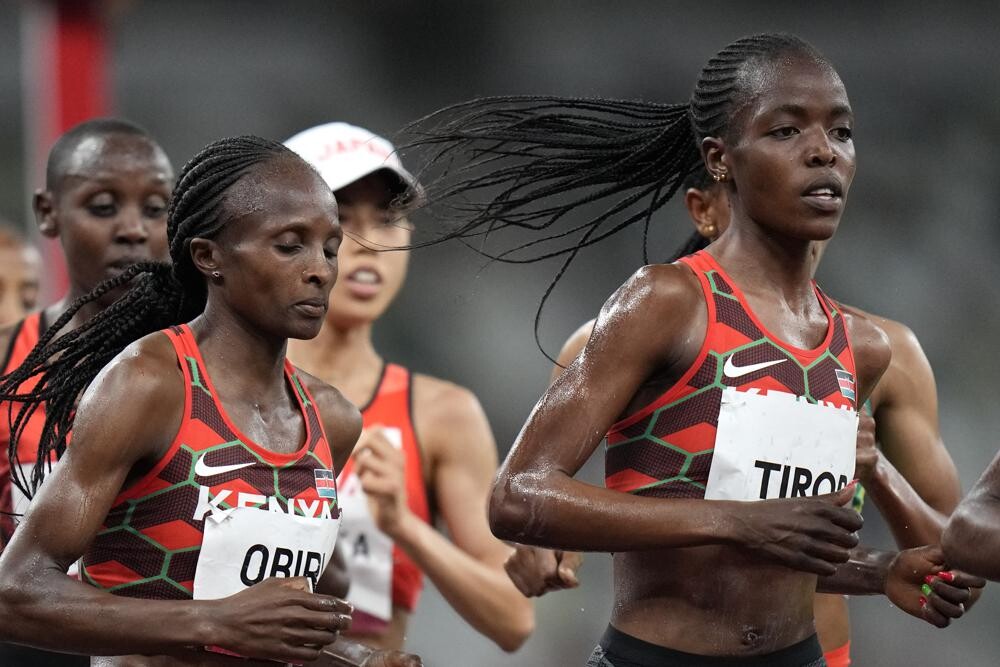
According to the tweet by DCI Kenya, earlier on the day he was apprehended Rotich had crashed his car into a truck in Athi River, southeast of Nairobi, while trying to flee. It’s expected he will be charged with Tirop’s murder.
Tirop was the second-youngest person ever to win the World Cross Country Championships, after South Africa’s Zola Budd. She won the bronze medal in the 10,000m at the World Championships in 2017 and 2019, and she represented Kenya at the Tokyo Olympics this summer, where she placed fourth in the 5,000m. Only a month ago, Tirop also smashed the women’s-only 10 km record in Germany, running 30:01 to break the previous record 28 seconds.

by Anne Francis
Tola, Walelegn, Tanui and Sado set for exciting clashes in Amsterdam
The TCS Amsterdam Marathon men’s course record could be challenged on Sunday (17) when the likes of Tamirat Tola, Leul Gebresilase, Ayele Abshero and Amdework Walelegn line up for the World Athletics Elite Platinum Label road race.
Eight women with sub-2:25 PBs, meanwhile, are also set to clash in what looks set to be a highly competitive race in the Dutch capital.
Tola’s PB, set in Dubai in 2018, is equal to the Amsterdam course record and Dutch all-comers’ record (2:04:06). The Ethiopian earned Olympic bronze over 10,000m in 2016 and world silver in the marathon in 2017, having won the Dubai Marathon earlier that year in 2:04:11.

“I was preparing for the Tokyo Marathon (before it got cancelled), but I’m happy to be here,” said Tola. “I love the country. It’s my first time here, and the weather forecast is perfect for a good performance, so I’m hoping to run a personal best on Sunday.”
The past nine editions of the Amsterdam Marathon have been won by Kenyan men, but that streak could end on Sunday as the five fastest entrants are from Ethiopia.
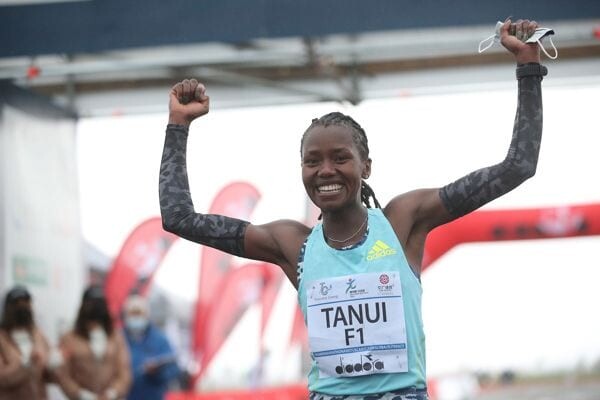
Tola’s compatriot Gebresilase has the fastest PB of the field. The 29-year-old Ethiopian clocked 2:04:02 on his debut at the distance in Dubai three years ago to finish second, four seconds ahead of Tola. He followed it later in the year with a 2:04:31 victory in Valencia, and he equalled that time earlier this year in Milan.
Abebe Negewo Degefa, Chalu Deso Gelmisa and Ayele Abshero all have sub-2:05 PBs. Degefa, now 37, set his PB of 2:04:51 in Valencia just two years ago. Gelmisa produced a similar clocking of 2:04:53 in Valencia last year, but more recently he raced in Chicago, finishing 29th, and so his legs may not have recovered in just one week. Abshero has a faster PB of 2:04:23, but it was set back in 2012.
But perhaps the strongest Ethiopian entrant is Amdework Walelegn, who’ll be making his marathon debut. The 22-year-old took bronze at the 2020 World Half Marathon Championships, having finished second in the U20 race at the World Cross Country Championships just three years prior. He set a half marathon PB of 58:53 when winning in Delhi last year, and he came close to that last month with his 59:10 victory at the Copenhagen Half Marathon.
Kenya is still well represented for this year’s race in the form of Laban and Jonathan Korir (no relation).
Laban Korir has competed at the Amsterdam Marathon four times. The 35-year-old, who is a training partner of Eliud Kipchoge, made his marathon debut in the Dutch city back in 2011, clocking 2:06:05 to place second. He improved on that when he returned to Amsterdam in 2016, finishing fourth in 2:05:54. Winner of the 2014 Toronto Marathon, Korir represented Kenya at the 2019 World Championships, where he finished 11th.
Jonathan Korir, another friend and training partner of Kipchoge’s, will also be returning to Amsterdam. He set a PB of 2:06:51 during his last outing at this race, which he went on to improve in Berlin in 2019 (2:06:45) and then in Enschede earlier this year (2:06:40).
Competitive clash in women’s race
While Kenyan men have dominated recent editions of the Amsterdam Marathon, the women’s race has typically gone in Ethiopia’s favour over the past decade.
Ethiopian women make up seven of the nine fastest entrants for Sunday’s race, but the outcome could be largely dictated by whether Kenya’s Angela Tanui makes it to the startline. The 29-year-old, who clocked a PB of 2:20:08 in Ampugnano back in April and is undefeated in three races this year, had been due to compete at the Boston Marathon earlier this week, but was unable to make it to the US due to visa issues. If she succeeds in making it to Amsterdam, she’ll start as the favourite.
But if Tanui is unable to make the start line, an Ethiopian victory would appear highly likely as the likes of Besu Sado, Shasho Insermu, Genet Yalew, Gebeyanesh Ayele and Haven Hailu are raring to go.
Sado, a former 1500m specialist who reached the Olympic final in that event in 2016, set her PB of 2:21:03 when finishing fourth in Amsterdam in 2019. She has a best this year of 2:27:06, set in Milan in May, but more recently set a half marathon PB of 1:08:15 in Herzogenaurach.
Insermu also set her PB in Amsterdam, clocking 2:23:28 when finishing second in 2018. She hasn’t raced this year, but her last marathon was a victory in Madrid in April 2019. She has previously won marathons in Copenhagen, Cologne, Nagano and Marrakech.
Yalew has contested just three marathons to date and has a best of 2:24:34 so far, but her pedigree suggests that time could be due some revision. She finished fifth at the 2016 World Half Marathon Championships just a couple of months after clocking a PB of 1:06:26.
Ayele set a PB of 2:23:23 this year. She has yet to win a marathon, but has made it on to the podium in four of her nine races to date.
Hailu, meanwhile, is keen to make amends for her DNF two years ago. “I love racing in the Netherlands,” said the 23-year-old, who set a PB of 2;23:52 earlier this year. “Two years ago, I raced the Zwolle Half Marathon and I placed second in a personal best time of 1:09:57. I was also here two years ago for the Amsterdam Marathon, but it didn’t quite turn out the way I wanted. I learned from my mistakes and I’ve prepared accordingly for Sunday. I’m hoping to run a very fast time.”
Kenya’s Maureen Chepkemoi could also be in contention for a podium finish. She has a 2:24:16 PB from the 2019 Istanbul Marathon and she came close to that with her 2:24:19 victory in Geneva earlier this year.
(10/15/2021) ⚡AMPby World Athletics
TCS Amsterdam Marathon
Do you want to enjoy Amsterdam in October and all that the city has to offer you? Want to feel a real athlete and start and finish in the historic Olympic stadium? Or run across the widely discussed passage under the beautiful National Museum? Then come to Amsterdam for the annual TCS Amsterdam Marathon in October! The TCS Amsterdam Marathon...
more...

